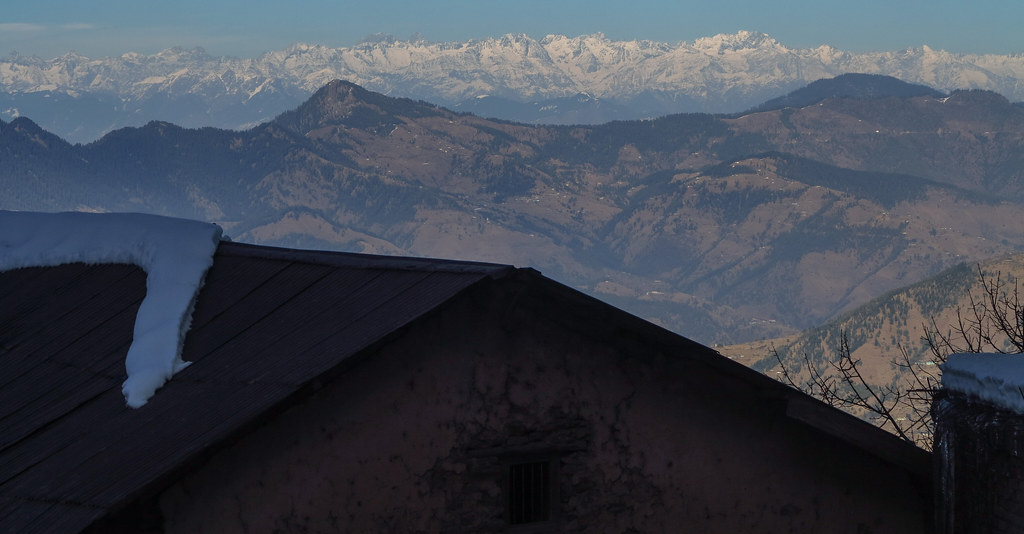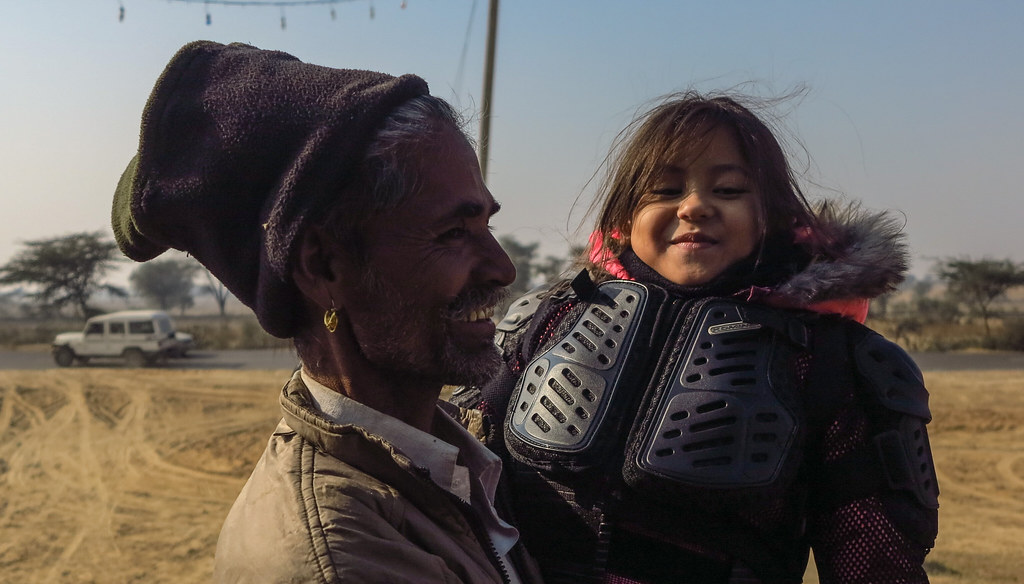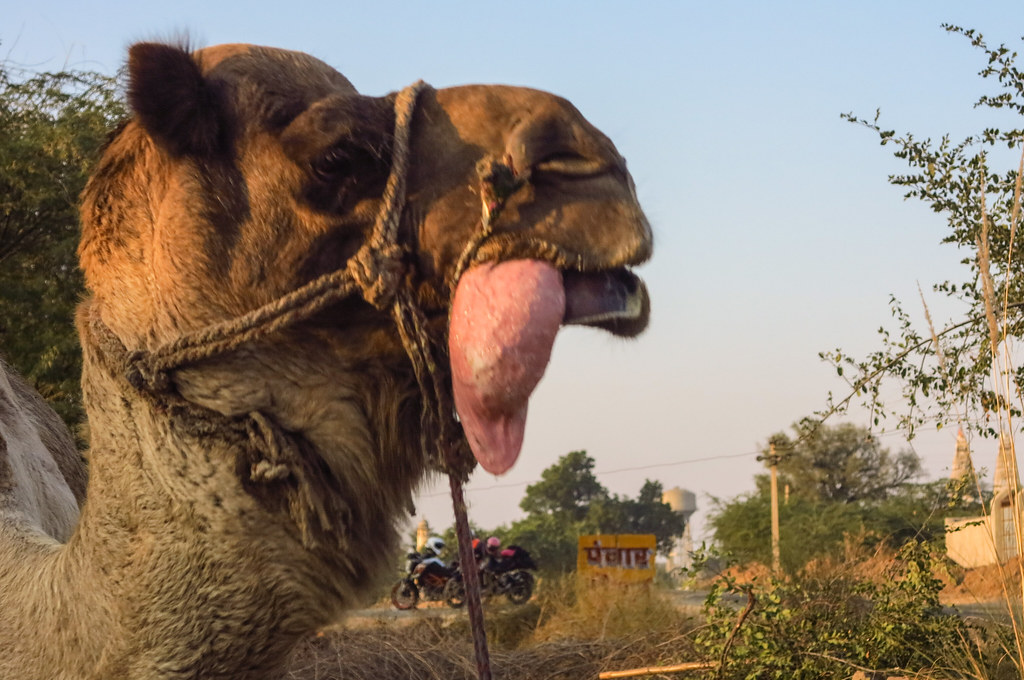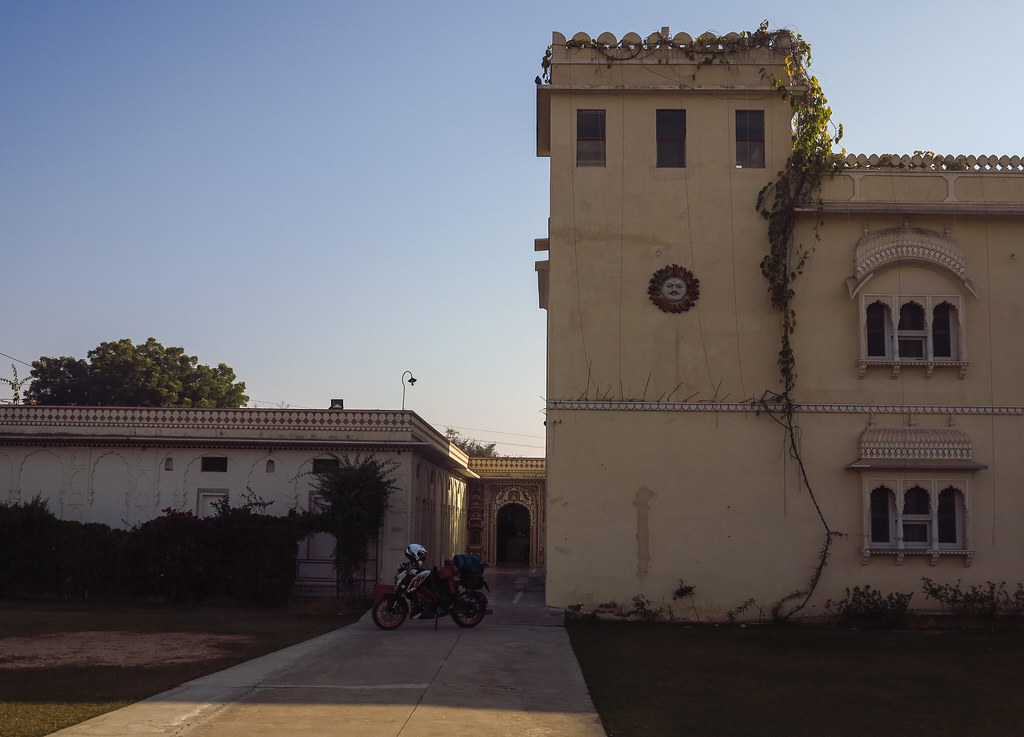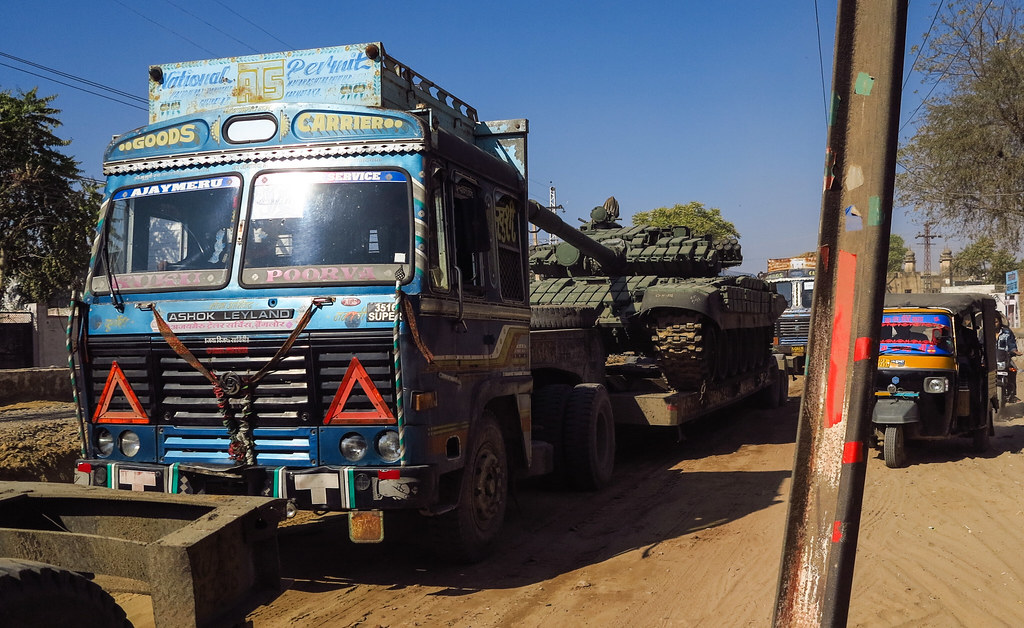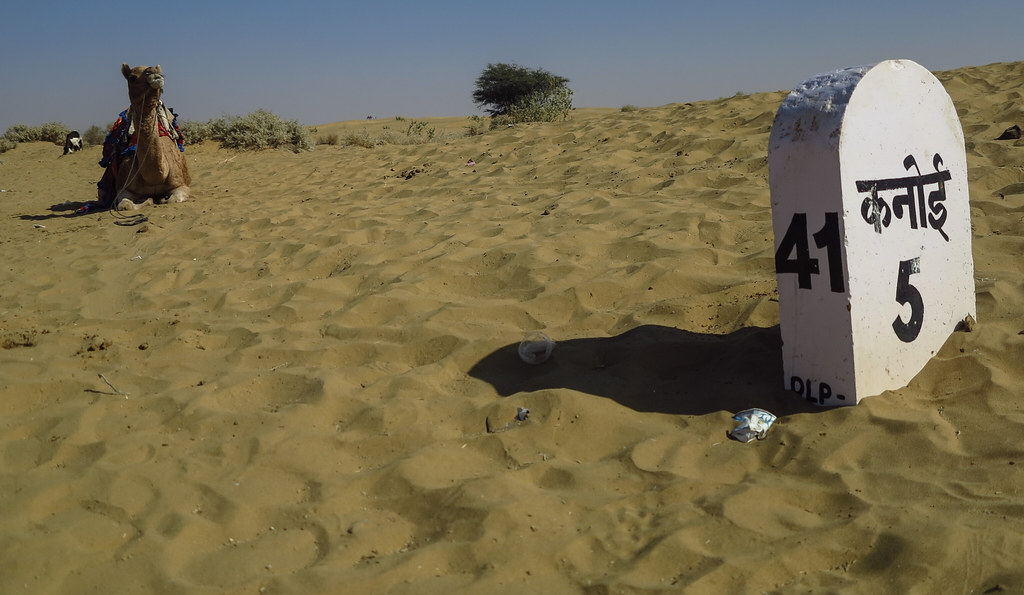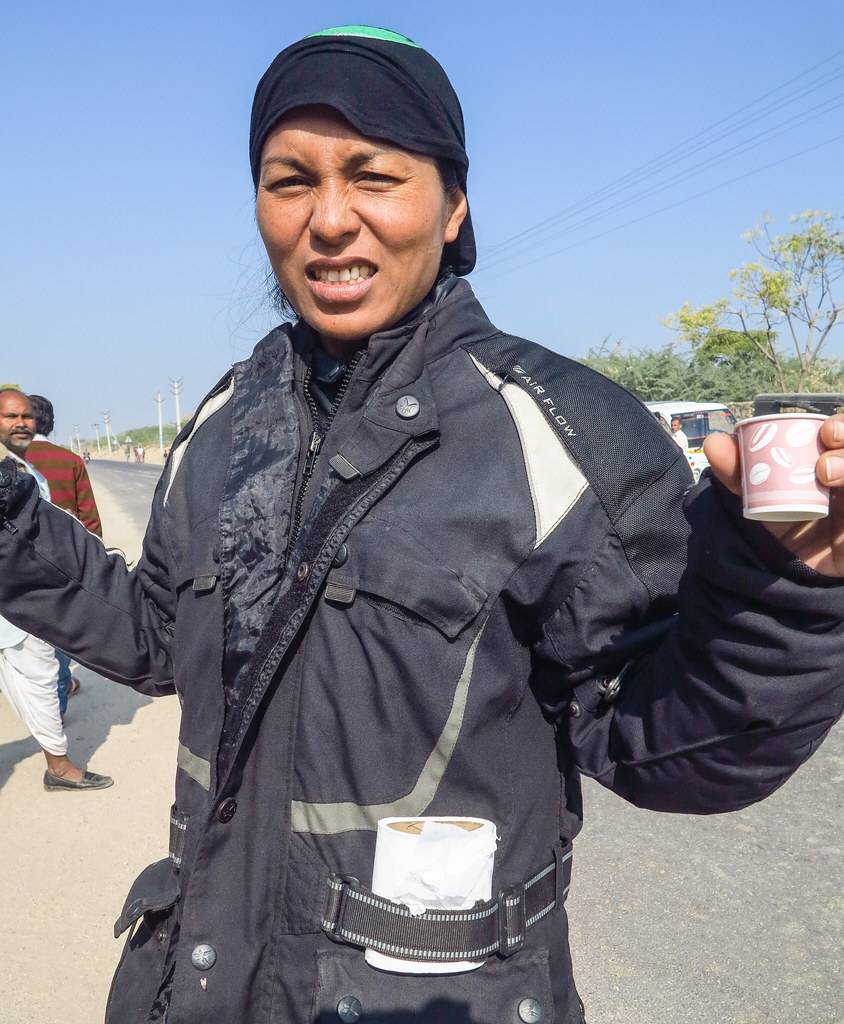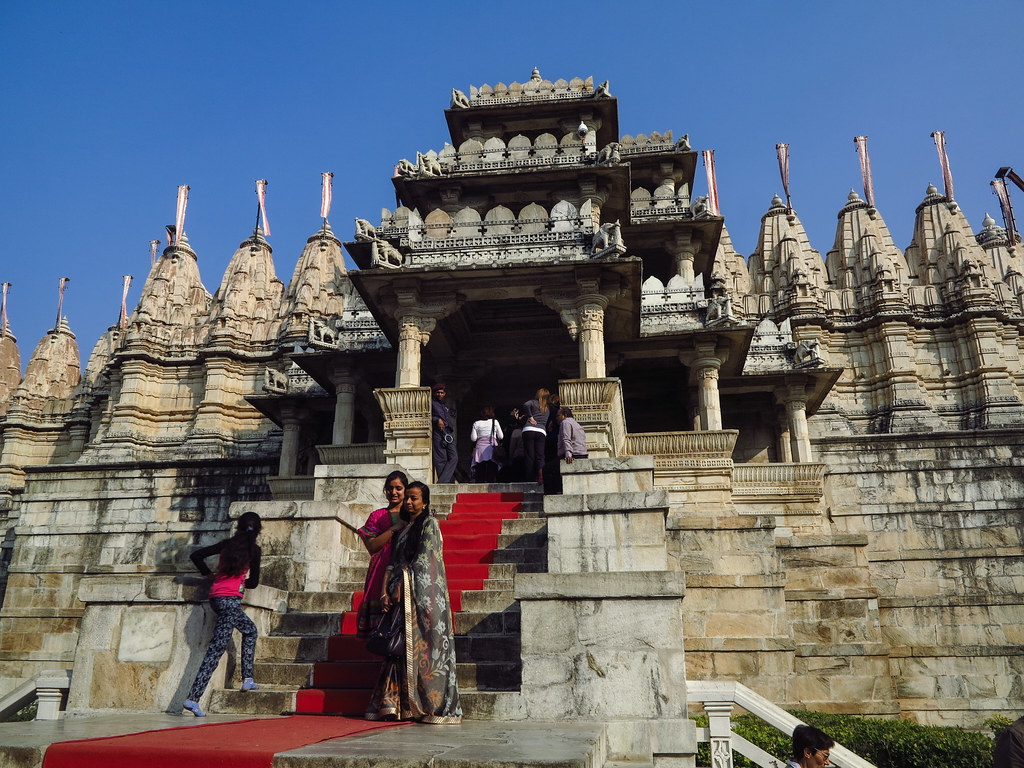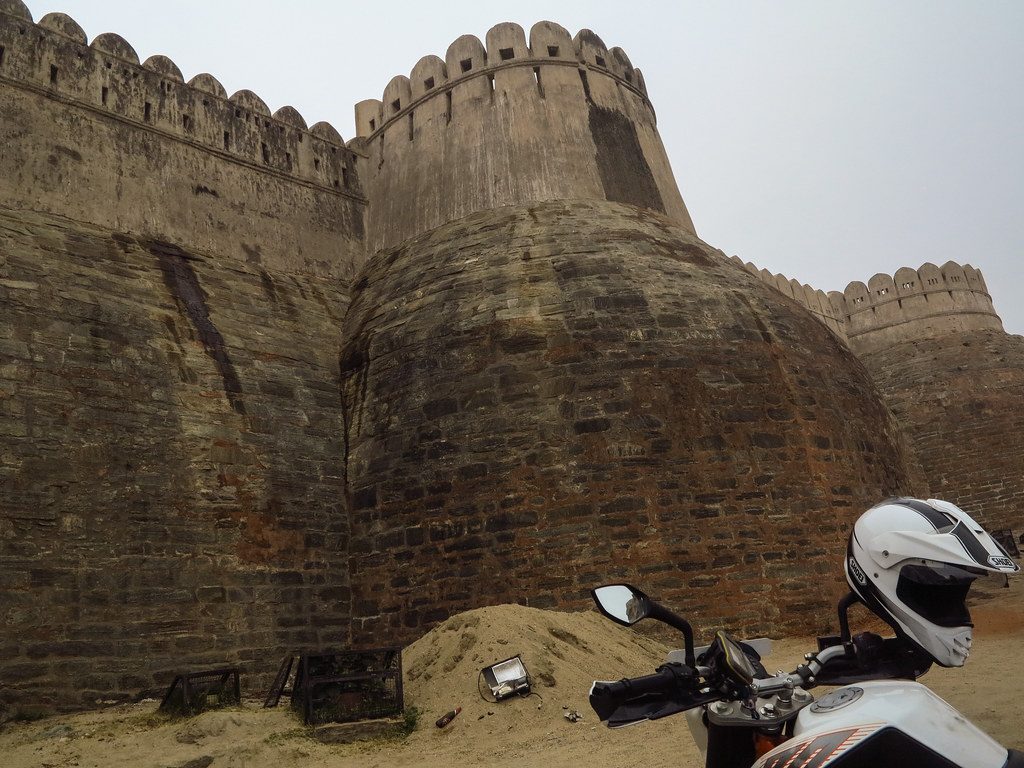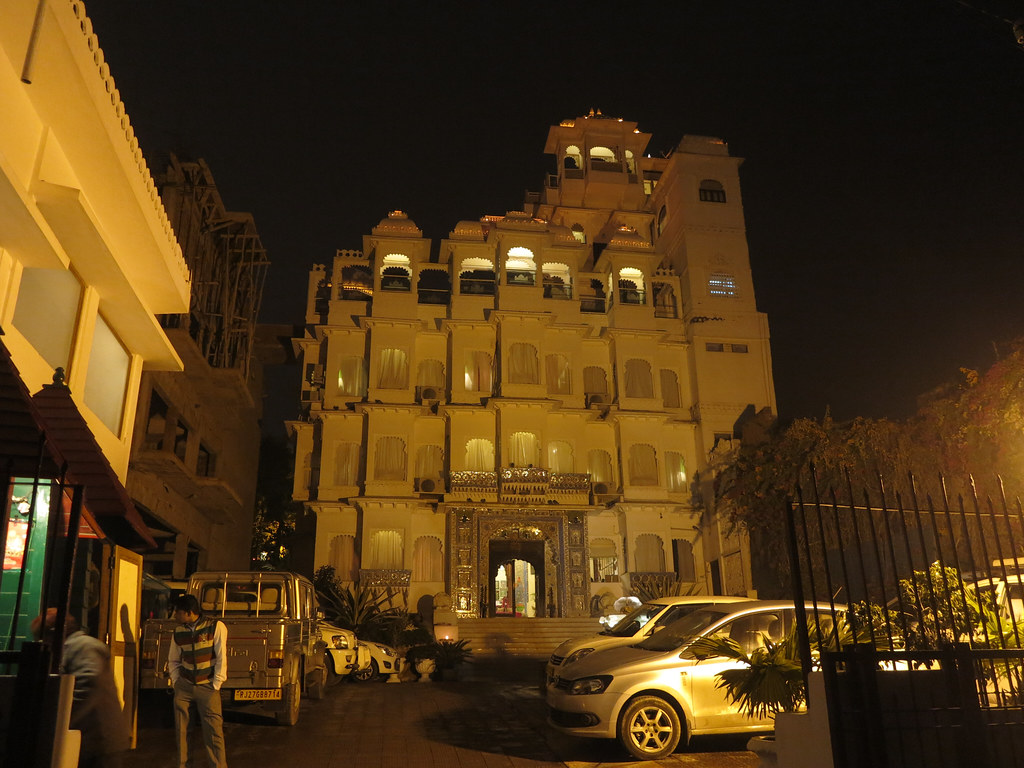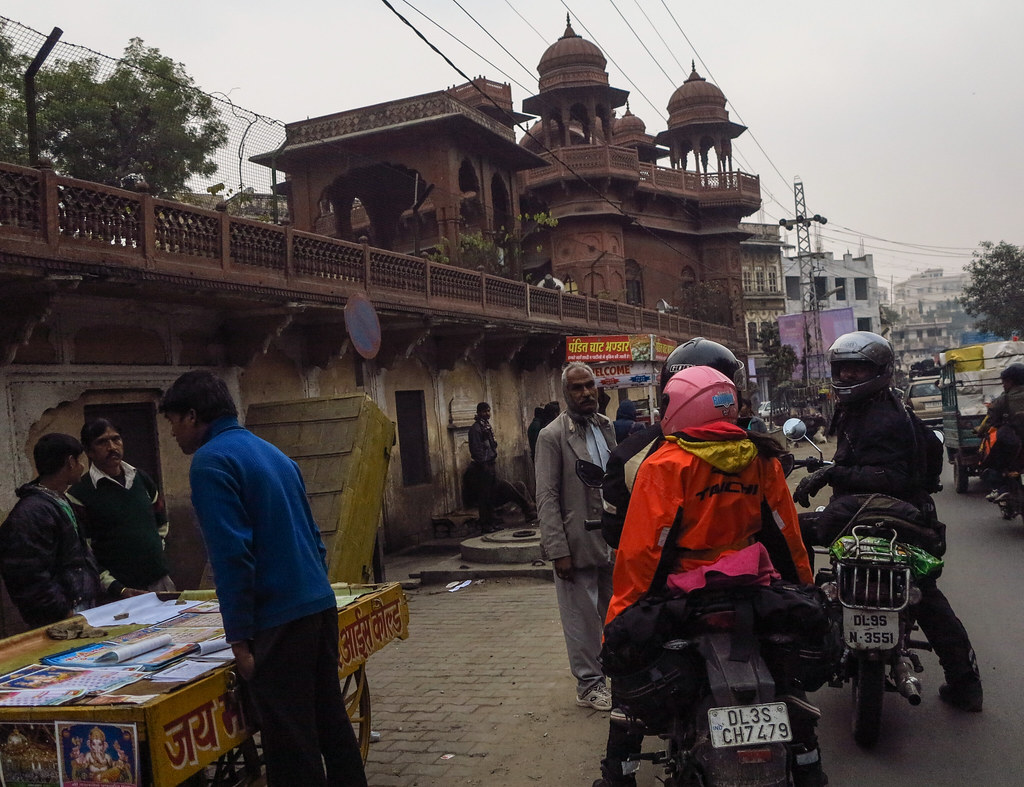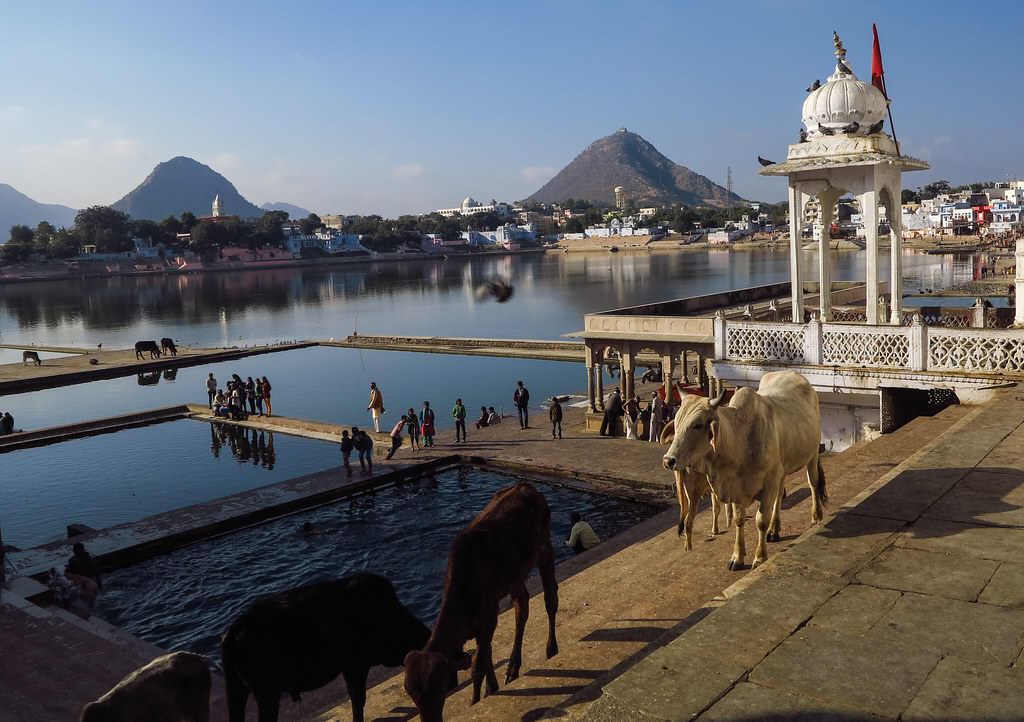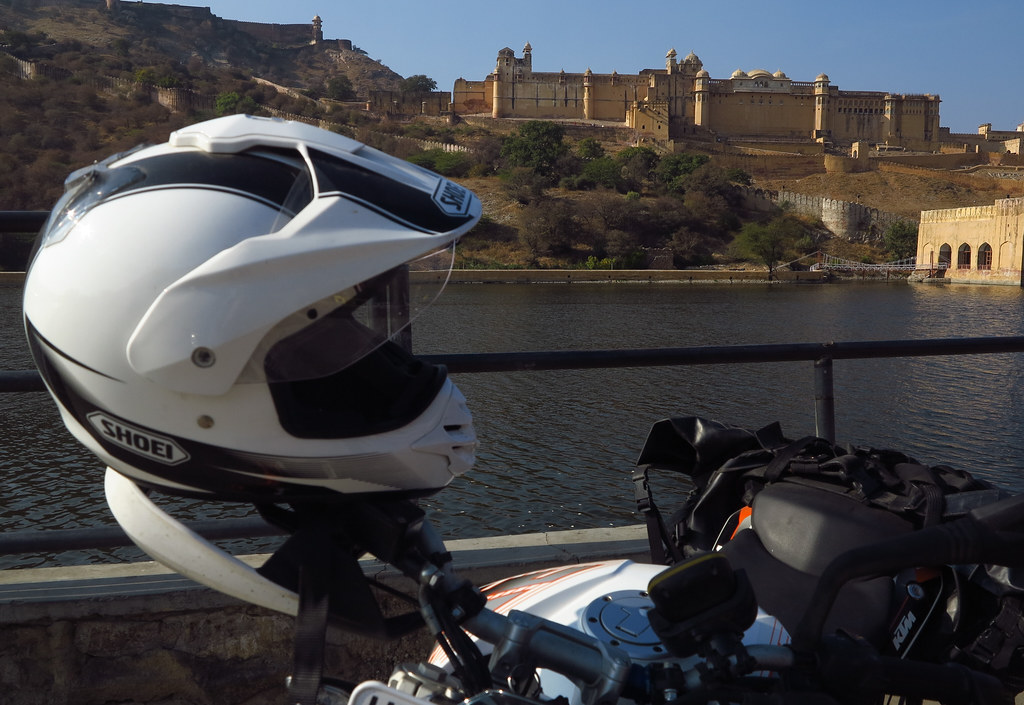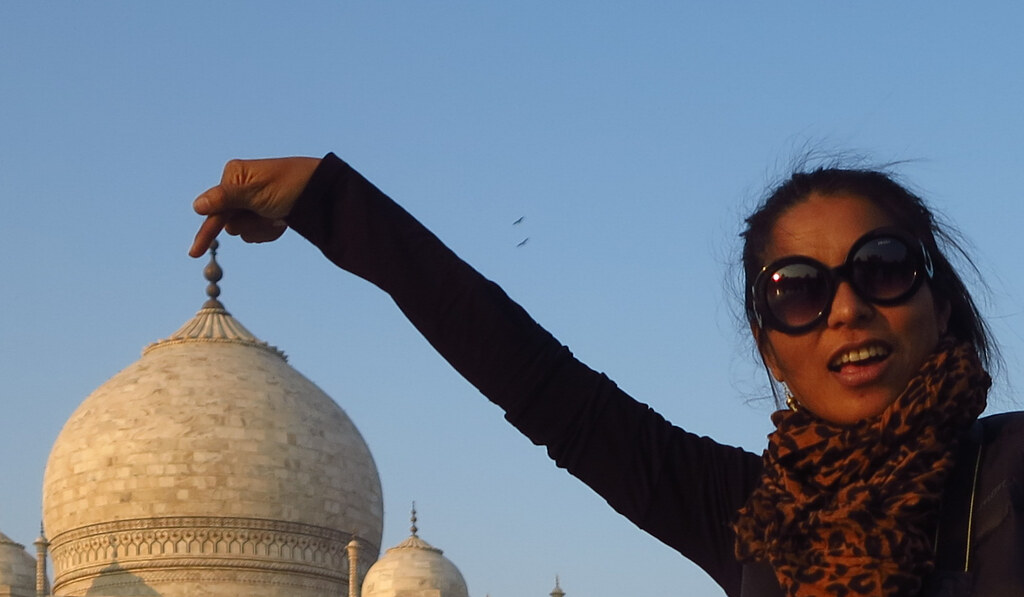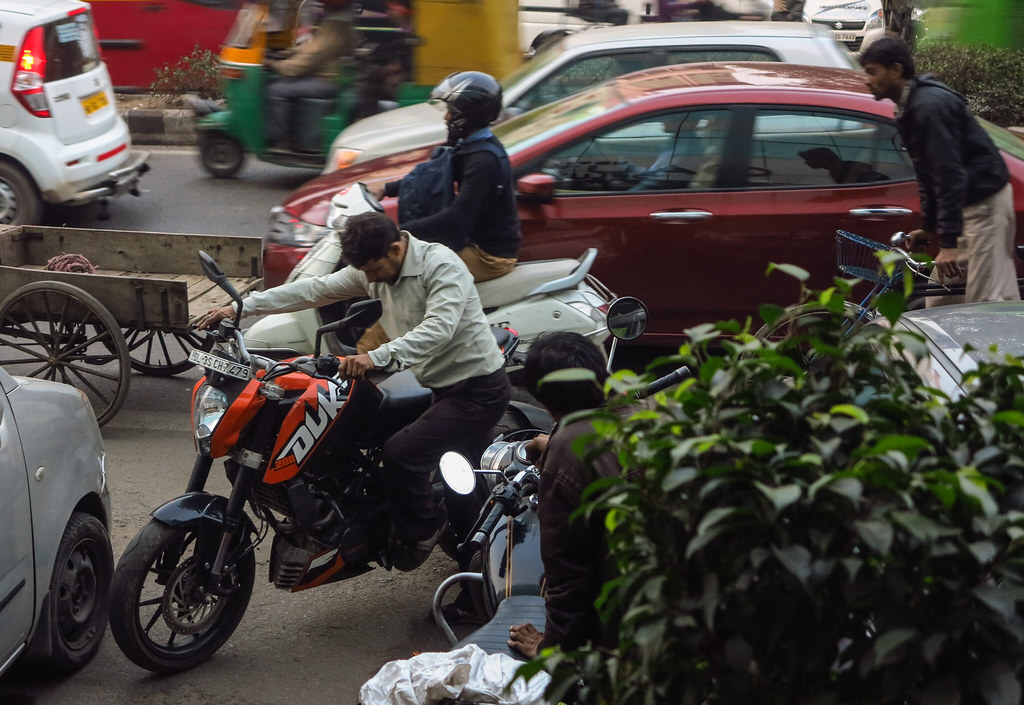With an Indian motorcycle tour you get some serious history too. Rajasthan – The Kingdom of ancient Maharaja’s and giant forts as big as a city.
We finally get the bikes loaded with luggage, looks like the Wolfman Saddlebags will work with out racks
Som picked up a nail…..50 bht and the waxy string repair all done in 3 minutes
Up into the Himalayas & a glimpse of the Shimla train headed the same way
A real accomplishment all those years ago getting this train up the mountain
Slowly but surely getting there
So the mission first was to find snow as near to Shimla as we could, then head south to Rajasthan. Luck was on our side, we only had to go 15km north of Shimla & it was pretty snowy around Kufri
Abouit 40km north of Kufri, the road is closed, all the passes are now blocked by snow until March/ April, the only way to Leh is to fly there
Snow topped mountains to the north
Kufri area not so bad
Mission accomplished, time to head back down to Shimla, this place looked like it has seen some snow storm damage
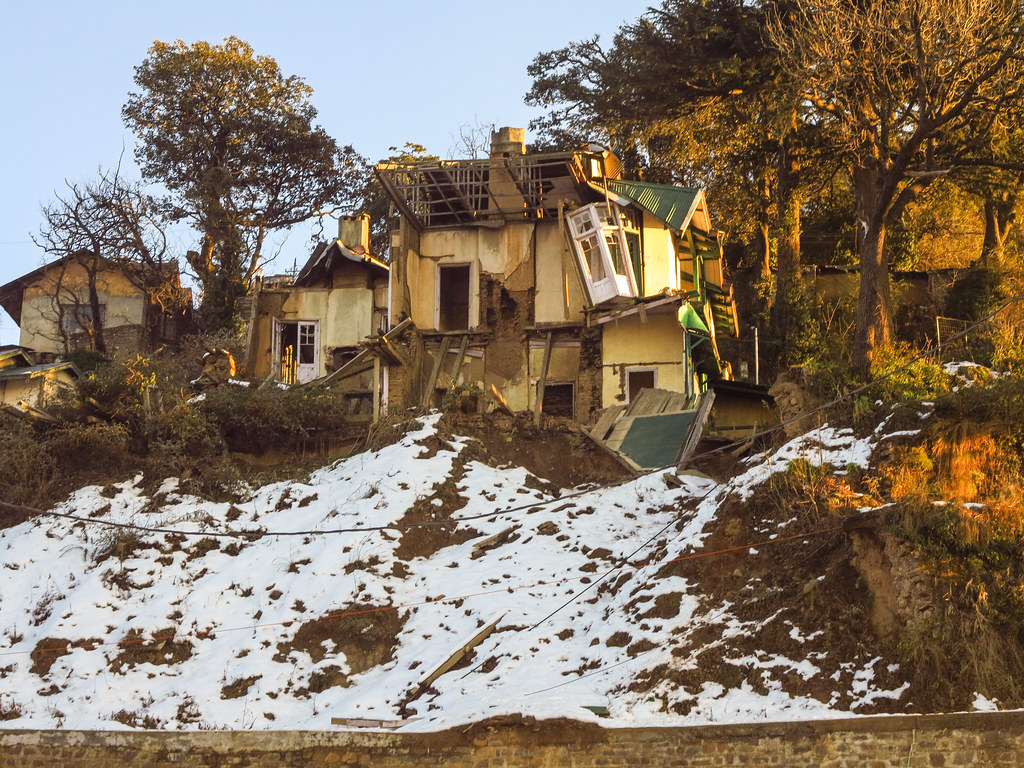 IMG_9911_edited by Triangle Golden 007, on Flickr
IMG_9911_edited by Triangle Golden 007, on Flickr
Plenty of hotels in Shimla, high season, many were full
 IMG_9908_edited by Triangle Golden 007, on Flickr
IMG_9908_edited by Triangle Golden 007, on Flickr
An hour of light left, time for a quick look around Shimla
 IMG_9916_edited by Triangle Golden 007, on Flickr
IMG_9916_edited by Triangle Golden 007, on Flickr
The governing retreat for the British in colonial times, to hide from the brutal Delhi summer heat, the British influence can be seen everywhere
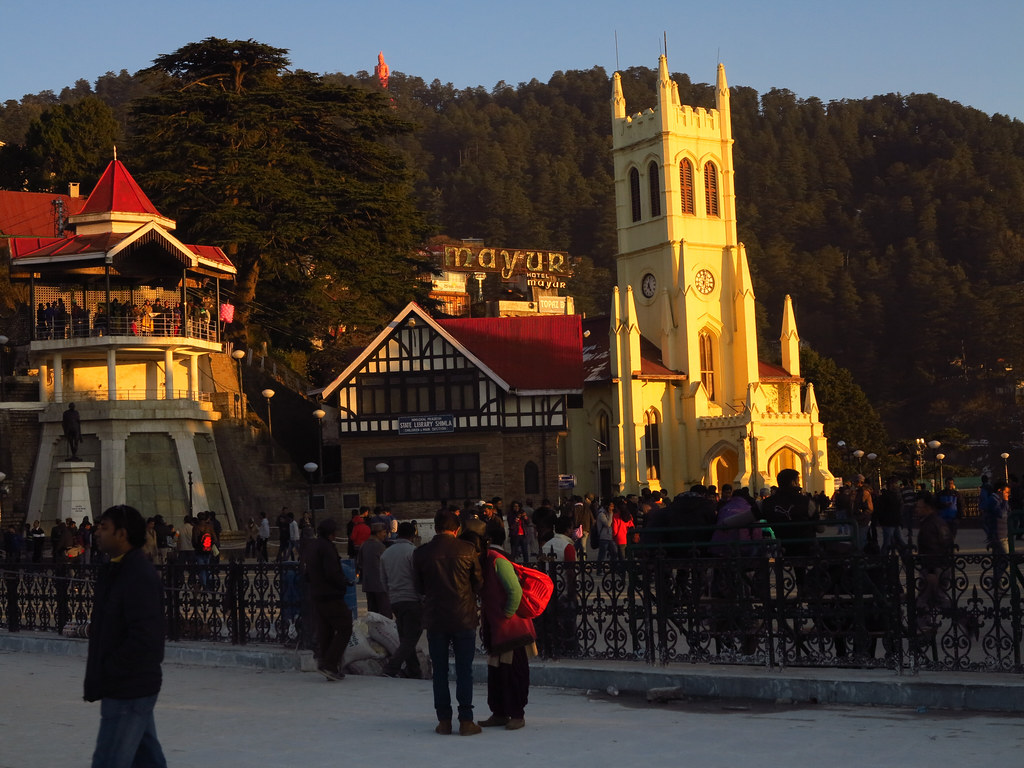 IMG_9920_edited by Triangle Golden 007, on Flickr
IMG_9920_edited by Triangle Golden 007, on Flickr
Snow capped mountains in the distance to the north
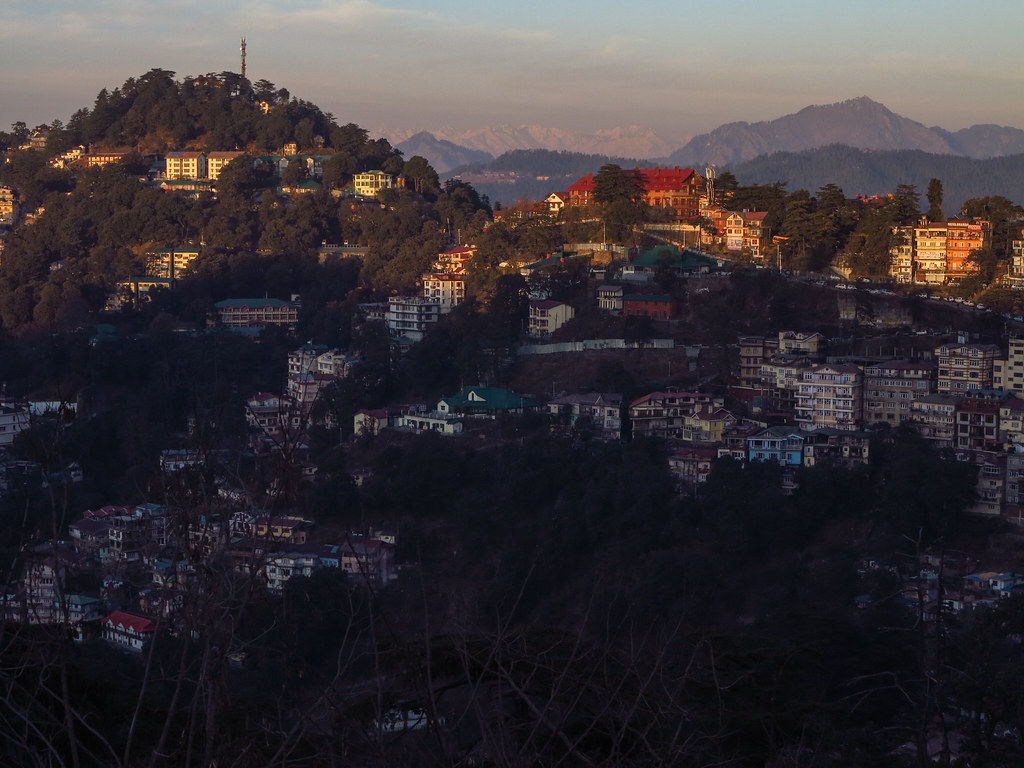 IMG_9921_edited by Triangle Golden 007, on Flickr
IMG_9921_edited by Triangle Golden 007, on Flickr
Shimla is infested with monkeys, this guy biting through a Pepsi bottle for its contents
 IMG_9927_edited by Triangle Golden 007, on Flickr
IMG_9927_edited by Triangle Golden 007, on Flickr
A very cool mountain town for sure
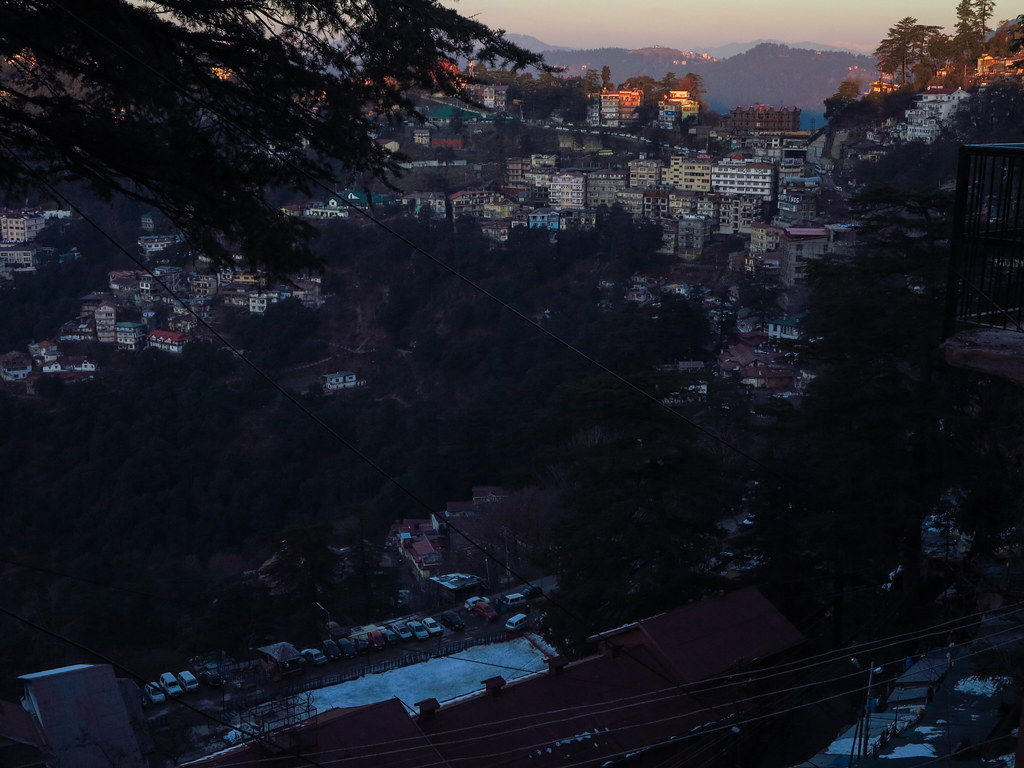 IMG_9929_edited by Triangle Golden 007, on Flickr
IMG_9929_edited by Triangle Golden 007, on Flickr
 IMG_9931_edited by Triangle Golden 007, on Flickr
IMG_9931_edited by Triangle Golden 007, on Flickr
Blood red sunset reflecting off the shop houses
 IMG_9933_edited by Triangle Golden 007, on Flickr
IMG_9933_edited by Triangle Golden 007, on Flickr
Bloody freezing, cant wait to head south now that we found thge snow
 IMG_9936_edited by Triangle Golden 007, on Flickr
IMG_9936_edited by Triangle Golden 007, on Flickr
Shimla street food
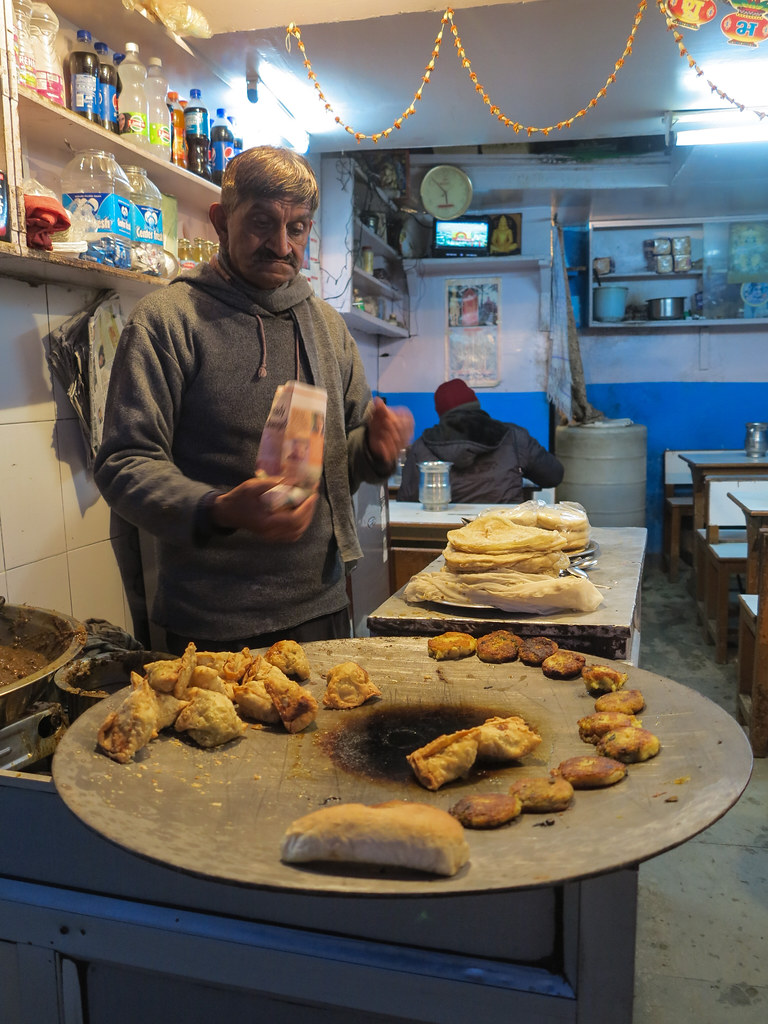 IMG_9939_edited by Triangle Golden 007, on Flickr
IMG_9939_edited by Triangle Golden 007, on Flickr
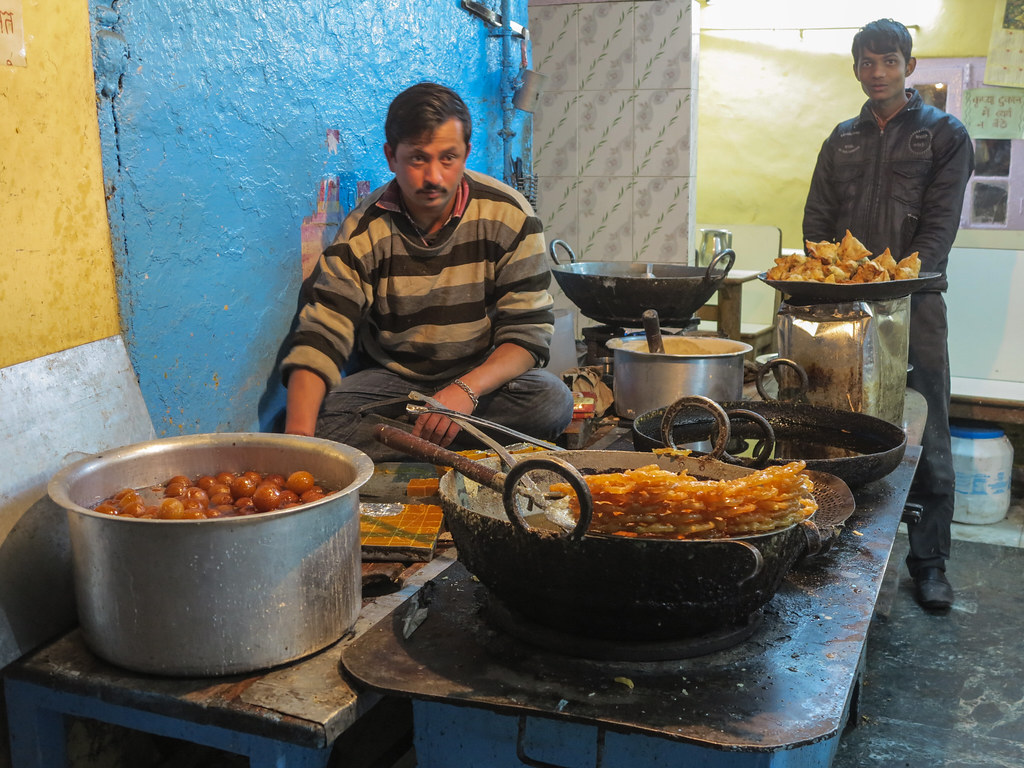 IMG_9940_edited by Triangle Golden 007, on Flickr
IMG_9940_edited by Triangle Golden 007, on Flickr
 IMG_9941_edited by Triangle Golden 007, on Flickr
IMG_9941_edited by Triangle Golden 007, on Flickr
 IMG_9943_edited by Triangle Golden 007, on Flickr
IMG_9943_edited by Triangle Golden 007, on Flickr
Dusk and the start of the Himalayan mountains in the backdrop
 IMG_9948_edited by Triangle Golden 007, on Flickr
IMG_9948_edited by Triangle Golden 007, on Flickr
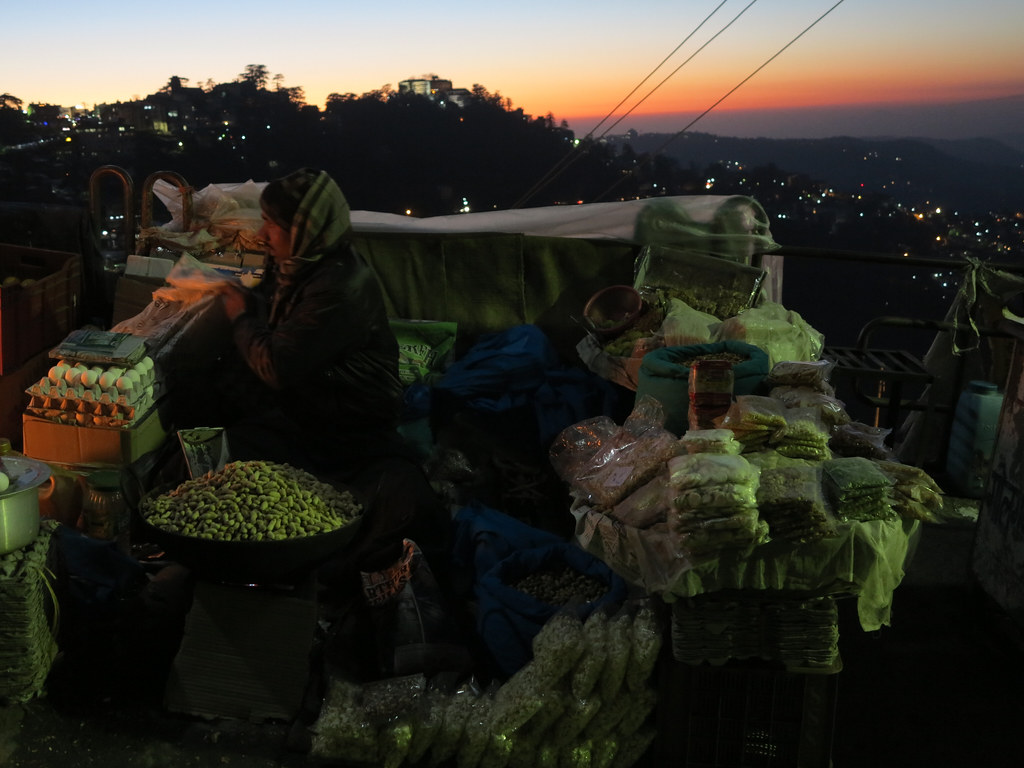 IMG_9949_edited by Triangle Golden 007, on Flickr
IMG_9949_edited by Triangle Golden 007, on Flickr
 IMG_9950_edited by Triangle Golden 007, on Flickr
IMG_9950_edited by Triangle Golden 007, on Flickr
Hopefully this will be our only freezing night of the trip

From Shimla, the quickest way south to Rajasthan, is to take the highway back south to Delhi, then a ring road around Delhi, then south on the highway to Agra. There, peel off and head west and you get in Rajasthan.
This didnt look much fun, so we thought we’d try something a little different.
Absolutely, bloody freezing driving through the fog, it actually felt significantly colder than Shimla. Some hot tea to try bring the hands back to life
 IMG_0009_edited by Triangle Golden 007, on Flickr
IMG_0009_edited by Triangle Golden 007, on Flickr
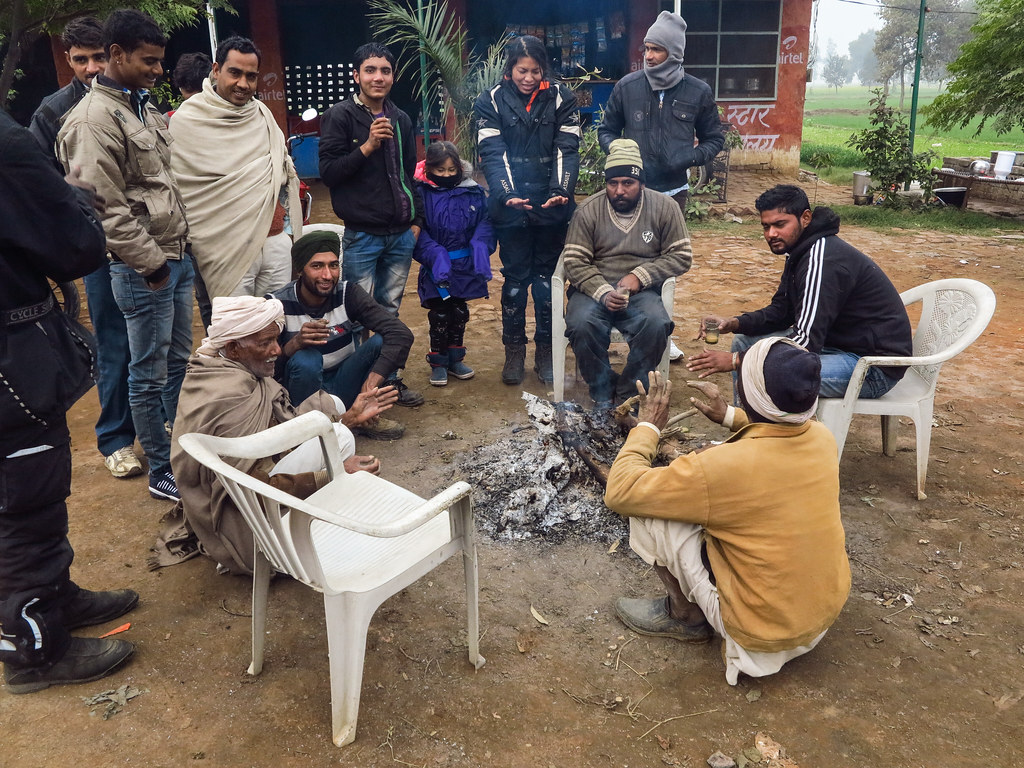 IMG_0010_edited by Triangle Golden 007, on Flickr
IMG_0010_edited by Triangle Golden 007, on Flickr
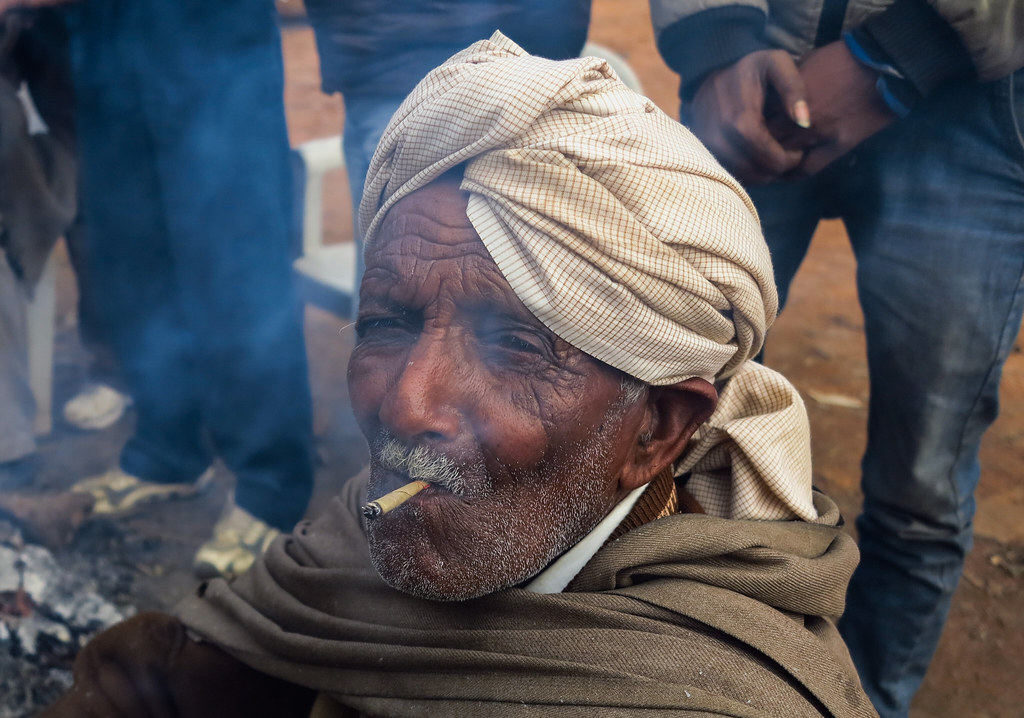 IMG_0011_edited by Triangle Golden 007, on Flickr
IMG_0011_edited by Triangle Golden 007, on Flickr
4km to Kaithal, lets hope there’s a hotel with hot water
 IMG_0013_edited by Triangle Golden 007, on Flickr
IMG_0013_edited by Triangle Golden 007, on Flickr
Great earrings on this guy at our lunch restaurant
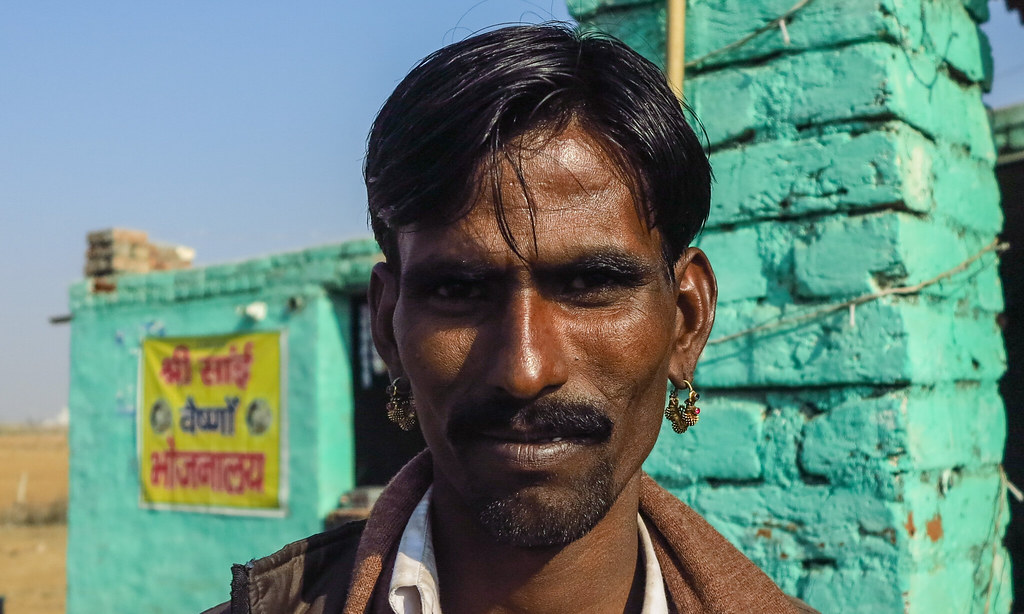 IMG_0015_edited by Triangle Golden 007, on Flickr
IMG_0015_edited by Triangle Golden 007, on Flickr

This one too
 IMG_0016_edited by Triangle Golden 007, on Flickr
IMG_0016_edited by Triangle Golden 007, on Flickr
Was a bit wary of the road side restaurants at first, so far no toilet problems and everything seems very clean. Food consists of a cream and butter based gravies/ sauces, mostly veterinarian. Lots of paneer/ cottage cheese dishes. On the road, no nan bread, chipati bread is everywhere which is quick to make
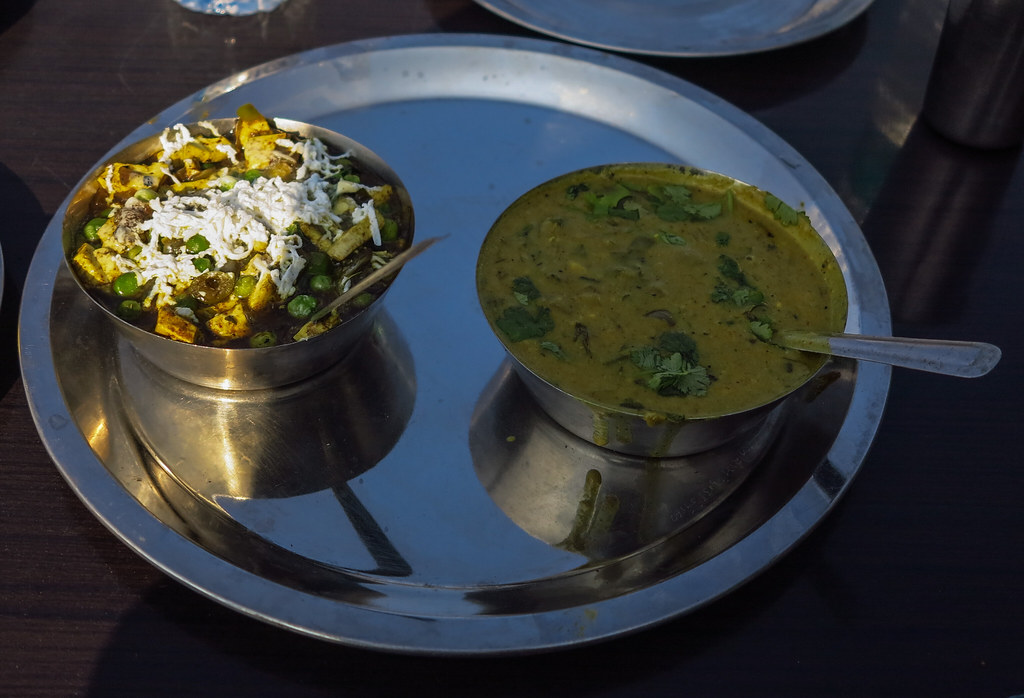 IMG_0019_edited by Triangle Golden 007, on Flickr
IMG_0019_edited by Triangle Golden 007, on Flickr
Easy to get salads everywhere
 IMG_0021_edited by Triangle Golden 007, on Flickr
IMG_0021_edited by Triangle Golden 007, on Flickr
Warming in the afternoon sun like lizards
 IMG_0022_edited by Triangle Golden 007, on Flickr
IMG_0022_edited by Triangle Golden 007, on Flickr
I thought these were nomads, but disappointingly turned out to be road workers!!
 IMG_0023_edited by Triangle Golden 007, on Flickr
IMG_0023_edited by Triangle Golden 007, on Flickr
Into Rajasthan Province, its immediatly warmer and the feel of the desert starts with sand roadside
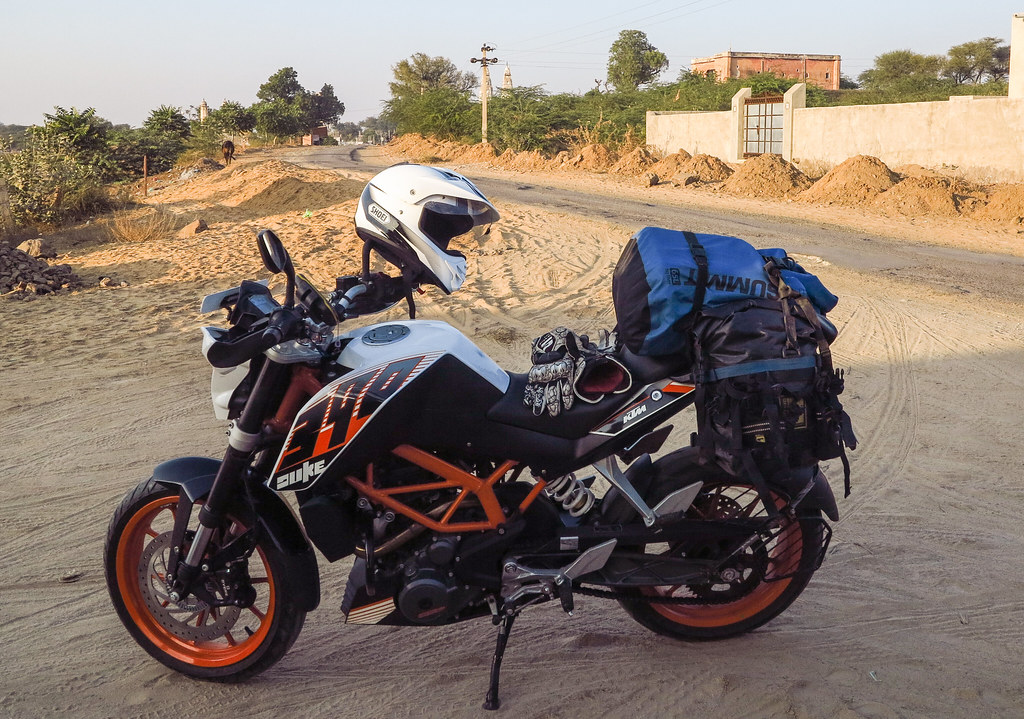 IMG_0025_edited by Triangle Golden 007, on Flickr
IMG_0025_edited by Triangle Golden 007, on Flickr
Camels are now everywhere replacing the cows as hauling machines which were further north
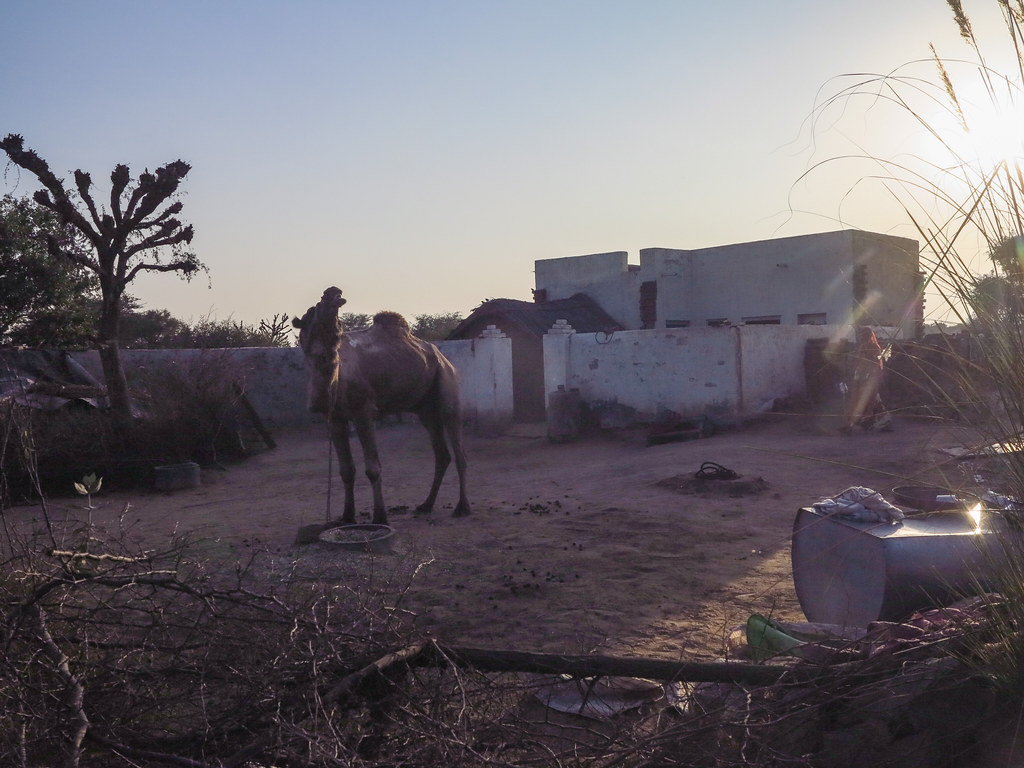 IMG_0026_edited by Triangle Golden 007, on Flickr
IMG_0026_edited by Triangle Golden 007, on Flickr
 IMG_0027_edited by Triangle Golden 007, on Flickr
IMG_0027_edited by Triangle Golden 007, on Flickr
Roads are now pretty nasty in places, especially around the high traffic villages
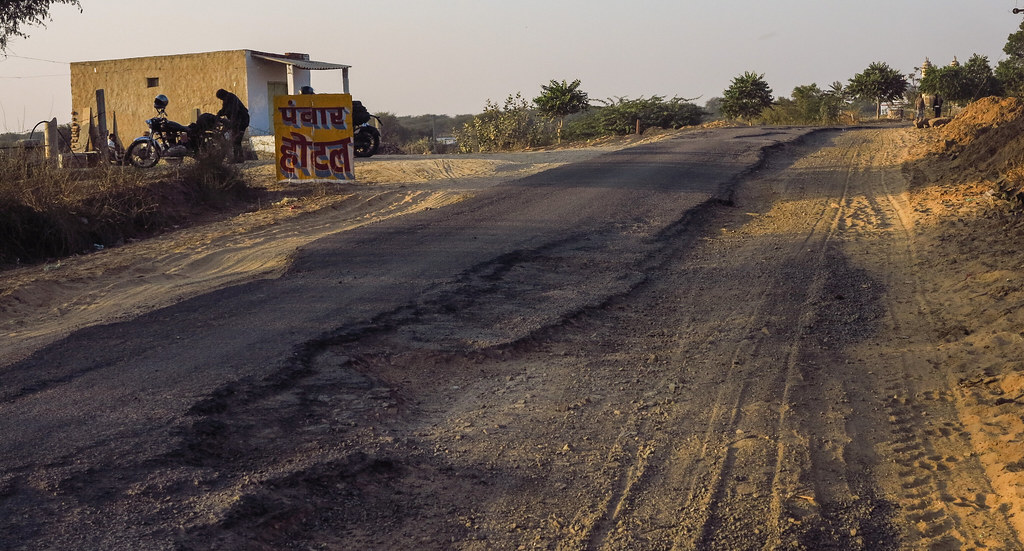 IMG_0028_edited by Triangle Golden 007, on Flickr
IMG_0028_edited by Triangle Golden 007, on Flickr
 IMG_0029_edited by Triangle Golden 007, on Flickr
IMG_0029_edited by Triangle Golden 007, on Flickr
His tongue was making me queezy
Ok hotel for the night in Kaithal, next day west towards Jhunjhunu, we’re now entering the the world of ancient palaces
 IMG_0034_edited by Triangle Golden 007, on Flickr
IMG_0034_edited by Triangle Golden 007, on Flickr
Our own palace for the night in Jhunjhunu
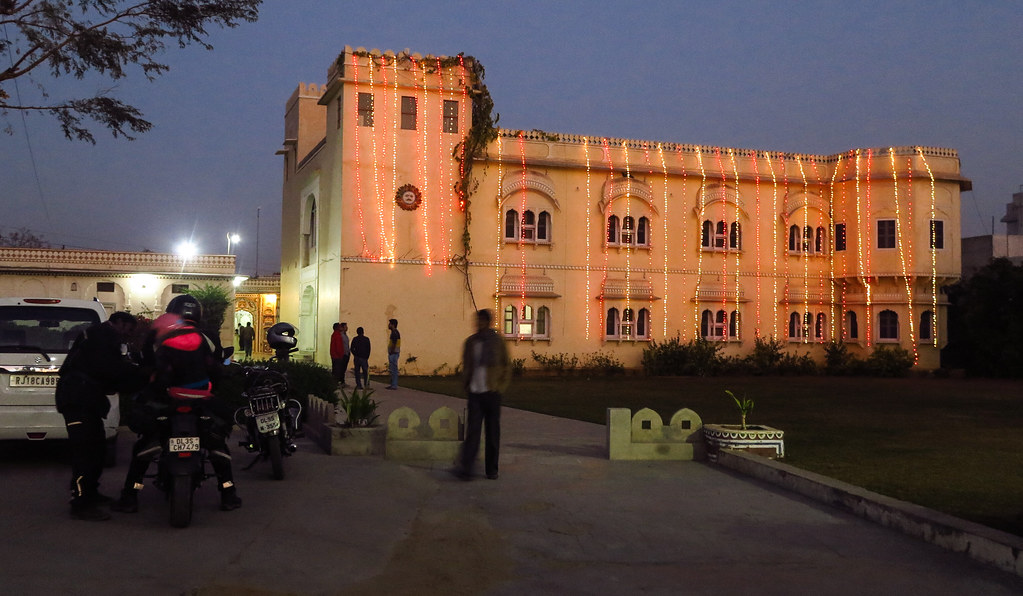 IMG_0035_edited by Triangle Golden 007, on Flickr
IMG_0035_edited by Triangle Golden 007, on Flickr
Needed some extra blankets, still chilly
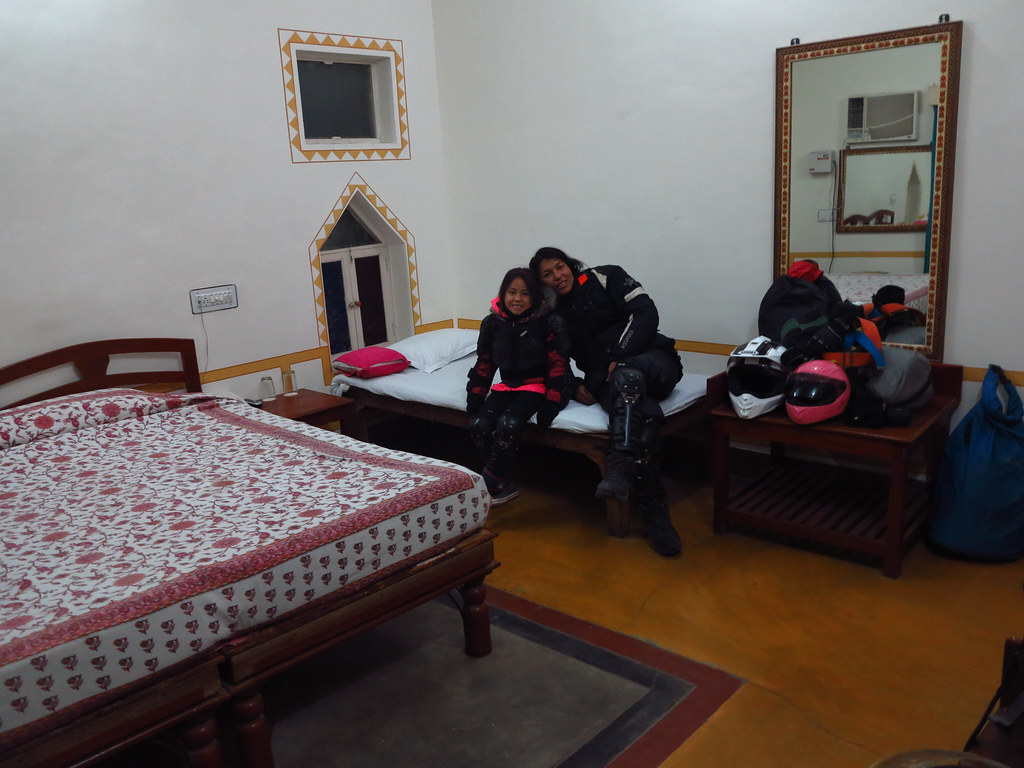 IMG_0037_edited by Triangle Golden 007, on Flickr
IMG_0037_edited by Triangle Golden 007, on Flickr
Beautiful setting, great place for our introduction to Rajashtan
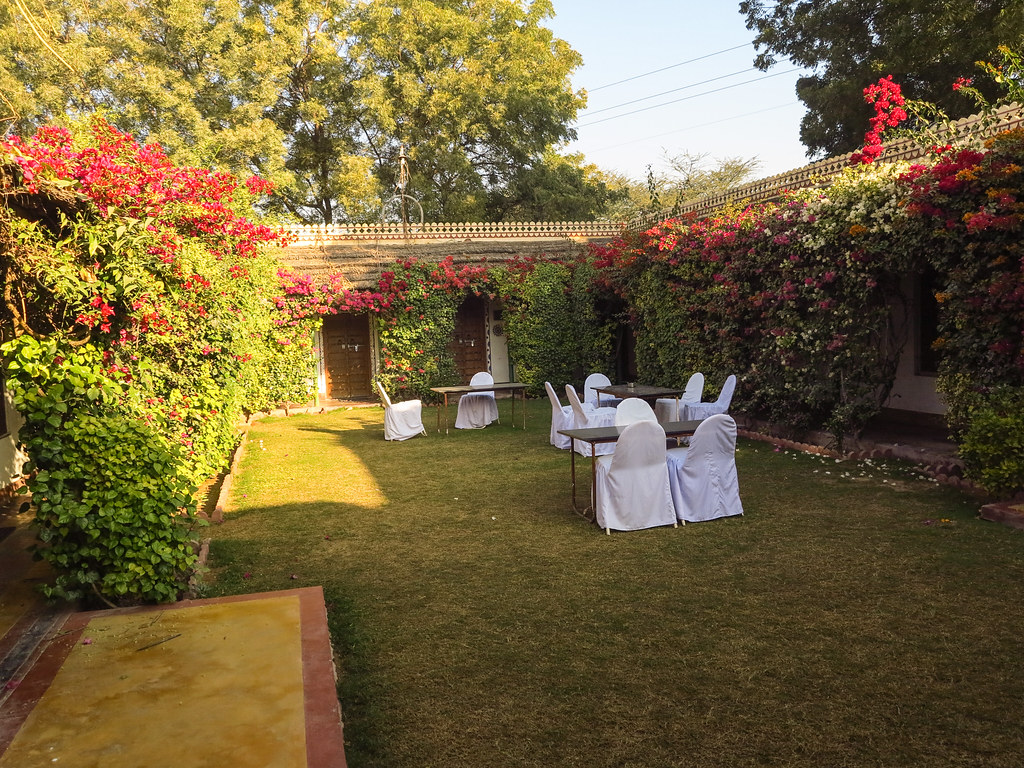 IMG_0038_edited by Triangle Golden 007, on Flickr
IMG_0038_edited by Triangle Golden 007, on Flickr
Mandawa – This has been one of my favorite stops so far. An ancient trading town on the old silk road, oozing with history
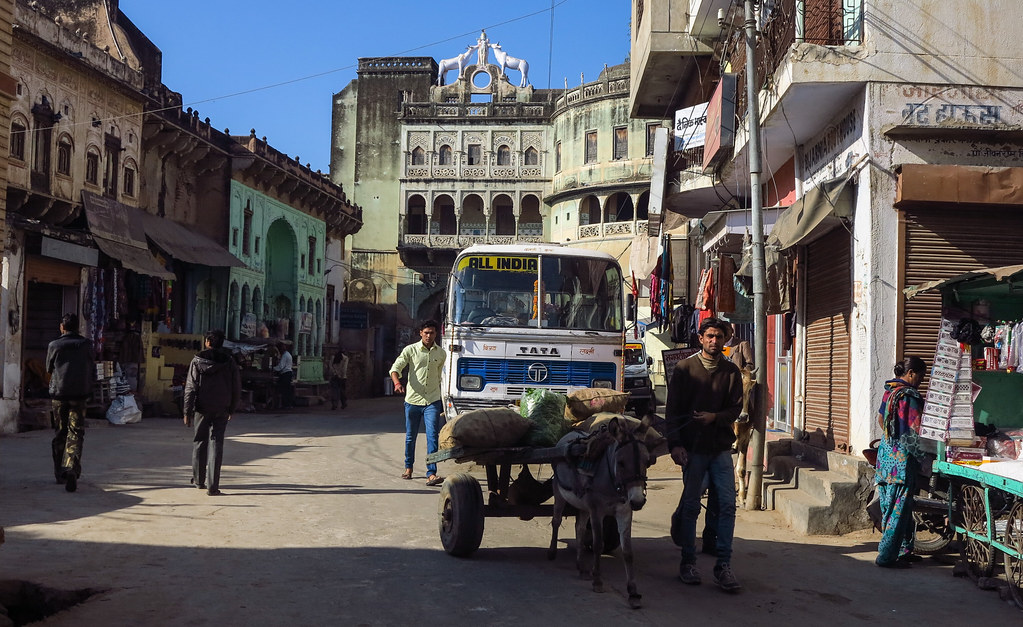 IMG_0040_edited by Triangle Golden 007, on Flickr
IMG_0040_edited by Triangle Golden 007, on Flickr
The City of Mandawa[1] was made a thikana in the mid of 18th century by theBhojraj Ji Kasubsub clan of Shekhawat Rajputs. About the origin of this town there have been earlier references to Mandu Jat as founder of the Mandawa village. He first established a dhani (hamlet) and dug a well here, which was completed on savan badi 5 samvat 1797 (1740 AD) (source – Shekhawati Bodh, Mandawa special issue, July 2005)
 IMG_0041_edited by Triangle Golden 007, on Flickr
IMG_0041_edited by Triangle Golden 007, on Flickr
Fabulous forts and Royal homes
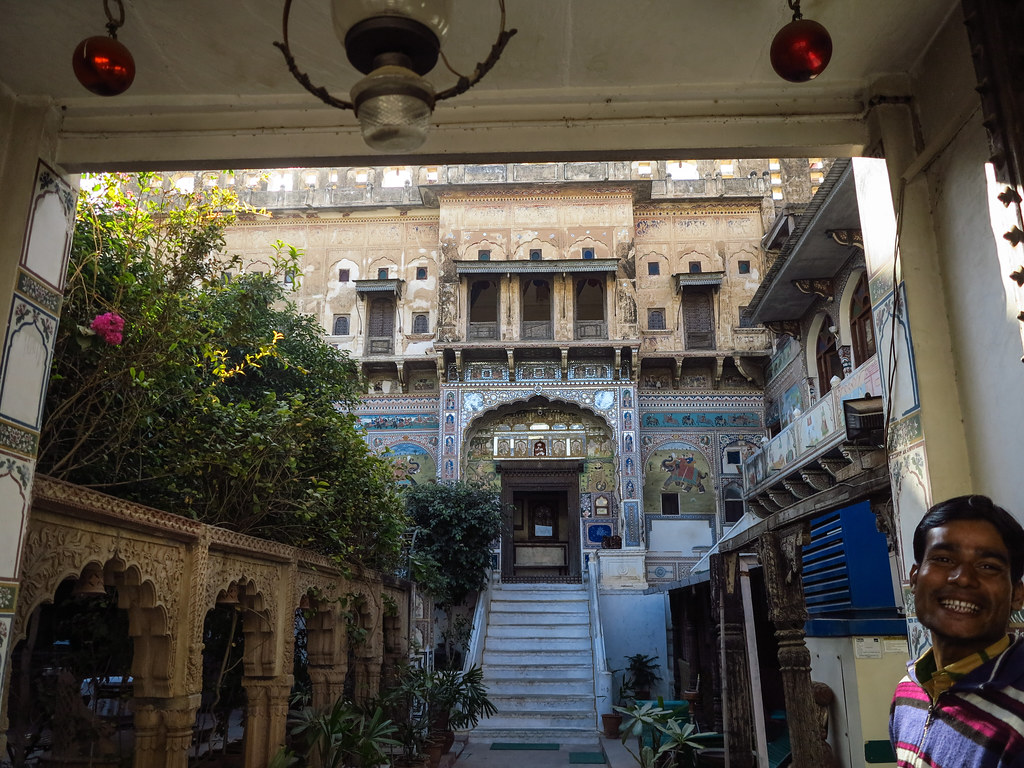 IMG_0047_edited by Triangle Golden 007, on Flickr
IMG_0047_edited by Triangle Golden 007, on Flickr
Here a pictorial story of a wedding ceremony on one of the buildings
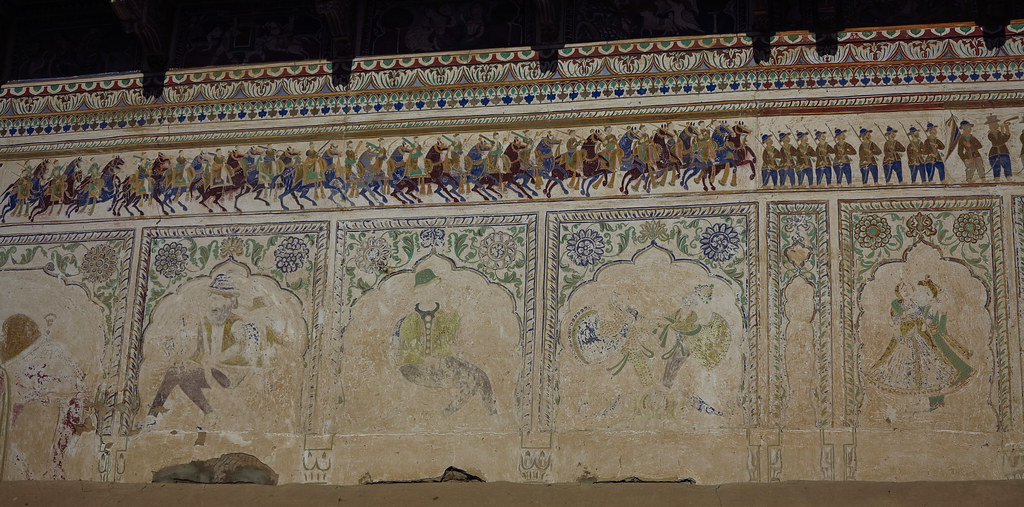 IMG_0053_edited by Triangle Golden 007, on Flickr
IMG_0053_edited by Triangle Golden 007, on Flickr
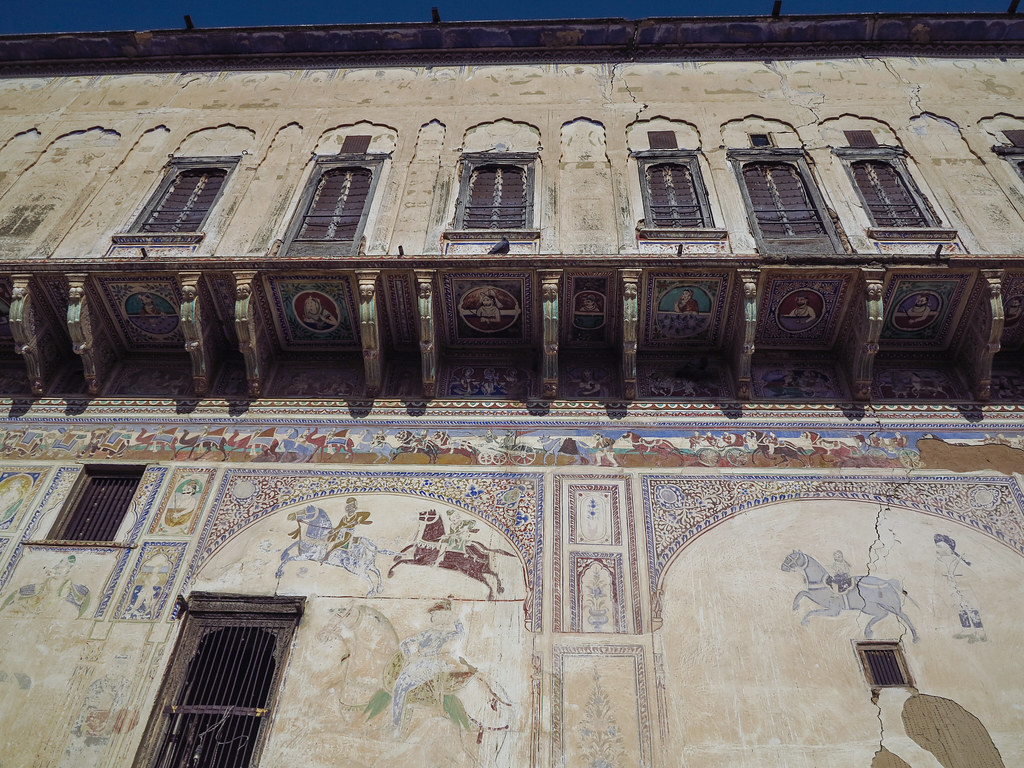 IMG_0055_edited by Triangle Golden 007, on Flickr
IMG_0055_edited by Triangle Golden 007, on Flickr
 IMG_0056_edited by Triangle Golden 007, on Flickr
IMG_0056_edited by Triangle Golden 007, on Flickr
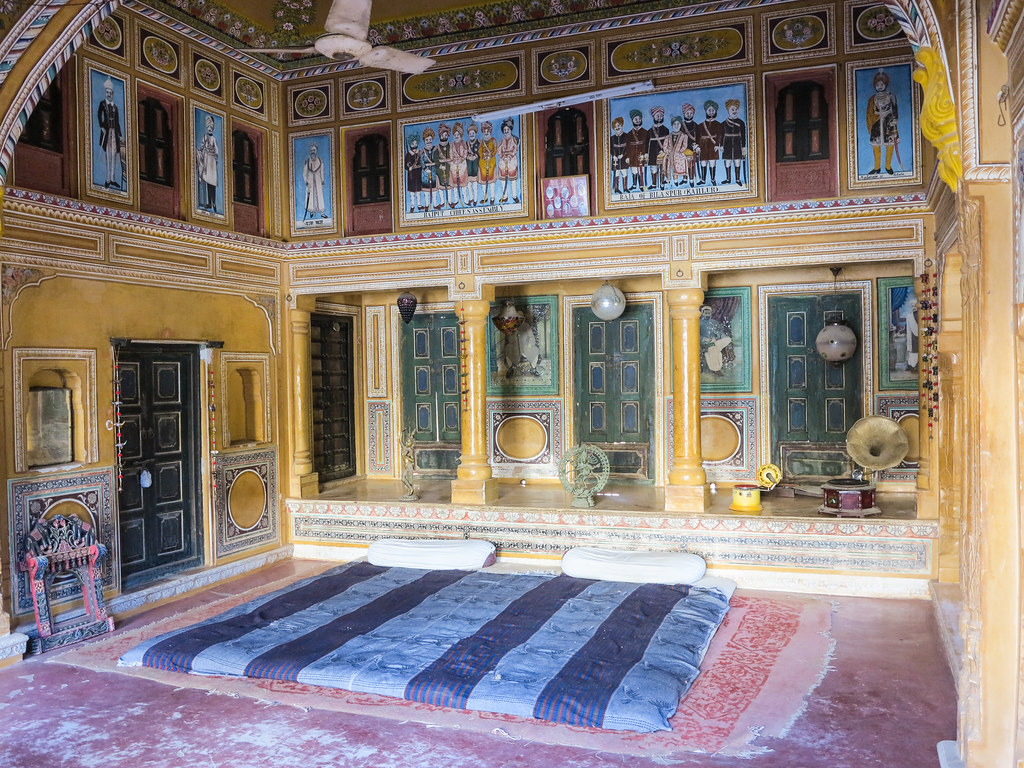 IMG_0060_edited by Triangle Golden 007, on Flickr
IMG_0060_edited by Triangle Golden 007, on Flickr
Magnificent detail
 IMG_0061_edited by Triangle Golden 007, on Flickr
IMG_0061_edited by Triangle Golden 007, on Flickr
 IMG_0064_edited by Triangle Golden 007, on Flickr
IMG_0064_edited by Triangle Golden 007, on Flickr
 IMG_0066_edited by Triangle Golden 007, on Flickr
IMG_0066_edited by Triangle Golden 007, on Flickr
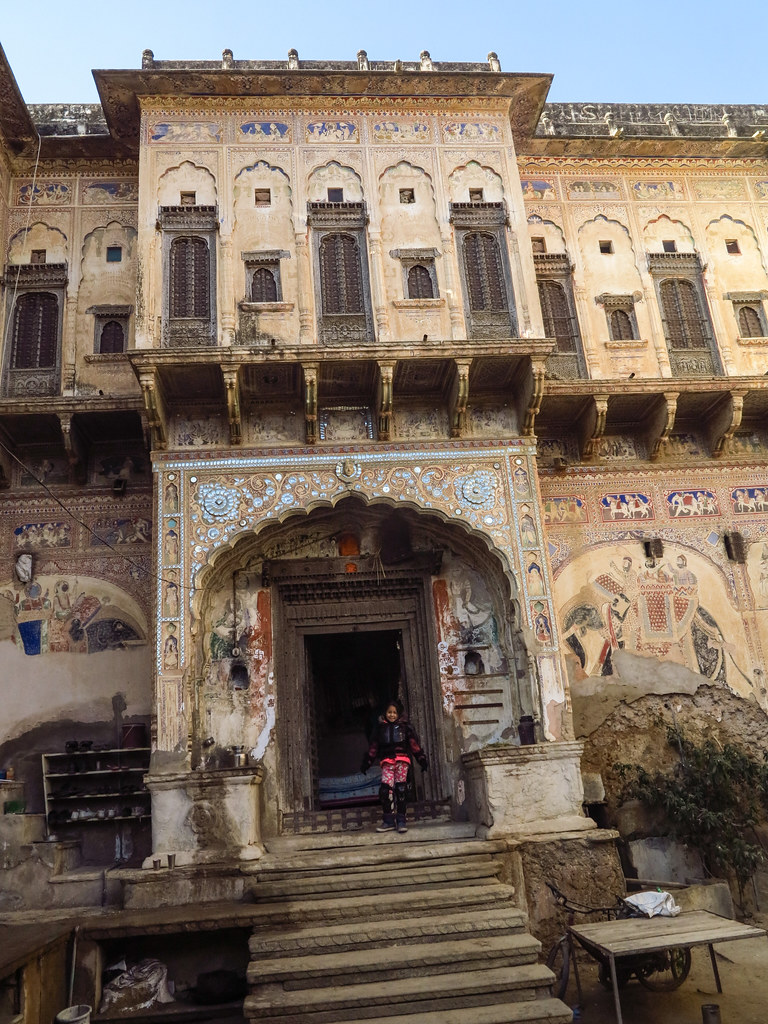 IMG_0069_edited by Triangle Golden 007, on Flickr
IMG_0069_edited by Triangle Golden 007, on Flickr
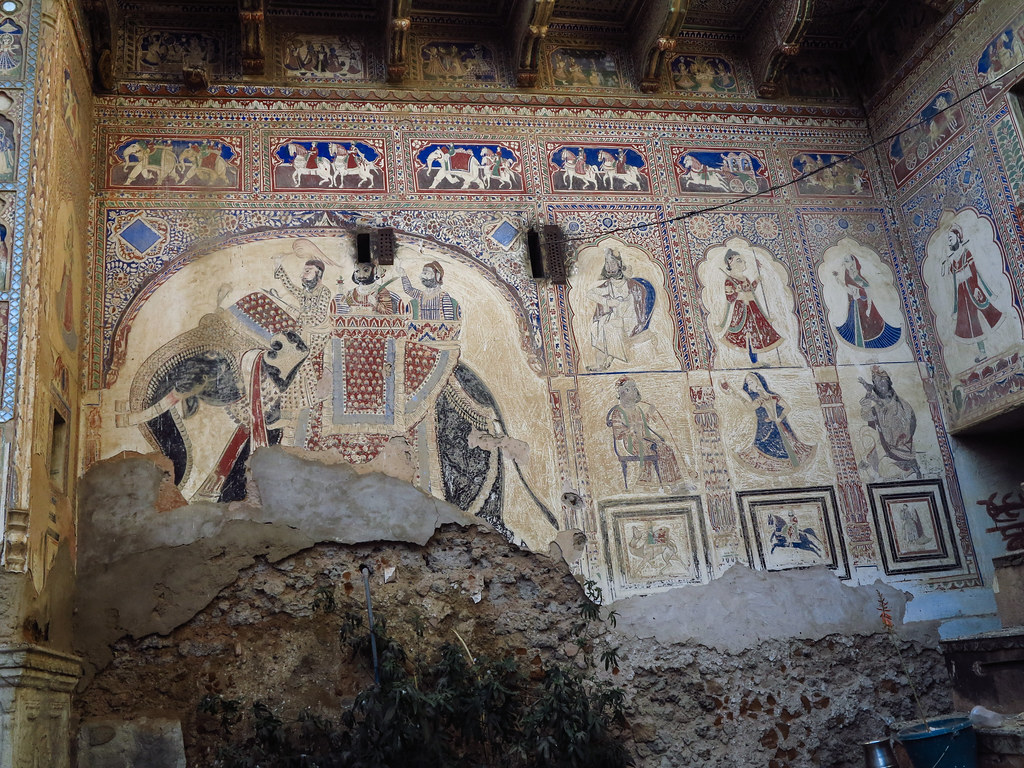 IMG_0070_edited by Triangle Golden 007, on Flickr
IMG_0070_edited by Triangle Golden 007, on Flickr
Some of the palaces are still lived in by the nobles’ descendants who seem rather strapped for cash and have let the building deteriorate badly. They try sell artifacts inside, it’s all very similar to some of the places in Yunnan, China
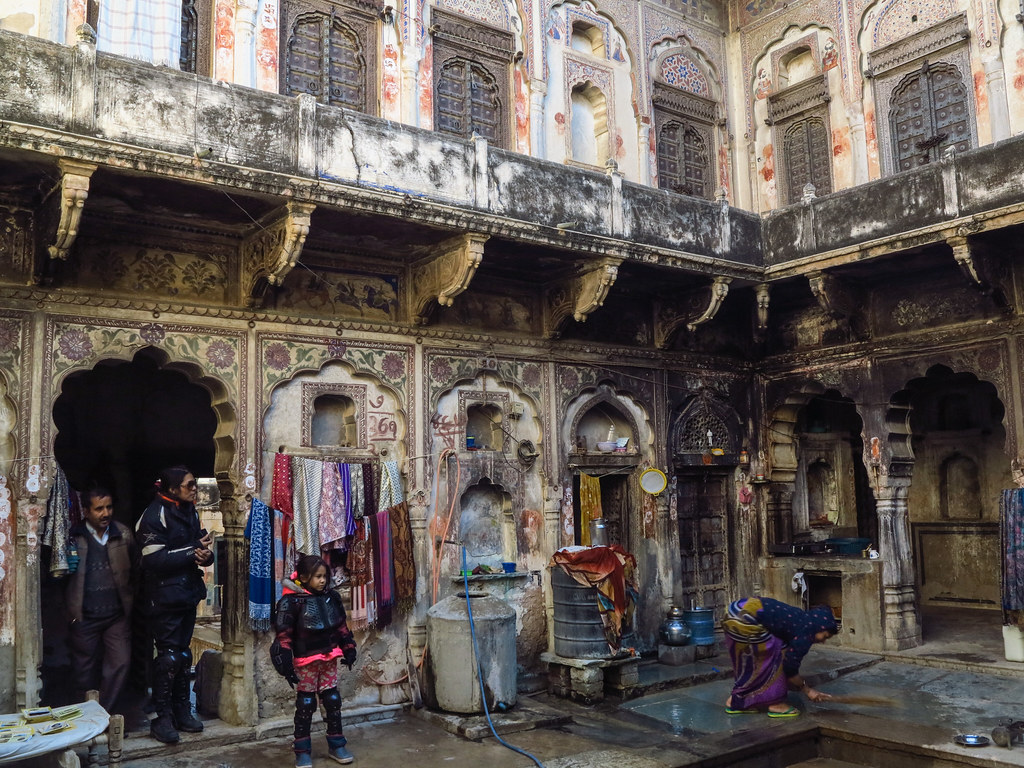 IMG_0074_edited by Triangle Golden 007, on Flickr
IMG_0074_edited by Triangle Golden 007, on Flickr
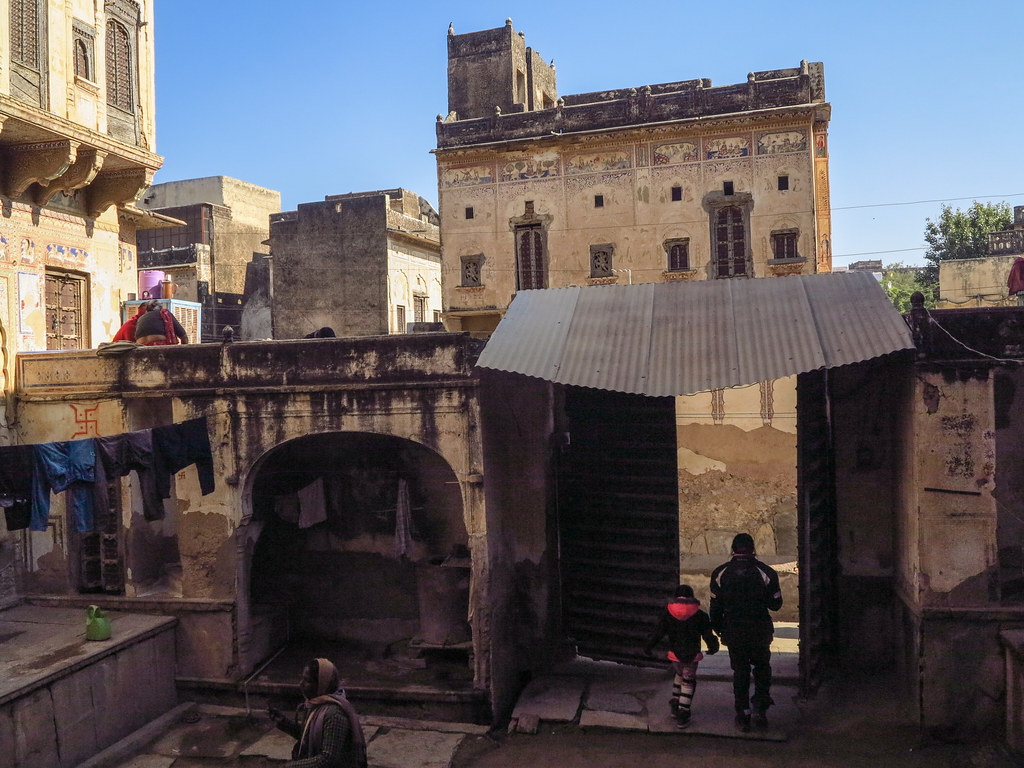 IMG_0075_edited by Triangle Golden 007, on Flickr
IMG_0075_edited by Triangle Golden 007, on Flickr
One of the palaces has been converted into the Mandawa Hotel, it’s beautiful
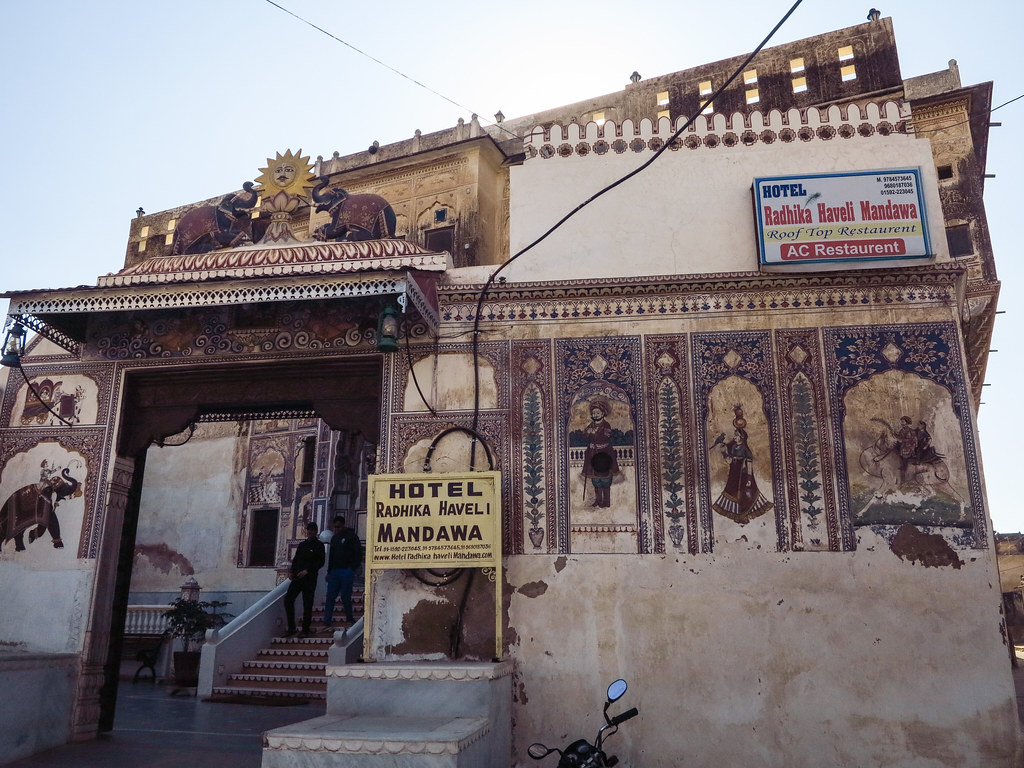 IMG_0077_edited by Triangle Golden 007, on Flickr
IMG_0077_edited by Triangle Golden 007, on Flickr
Promotion
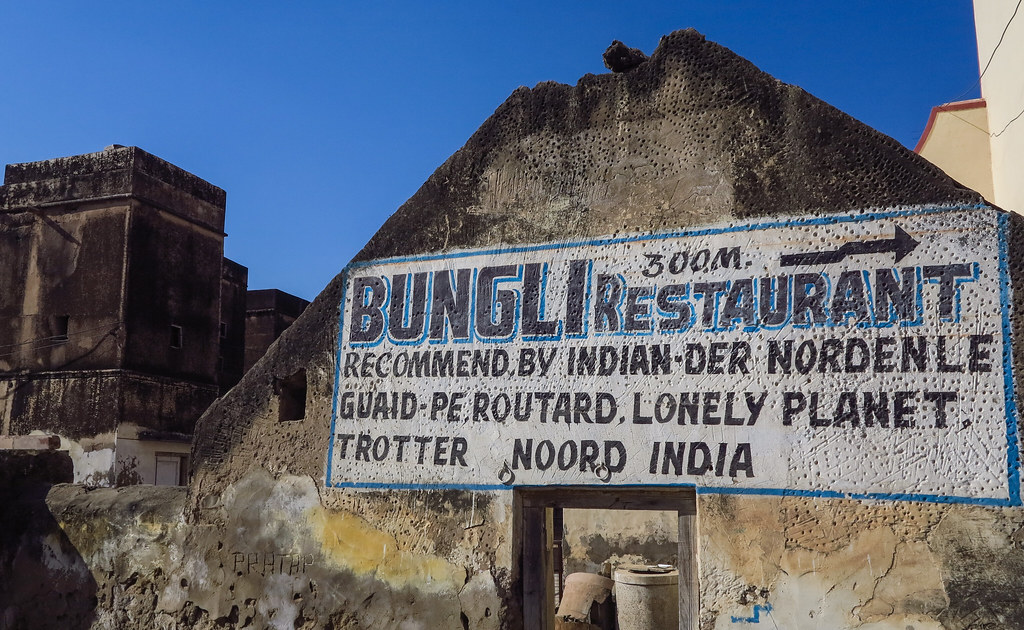 IMG_0079_edited by Triangle Golden 007, on Flickr
IMG_0079_edited by Triangle Golden 007, on Flickr
Street food – Caramelized fruit and yogurt
 IMG_0080_edited by Triangle Golden 007, on Flickr
IMG_0080_edited by Triangle Golden 007, on Flickr
 IMG_0083_edited by Triangle Golden 007, on Flickr
IMG_0083_edited by Triangle Golden 007, on Flickr
The tailor
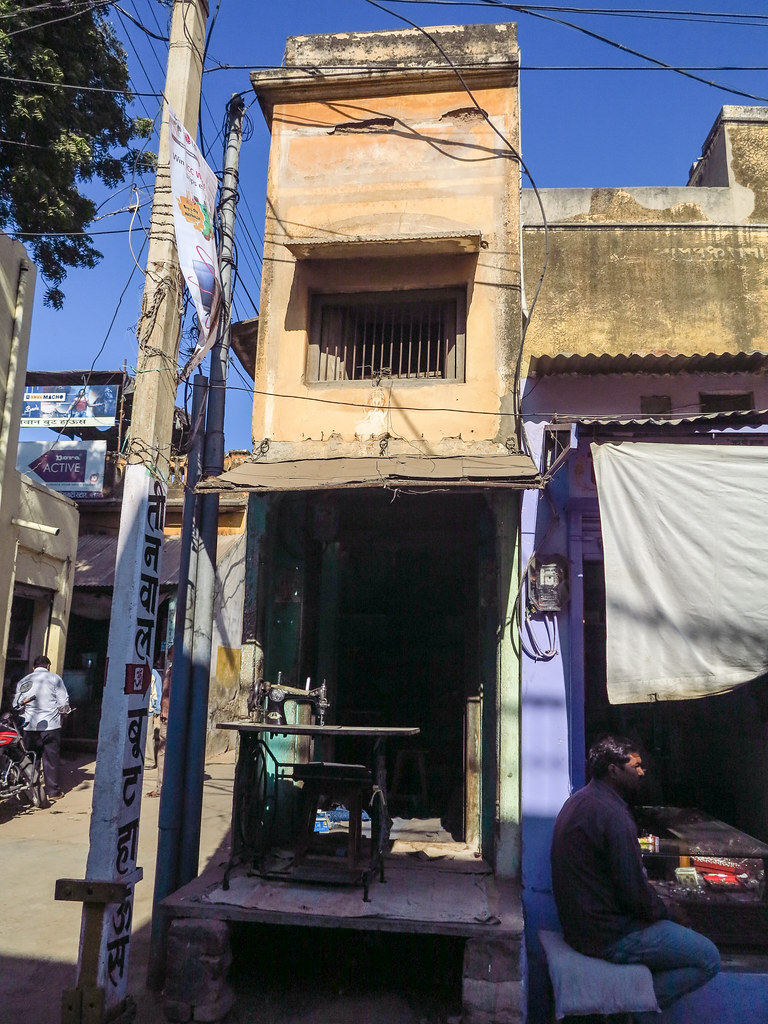 IMG_0084_edited by Triangle Golden 007, on Flickr
IMG_0084_edited by Triangle Golden 007, on Flickr
Mandawa
 IMG_0086_edited by Triangle Golden 007, on Flickr
IMG_0086_edited by Triangle Golden 007, on Flickr
I will spend a few days there again for sure
 IMG_0089_edited by Triangle Golden 007, on Flickr
IMG_0089_edited by Triangle Golden 007, on Flickr
Headed westwards for Bikaner for the night, now getting real desert-like
 IMG_0090_edited by Triangle Golden 007, on Flickr
IMG_0090_edited by Triangle Golden 007, on Flickr
Apart from here
 IMG_0091_edited by Triangle Golden 007, on Flickr
IMG_0091_edited by Triangle Golden 007, on Flickr
Tea stop and the usual Chaos
 IMG_0095_edited by Triangle Golden 007, on Flickr
IMG_0095_edited by Triangle Golden 007, on Flickr
Tanks on their way back from the Pakistan border
 IMG_0097_edited by Triangle Golden 007, on Flickr
IMG_0097_edited by Triangle Golden 007, on Flickr
Camel purchase prices range from 15,000 Bht to 60,000 Bht equiv. A lot of training is needed which is part of the intrinsic cost
 IMG_0104_edited by Triangle Golden 007, on Flickr
IMG_0104_edited by Triangle Golden 007, on Flickr
Into Bikaner & 1,000 KM’s on the KTM’s, time for an oil change
 IMG_0106_edited by Triangle Golden 007, on Flickr
IMG_0106_edited by Triangle Golden 007, on Flickr
An Enfield undergoing surgery
 IMG_0107_edited by Triangle Golden 007, on Flickr
IMG_0107_edited by Triangle Golden 007, on Flickr
Bikes everywhere
 IMG_0108_edited by Triangle Golden 007, on Flickr
IMG_0108_edited by Triangle Golden 007, on Flickr
 IMG_0109_edited by Triangle Golden 007, on Flickr
IMG_0109_edited by Triangle Golden 007, on Flickr
Here we go
 IMG_0110_edited by Triangle Golden 007, on Flickr
IMG_0110_edited by Triangle Golden 007, on Flickr
No glitter thank God
 IMG_0111_edited by Triangle Golden 007, on Flickr
IMG_0111_edited by Triangle Golden 007, on Flickr
This looked unusual
 IMG_0112_edited by Triangle Golden 007, on Flickr
IMG_0112_edited by Triangle Golden 007, on Flickr
Bikaner Hotel was a bit worn but good value
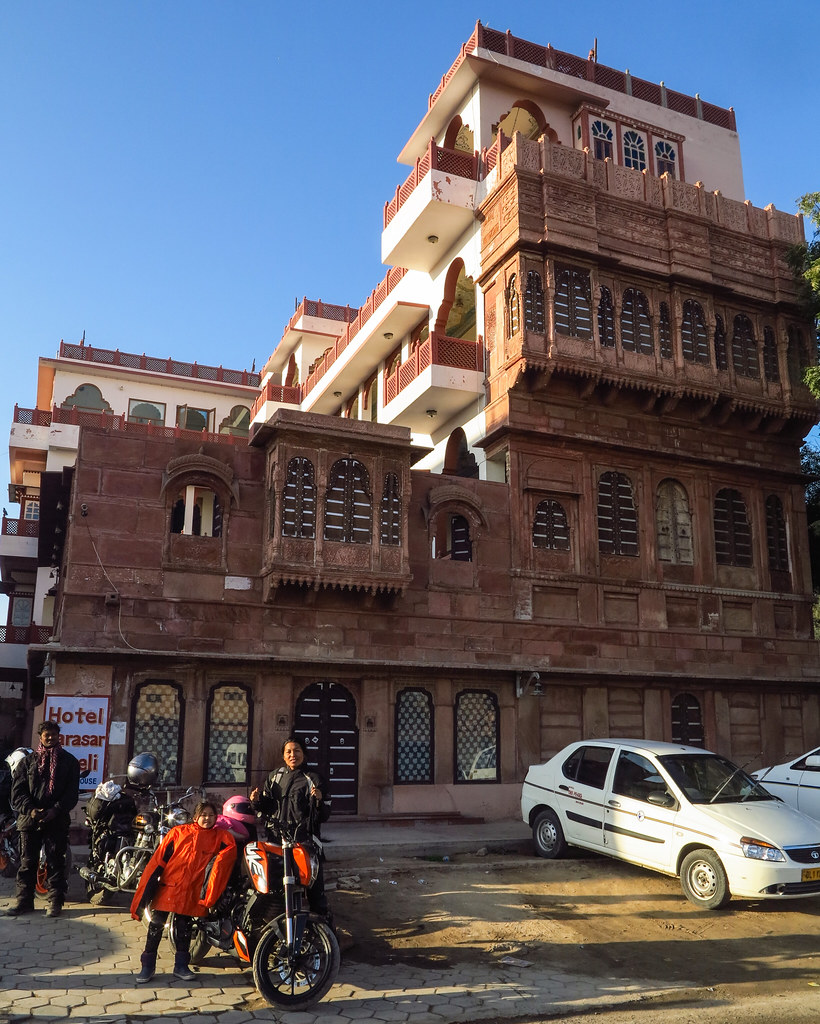 IMG_0115_edited by Triangle Golden 007, on Flickr
IMG_0115_edited by Triangle Golden 007, on Flickr
 IMG_0114_edited by Triangle Golden 007, on Flickr
IMG_0114_edited by Triangle Golden 007, on Flickr
0900am start and time for a quick photo at the Bikaner Fort
 IMG_0116_edited by Triangle Golden 007, on Flickr
IMG_0116_edited by Triangle Golden 007, on Flickr
Cha-stop and the 390 is getting some curious looks
 IMG_0122_edited by Triangle Golden 007, on Flickr
IMG_0122_edited by Triangle Golden 007, on Flickr
Clay drinking water jugs
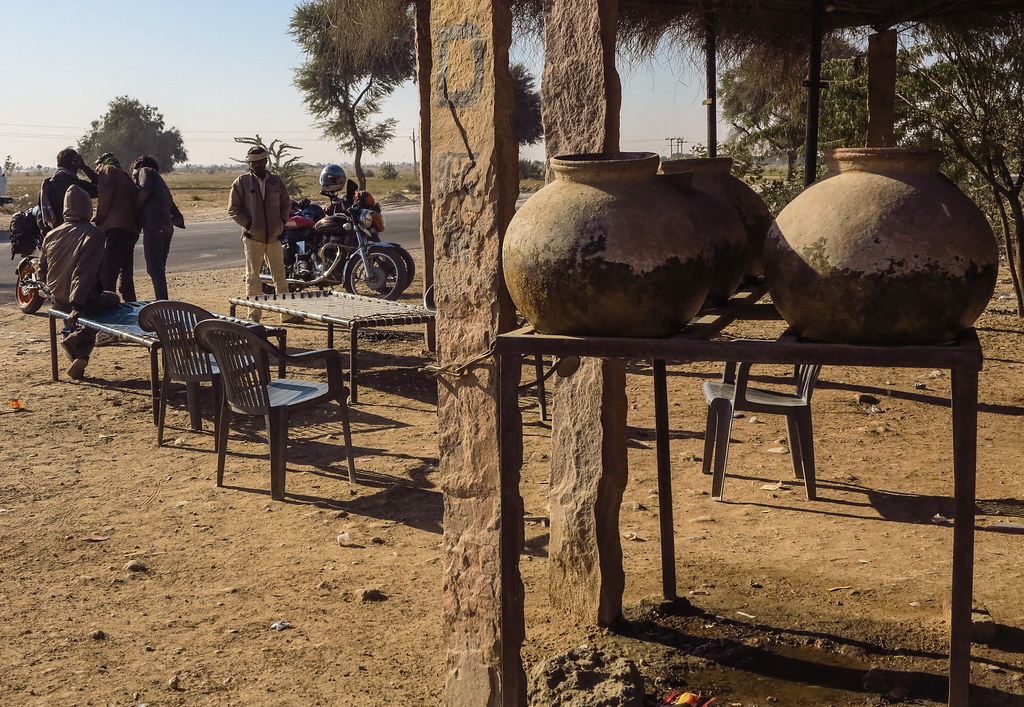 IMG_0123_edited by Triangle Golden 007, on Flickr
IMG_0123_edited by Triangle Golden 007, on Flickr
Chayawalla
 IMG_0124_edited by Triangle Golden 007, on Flickr
IMG_0124_edited by Triangle Golden 007, on Flickr
 IMG_0125_edited by Triangle Golden 007, on Flickr
IMG_0125_edited by Triangle Golden 007, on Flickr
Dusty tea stops
 IMG_0126_edited by Triangle Golden 007, on Flickr
IMG_0126_edited by Triangle Golden 007, on Flickr
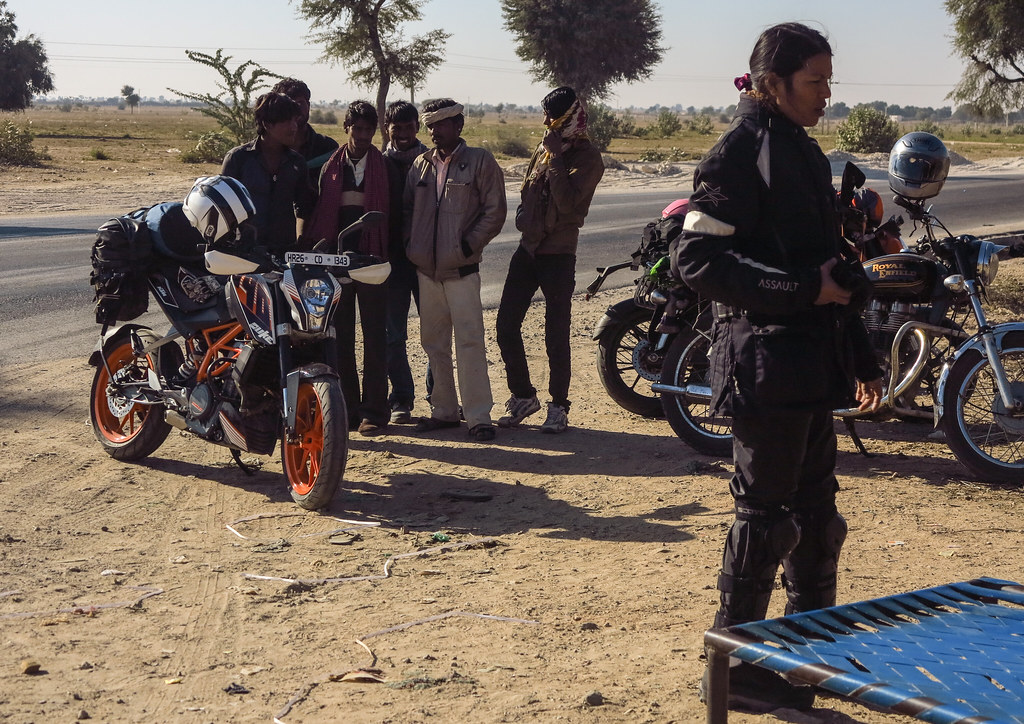 IMG_0127_edited by Triangle Golden 007, on Flickr
IMG_0127_edited by Triangle Golden 007, on Flickr
Sacred cows roam freely everywhere
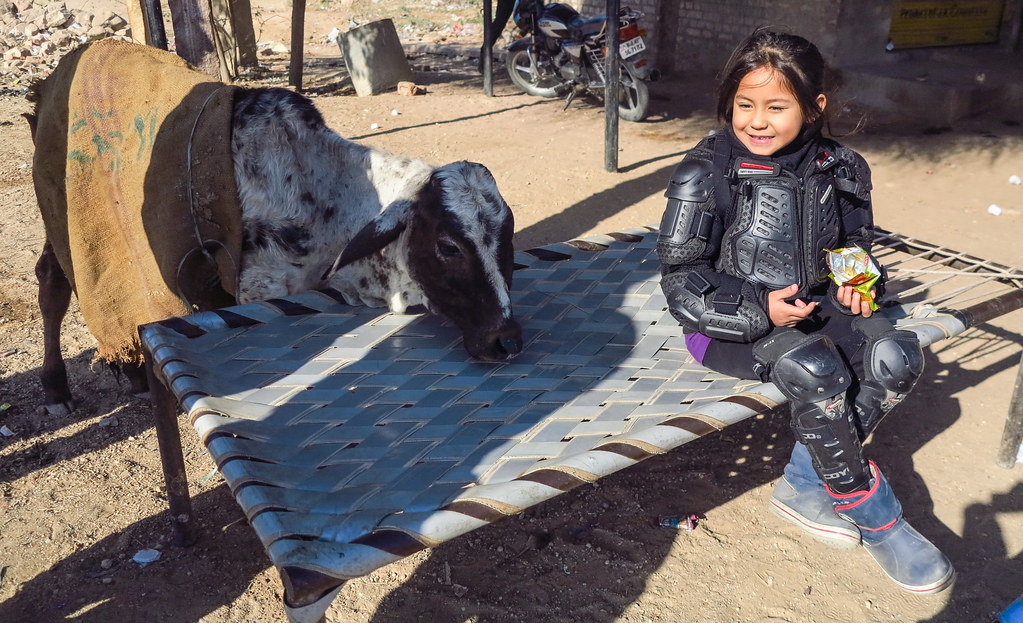 IMG_0128_edited by Triangle Golden 007, on Flickr
IMG_0128_edited by Triangle Golden 007, on Flickr
The KTM’s are doing us proud
 IMG_0131_edited by Triangle Golden 007, on Flickr
IMG_0131_edited by Triangle Golden 007, on Flickr
It seems more and more of Som’s luggage is finding it way into the blue bag…every day lengthening the straps
Getting some KM’s under our belts now, headed for Jaisalmer, looking back at the road signs
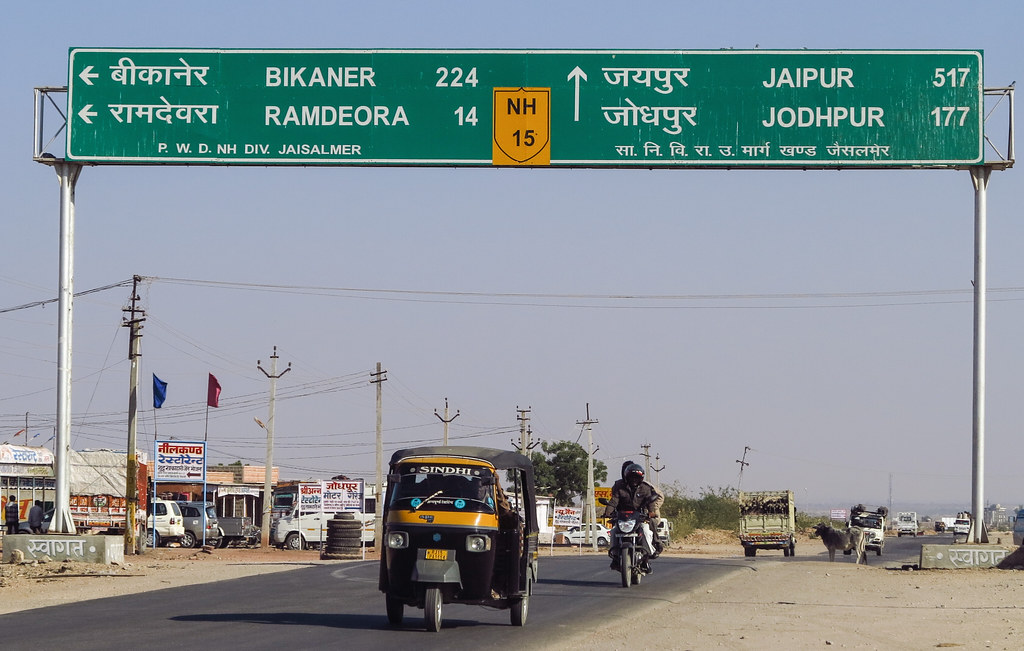 IMG_0141_edited by Triangle Golden 007, on Flickr
IMG_0141_edited by Triangle Golden 007, on Flickr
Our first camel shepard
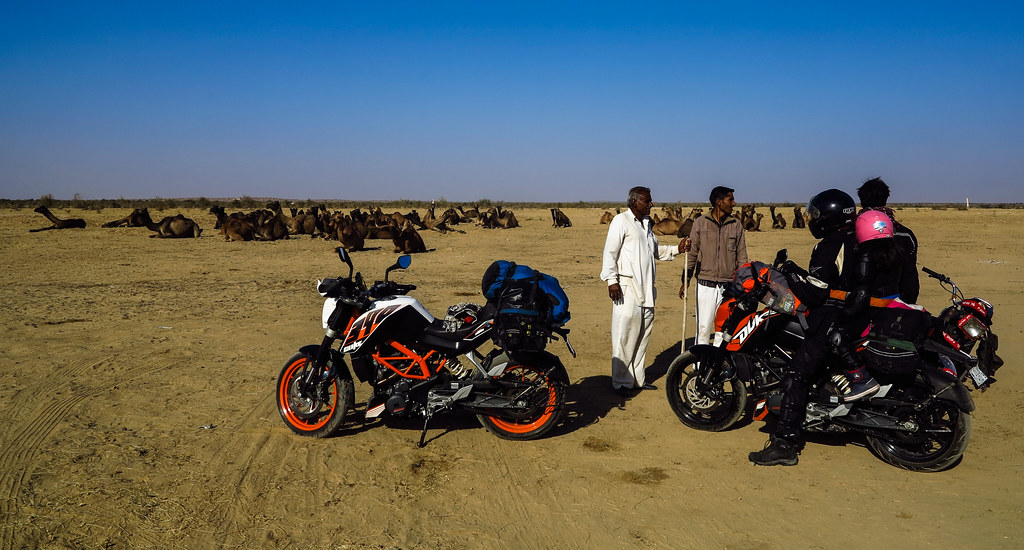 IMG_0142_edited by Triangle Golden 007, on Flickr
IMG_0142_edited by Triangle Golden 007, on Flickr
The Rajasthan cattle festival is in Jaisalmer, Feb. 1,2 & 3, 2015 FYI, its supposed to be pretty good. A camel will cost you anywhere between 15,000 – 60,000 Bht. price depends on level of training the camel has received and its breeding
 IMG_0145_edited by Triangle Golden 007, on Flickr
IMG_0145_edited by Triangle Golden 007, on Flickr
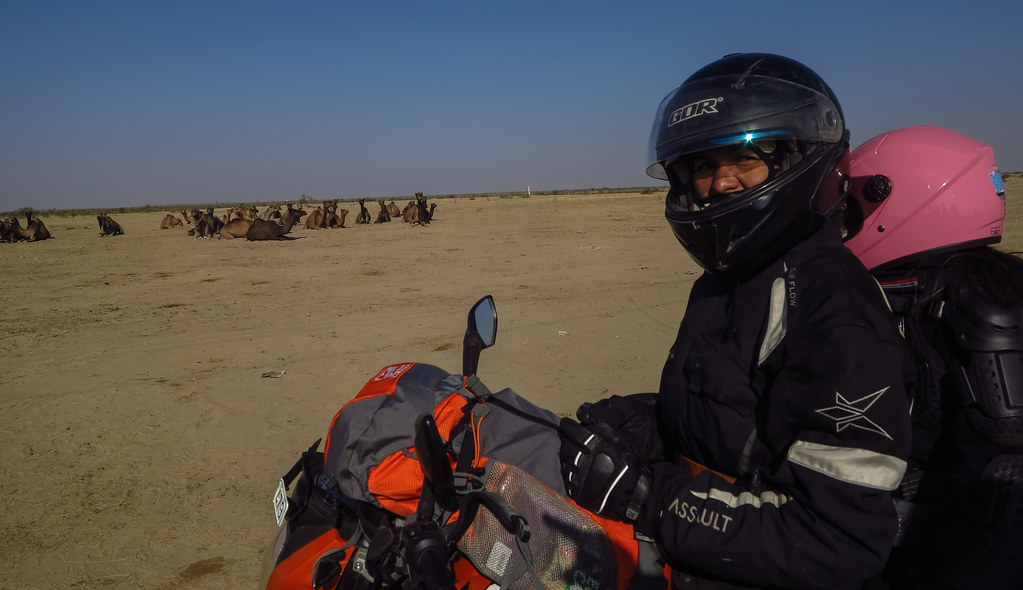 IMG_0144_edited by Triangle Golden 007, on Flickr
IMG_0144_edited by Triangle Golden 007, on Flickr
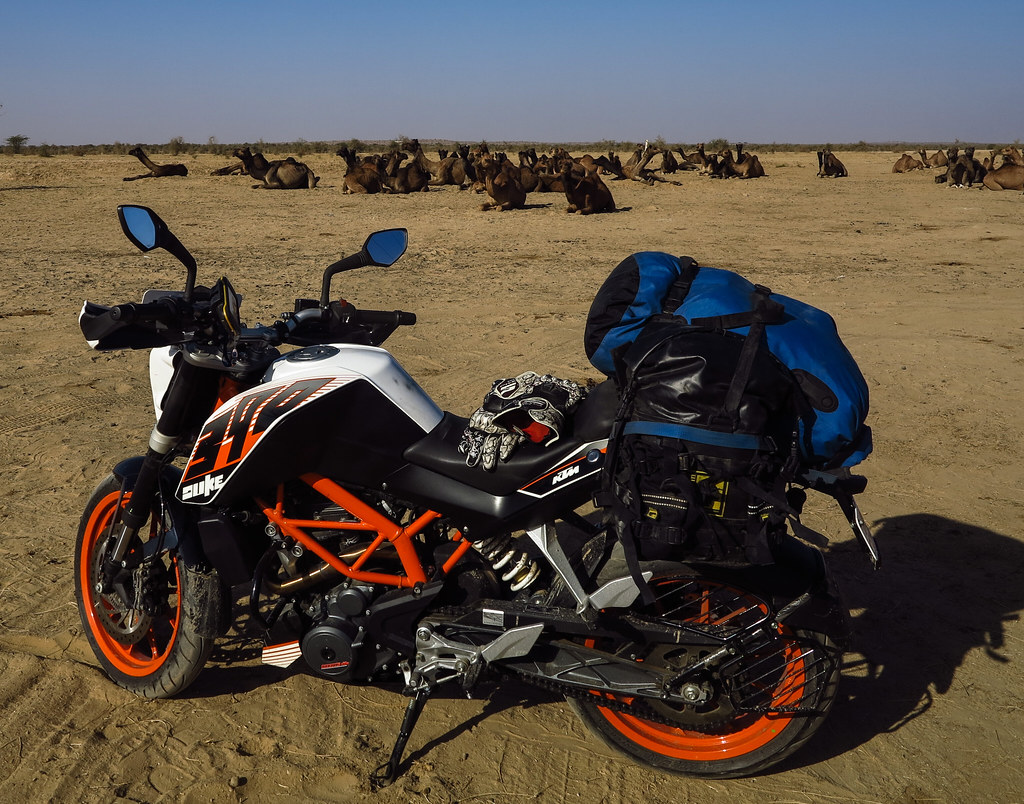 IMG_0143_edited by Triangle Golden 007, on Flickr
IMG_0143_edited by Triangle Golden 007, on Flickr
Pretty tame considering they handnt been trained
 IMG_0149_edited by Triangle Golden 007, on Flickr
IMG_0149_edited by Triangle Golden 007, on Flickr
& the desert starts as we head west towards the Pakistan border
For remote touring the Royal Enfield is pretty hard to argue against.
– super simple
– can be repaired anywhere
– strong
– will run on any octane fuel
– kick start back up
– parts easily sourced anywhere in India
– super cheap to buy
A very long ride from Bikaner, westwards to Jaisalmer, now to find a hotel at super high season rates (bend over)
 IMG_0155_edited by Triangle Golden 007, on Flickr
IMG_0155_edited by Triangle Golden 007, on Flickr
Late in the day by the time we get settled, our first breathtaking views of the Jaisalmer Fort
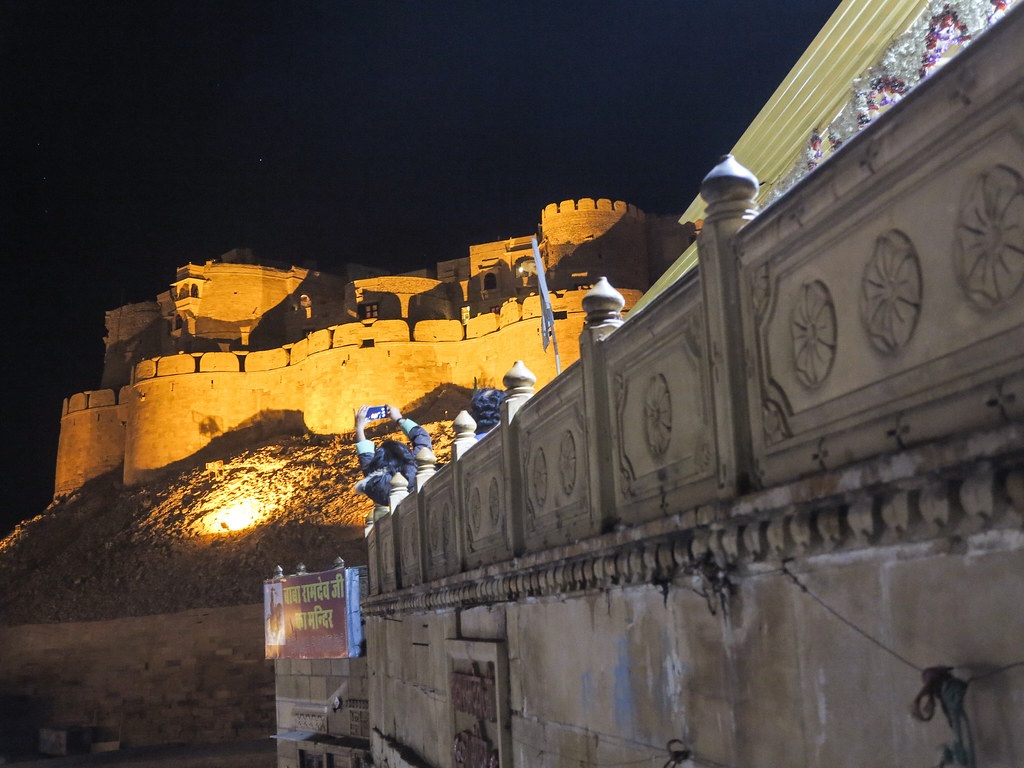 IMG_0168_edited by Triangle Golden 007, on Flickr
IMG_0168_edited by Triangle Golden 007, on Flickr
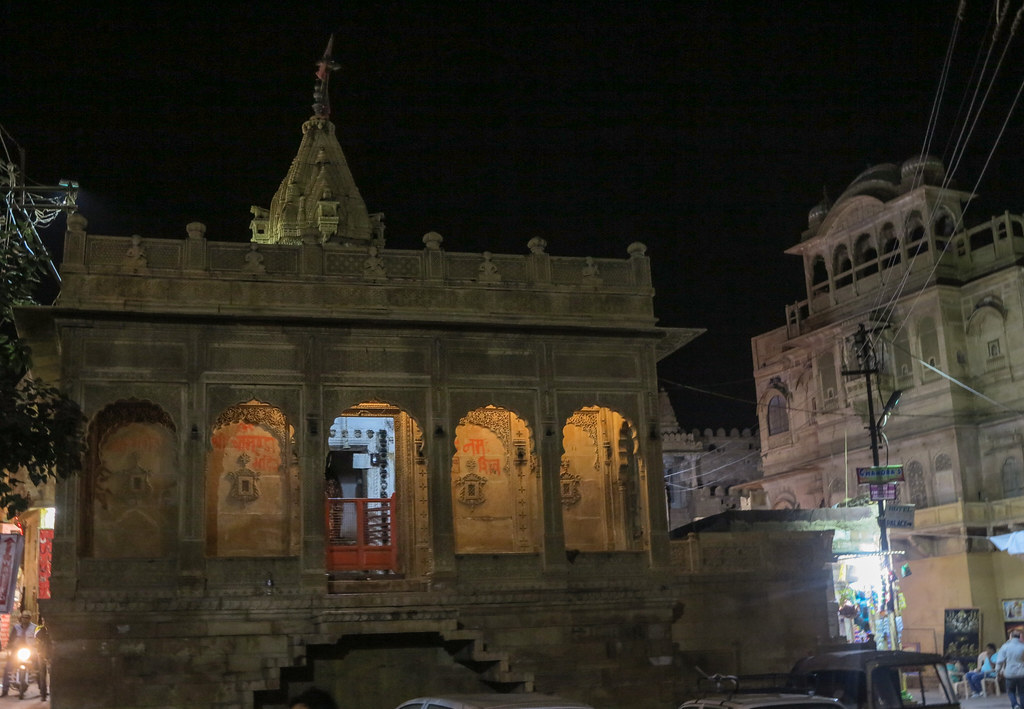 IMG_0173_edited by Triangle Golden 007, on Flickr
IMG_0173_edited by Triangle Golden 007, on Flickr
The intricacies were beautiful
 IMG_0175_edited by Triangle Golden 007, on Flickr
IMG_0175_edited by Triangle Golden 007, on Flickr
Most of these forts are shut at night, great to find this one stays open
 IMG_0177_edited by Triangle Golden 007, on Flickr
IMG_0177_edited by Triangle Golden 007, on Flickr
Vendors all along the tiny alley ways in the fort
 IMG_0178_edited by Triangle Golden 007, on Flickr
IMG_0178_edited by Triangle Golden 007, on Flickr
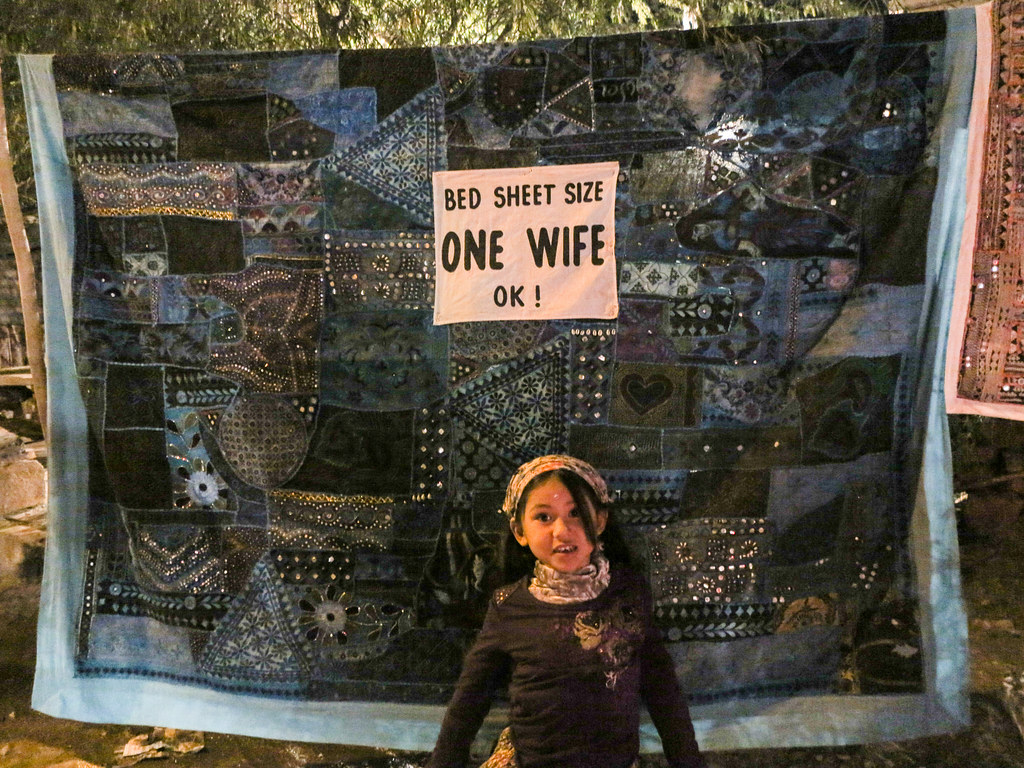 IMG_0181_edited by Triangle Golden 007, on Flickr
IMG_0181_edited by Triangle Golden 007, on Flickr
 IMG_0182_edited by Triangle Golden 007, on Flickr
IMG_0182_edited by Triangle Golden 007, on Flickr
Really good quality Indian food in Jaisalmer
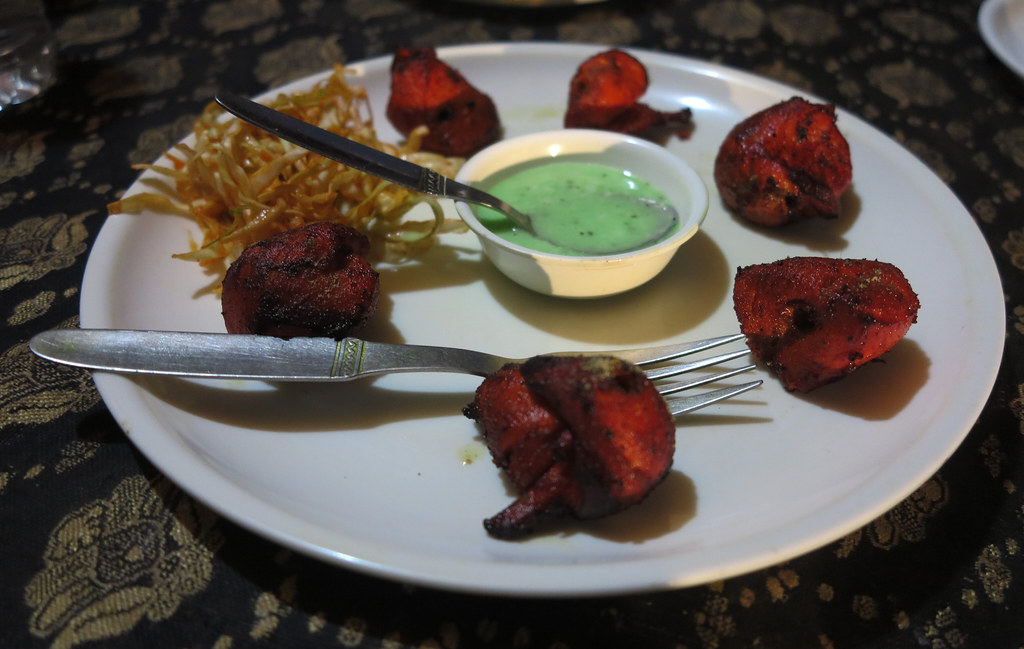 IMG_0184_edited by Triangle Golden 007, on Flickr
IMG_0184_edited by Triangle Golden 007, on Flickr
Up early & westwards out into the desert towards the Pakistan border
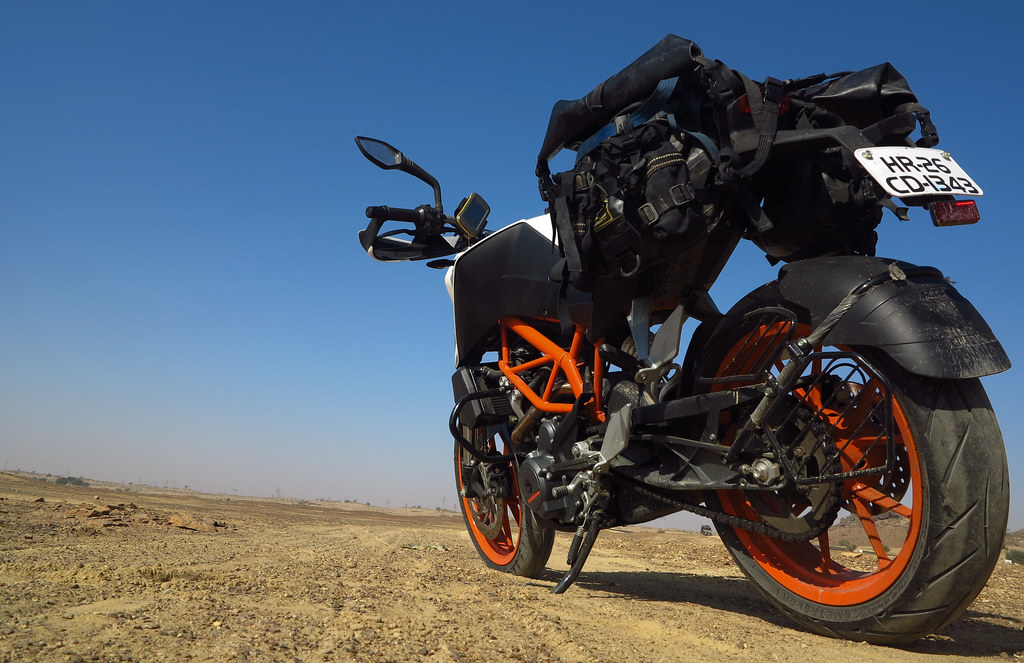 IMG_0190_edited by Triangle Golden 007, on Flickr
IMG_0190_edited by Triangle Golden 007, on Flickr
Wild camel to the right side of the road
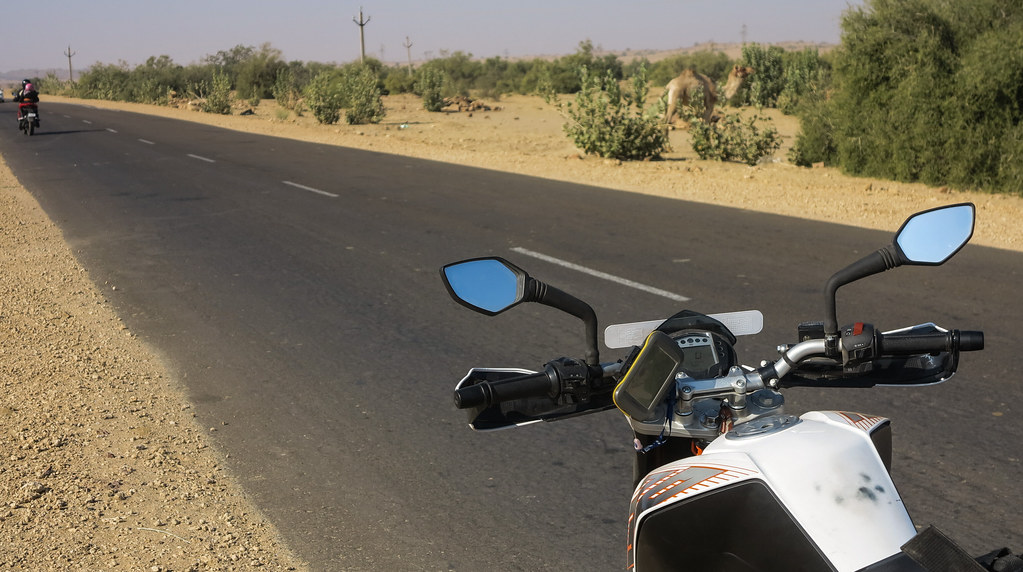 IMG_0188_edited by Triangle Golden 007, on Flickr
IMG_0188_edited by Triangle Golden 007, on Flickr
 IMG_0191_edited by Triangle Golden 007, on Flickr
IMG_0191_edited by Triangle Golden 007, on Flickr
About 30km west of Jaisalmer, the desert dunes start and there’s camels and tent camps
 IMG_0193_edited by Triangle Golden 007, on Flickr
IMG_0193_edited by Triangle Golden 007, on Flickr
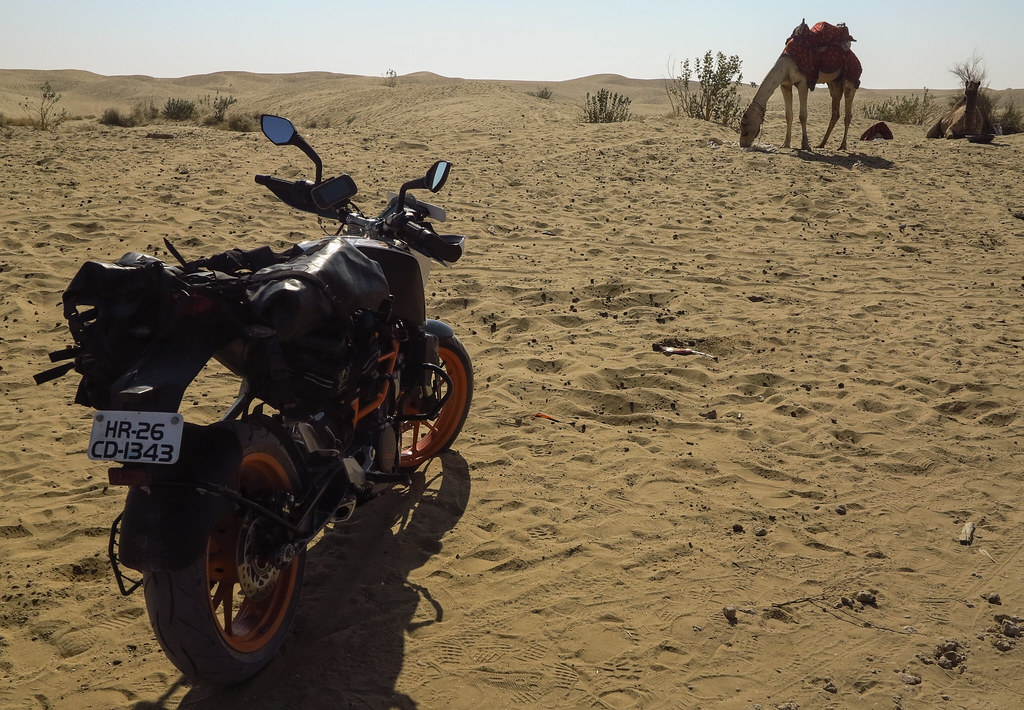 IMG_0195_edited by Triangle Golden 007, on Flickr
IMG_0195_edited by Triangle Golden 007, on Flickr
Pretty easy to arrange a ride
 IMG_0198_edited by Triangle Golden 007, on Flickr
IMG_0198_edited by Triangle Golden 007, on Flickr
 IMG_0211_edited by Triangle Golden 007, on Flickr
IMG_0211_edited by Triangle Golden 007, on Flickr
 IMG_0212_edited by Triangle Golden 007, on Flickr
IMG_0212_edited by Triangle Golden 007, on Flickr
Looks like it might be the first 390 into the desert
 IMG_0219_edited by Triangle Golden 007, on Flickr
IMG_0219_edited by Triangle Golden 007, on Flickr
The jeeps they use for desert tours
 IMG_0223_edited by Triangle Golden 007, on Flickr
IMG_0223_edited by Triangle Golden 007, on Flickr
On the way eastwards back to Jaisalmer, a stop at one of the ethnic villages
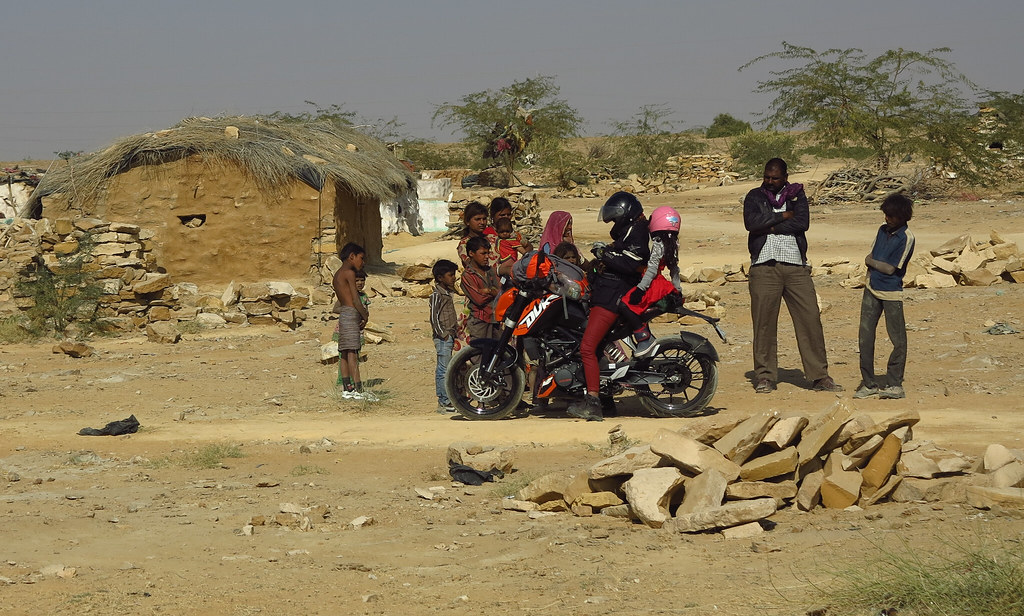 IMG_0230_edited by Triangle Golden 007, on Flickr
IMG_0230_edited by Triangle Golden 007, on Flickr
 IMG_0227_edited by Triangle Golden 007, on Flickr
IMG_0227_edited by Triangle Golden 007, on Flickr
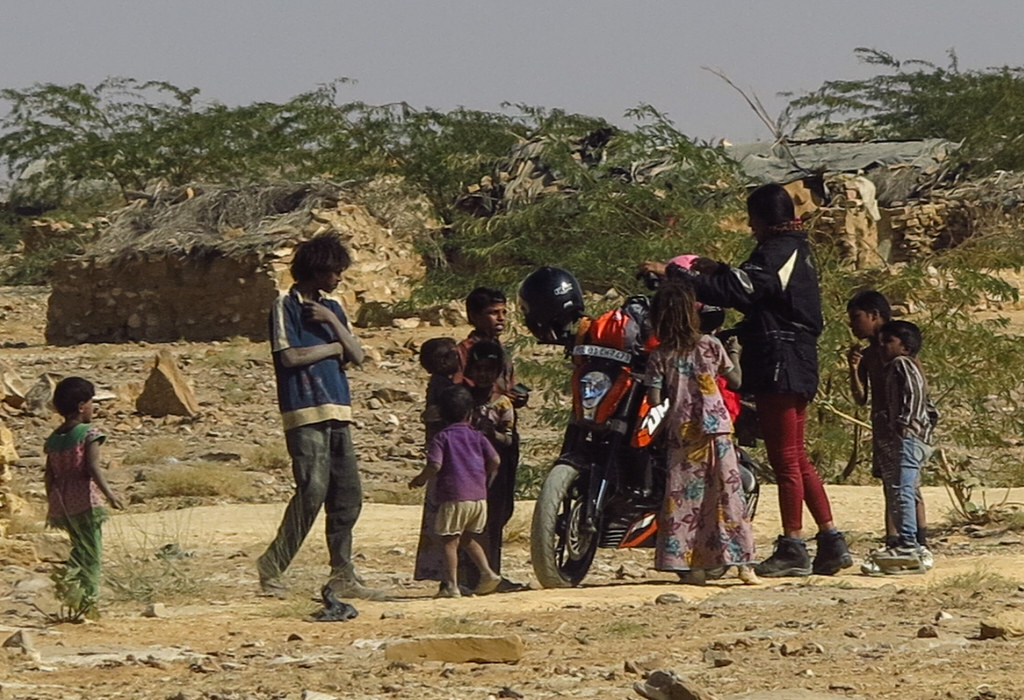 IMG_0229_edited by Triangle Golden 007, on Flickr
IMG_0229_edited by Triangle Golden 007, on Flickr
Suzlon wind turbines popping up everywhere
 IMG_0232_edited by Triangle Golden 007, on Flickr
IMG_0232_edited by Triangle Golden 007, on Flickr
 IMG_0233_edited by Triangle Golden 007, on Flickr
IMG_0233_edited by Triangle Golden 007, on Flickr
Ancient temple in the desert on the way back
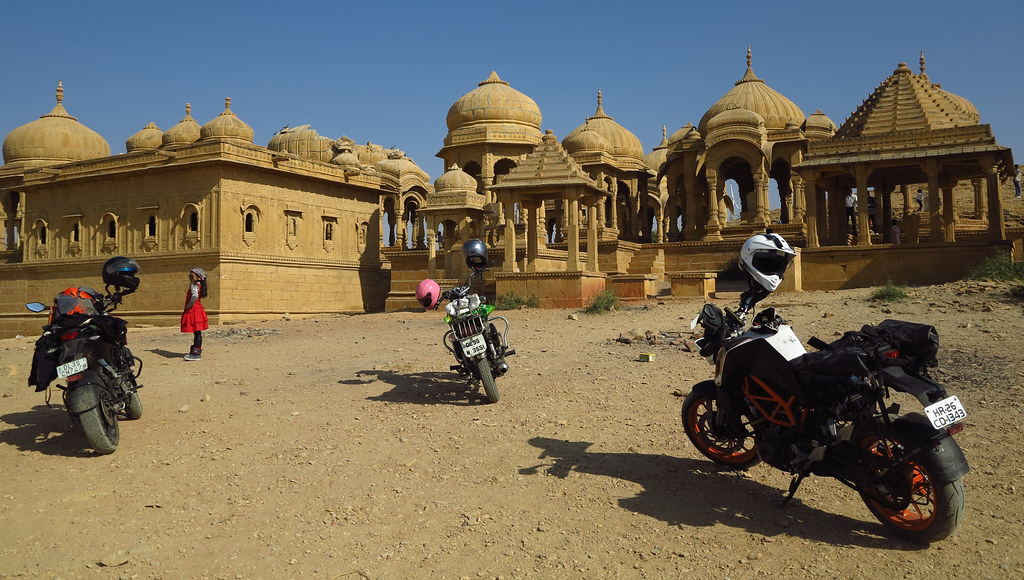 IMG_0235_edited by Triangle Golden 007, on Flickr
IMG_0235_edited by Triangle Golden 007, on Flickr
 IMG_0242_edited by Triangle Golden 007, on Flickr
IMG_0242_edited by Triangle Golden 007, on Flickr
 IMG_0248_edited by Triangle Golden 007, on Flickr
IMG_0248_edited by Triangle Golden 007, on Flickr
& another beauty
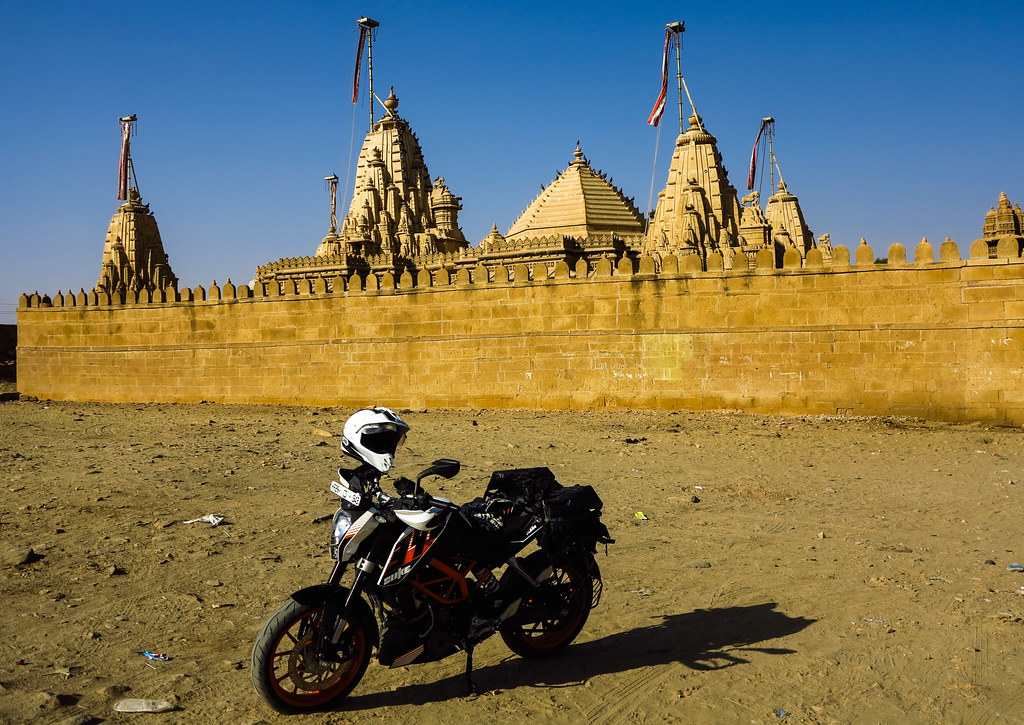 IMG_0251_edited by Triangle Golden 007, on Flickr
IMG_0251_edited by Triangle Golden 007, on Flickr
Beautiful restoration
 IMG_0254_edited by Triangle Golden 007, on Flickr
IMG_0254_edited by Triangle Golden 007, on Flickr
 IMG_0255_edited by Triangle Golden 007, on Flickr
IMG_0255_edited by Triangle Golden 007, on Flickr
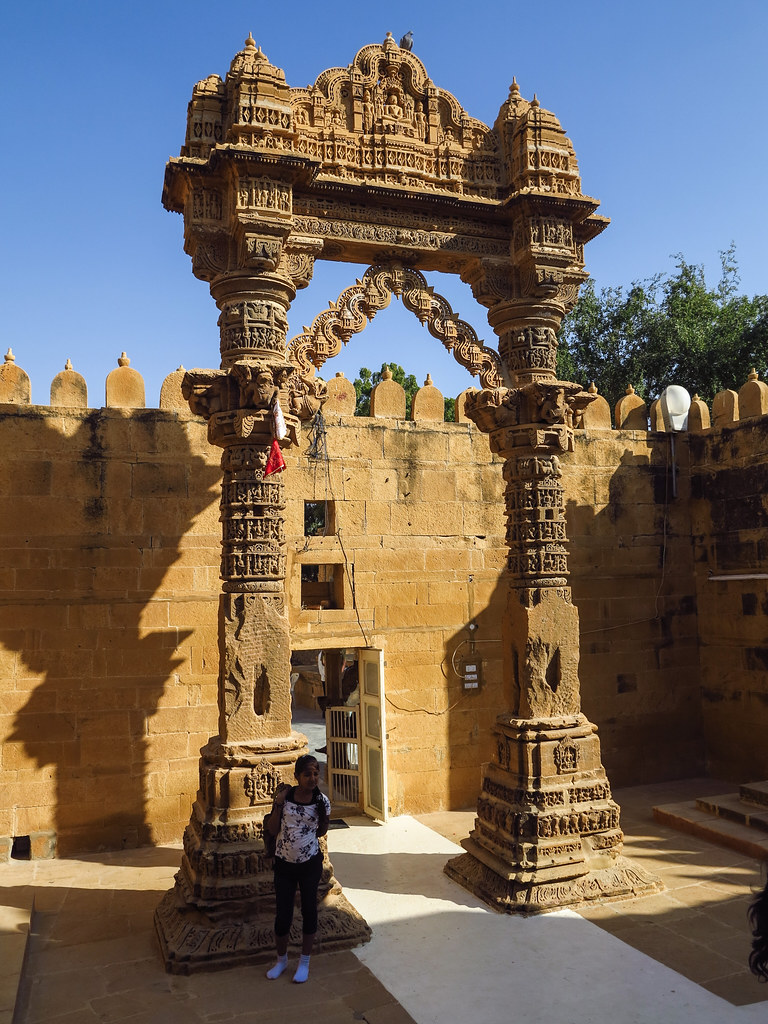 IMG_0257_edited by Triangle Golden 007, on Flickr
IMG_0257_edited by Triangle Golden 007, on Flickr
If you’re on the rag you cant go in
Back to Jaisalmer, a bike rental shop catches my eye. You can rent an exploring bike here pretty easily
 IMG_0263_edited by Triangle Golden 007, on Flickr
IMG_0263_edited by Triangle Golden 007, on Flickr
A chance to have a look around the Jaisalmer Fort in daylight
 IMG_0265_edited by Triangle Golden 007, on Flickr
IMG_0265_edited by Triangle Golden 007, on Flickr
The 1000 year old fort named after the Bhati ruler Jaisal, has sand stone walls 2-3 meters thick and is 5km is circumference, its like a mini city. It took 7 years to complete and then there were numerous additions. There’s an inner and outer wall that run parallel with a 2-4 meter gap, which was used for the movement of soldiers around the forts walls.
 IMG_0269_edited by Triangle Golden 007, on Flickr
IMG_0269_edited by Triangle Golden 007, on Flickr
Its military advantage is pretty obvious
 IMG_0272_edited by Triangle Golden 007, on Flickr
IMG_0272_edited by Triangle Golden 007, on Flickr
 IMG_0275_edited by Triangle Golden 007, on Flickr
IMG_0275_edited by Triangle Golden 007, on Flickr
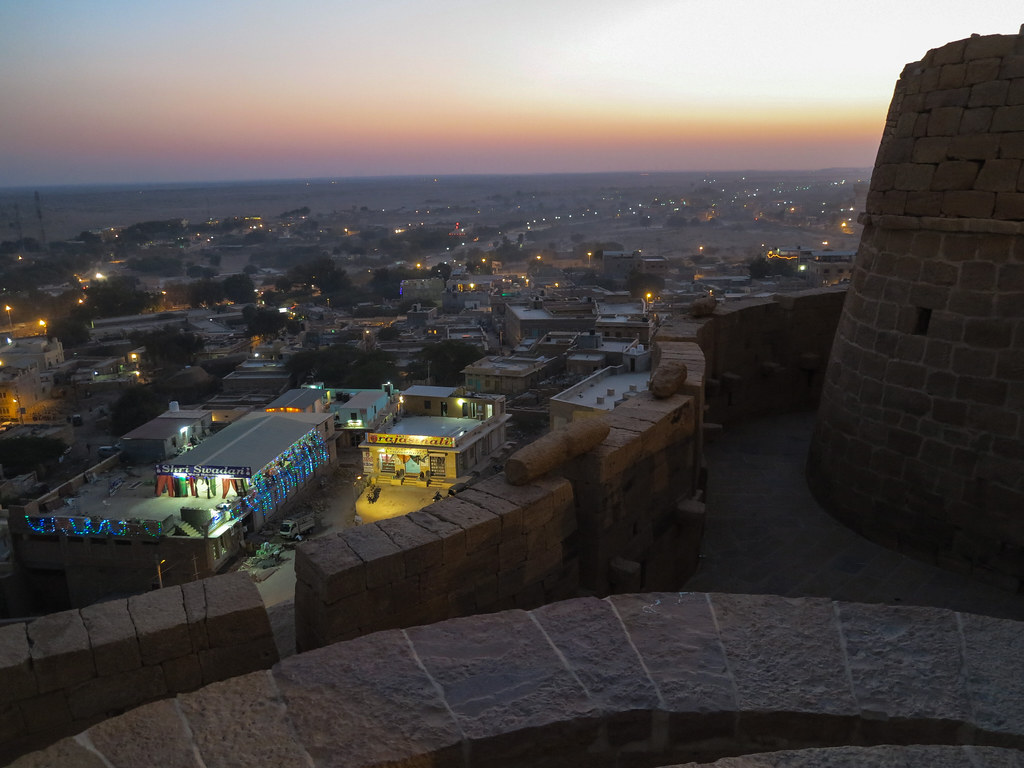 IMG_0277_edited by Triangle Golden 007, on Flickr
IMG_0277_edited by Triangle Golden 007, on Flickr
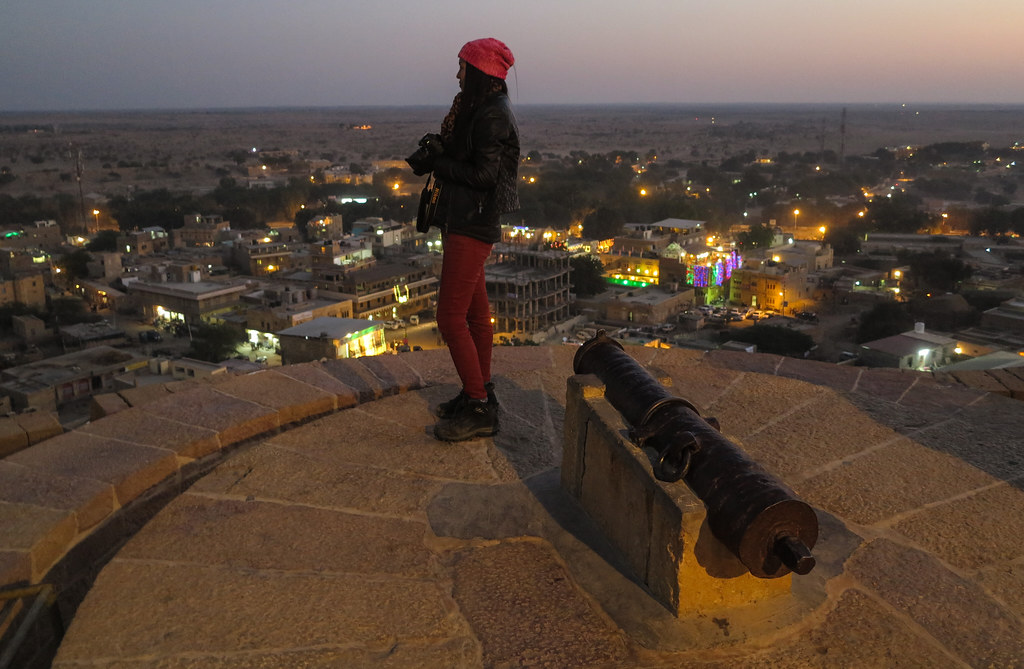 IMG_0279_edited by Triangle Golden 007, on Flickr
IMG_0279_edited by Triangle Golden 007, on Flickr
Some of the internal buildings look like movie sets
 IMG_0281_edited by Triangle Golden 007, on Flickr
IMG_0281_edited by Triangle Golden 007, on Flickr
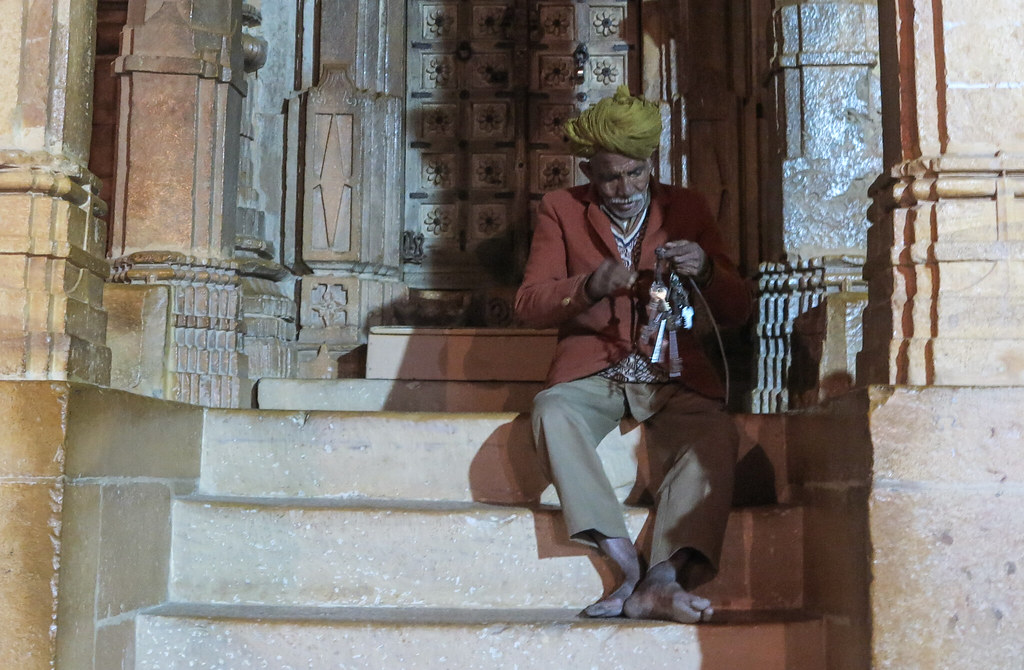 IMG_0282_edited by Triangle Golden 007, on Flickr
IMG_0282_edited by Triangle Golden 007, on Flickr
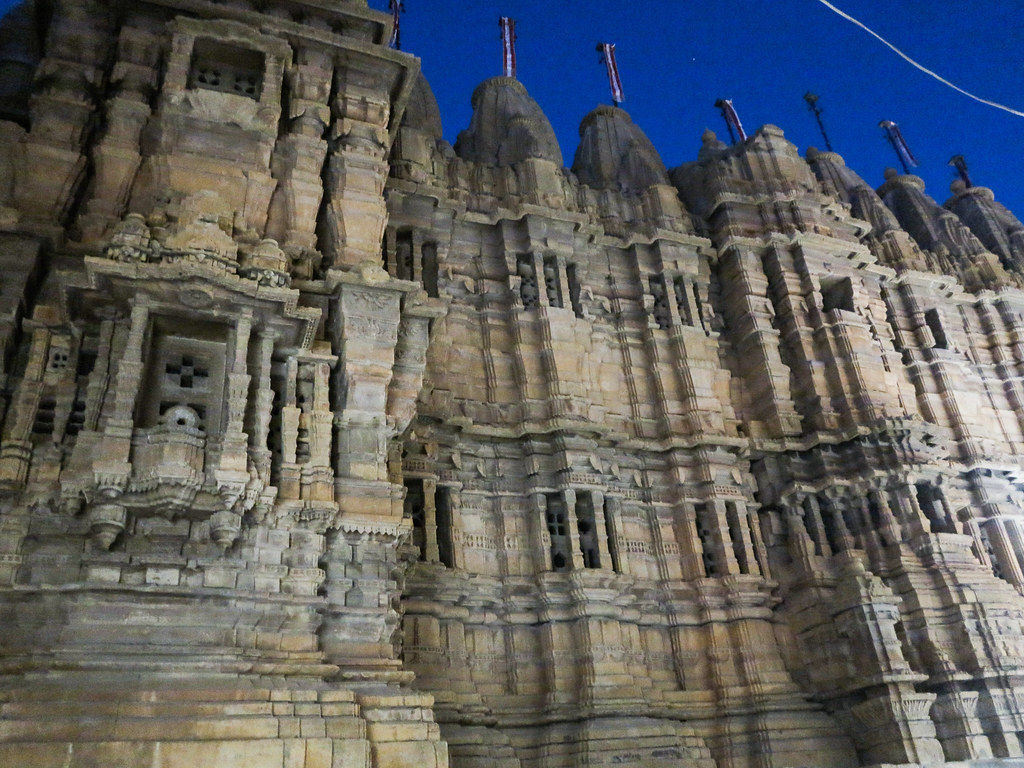 IMG_0284_edited by Triangle Golden 007, on Flickr
IMG_0284_edited by Triangle Golden 007, on Flickr
 IMG_0285_edited by Triangle Golden 007, on Flickr
IMG_0285_edited by Triangle Golden 007, on Flickr
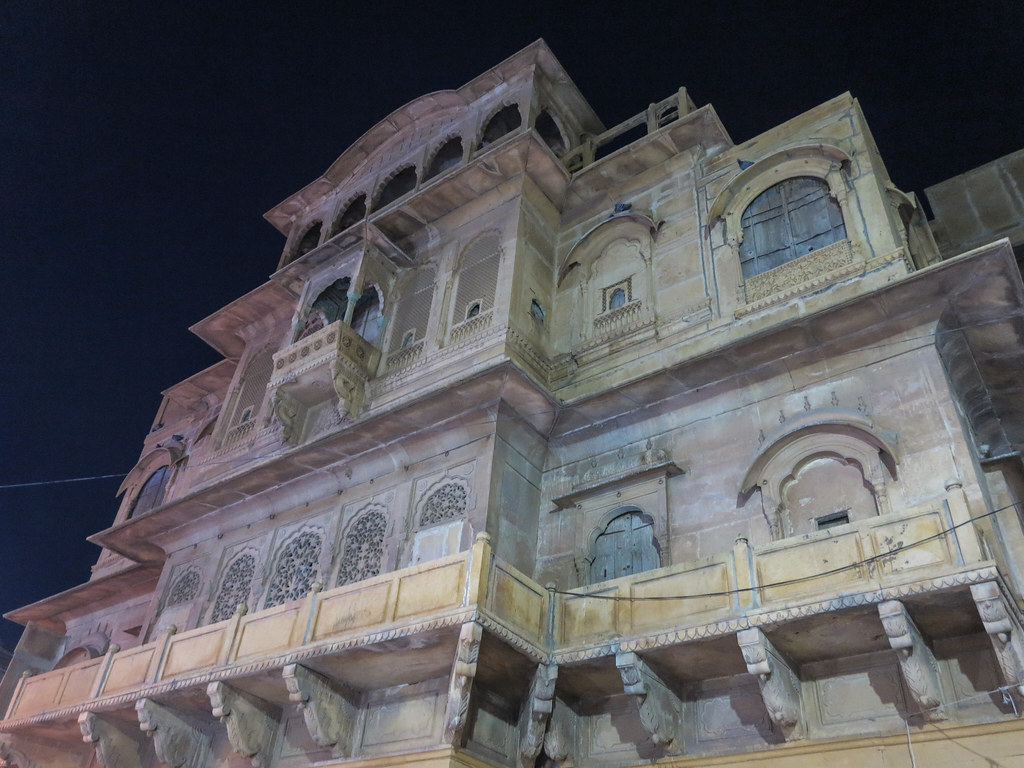 IMG_0287_edited by Triangle Golden 007, on Flickr
IMG_0287_edited by Triangle Golden 007, on Flickr
Back to the hotel in the afternoon sun
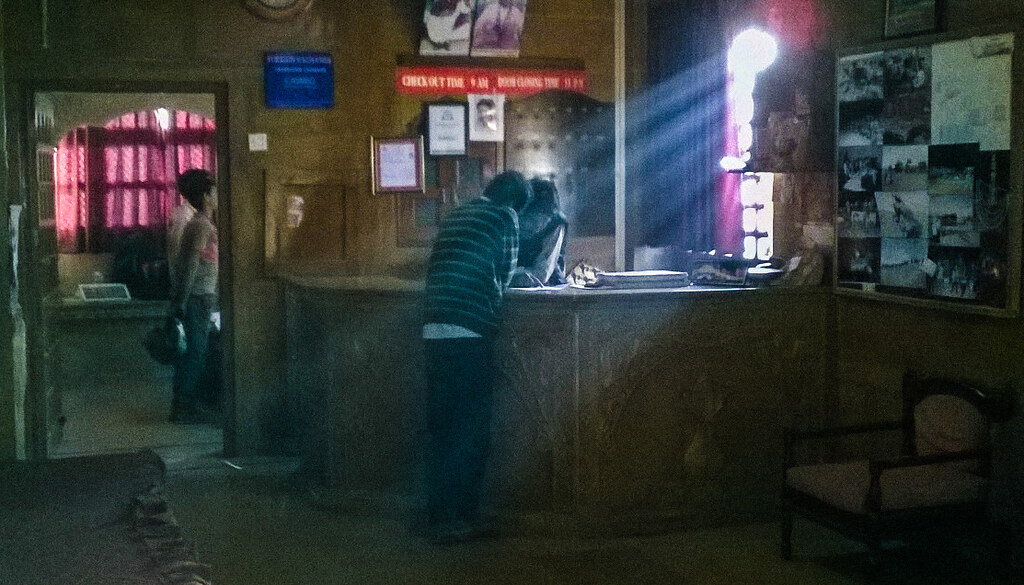 wp_20141229_16_45_32_pro_edited by Triangle Golden 007, on Flickr
wp_20141229_16_45_32_pro_edited by Triangle Golden 007, on Flickr
Jaisalmer Fort in the background
Rest day in Jaisalmer, time to saddle up and head south eastwards to Jodhpur, a quick lake stop on the way
 IMG_0296_edited by Triangle Golden 007, on Flickr
IMG_0296_edited by Triangle Golden 007, on Flickr
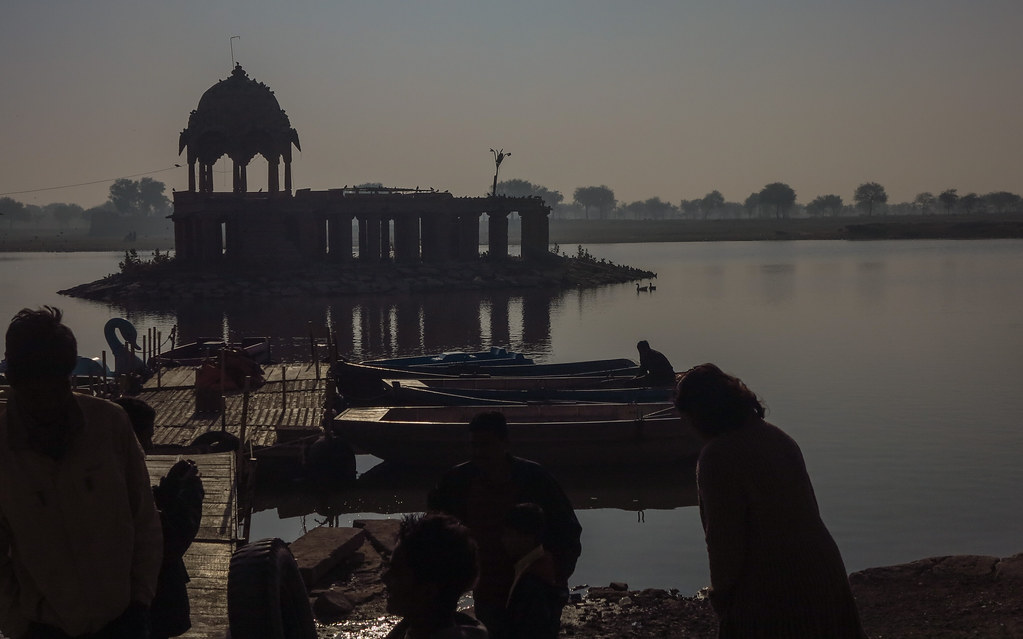 IMG_0297_edited by Triangle Golden 007, on Flickr
IMG_0297_edited by Triangle Golden 007, on Flickr
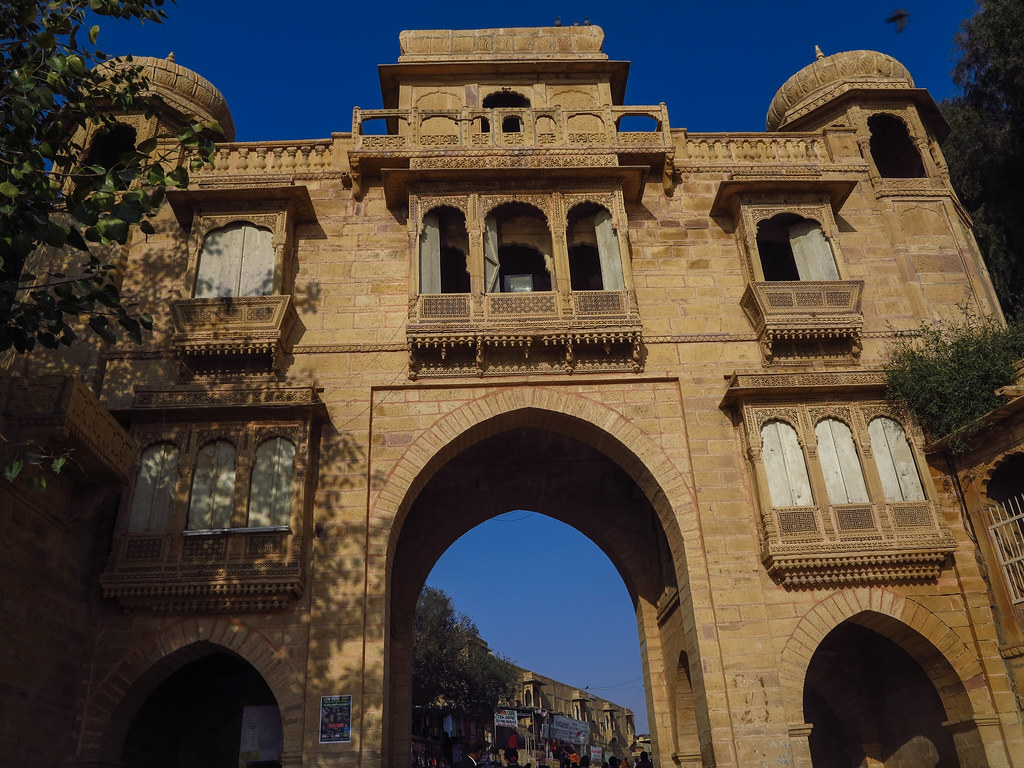 IMG_0298_edited by Triangle Golden 007, on Flickr
IMG_0298_edited by Triangle Golden 007, on Flickr
Lunch – Chapaties and Dahl are the easy to eat staple everywhwere
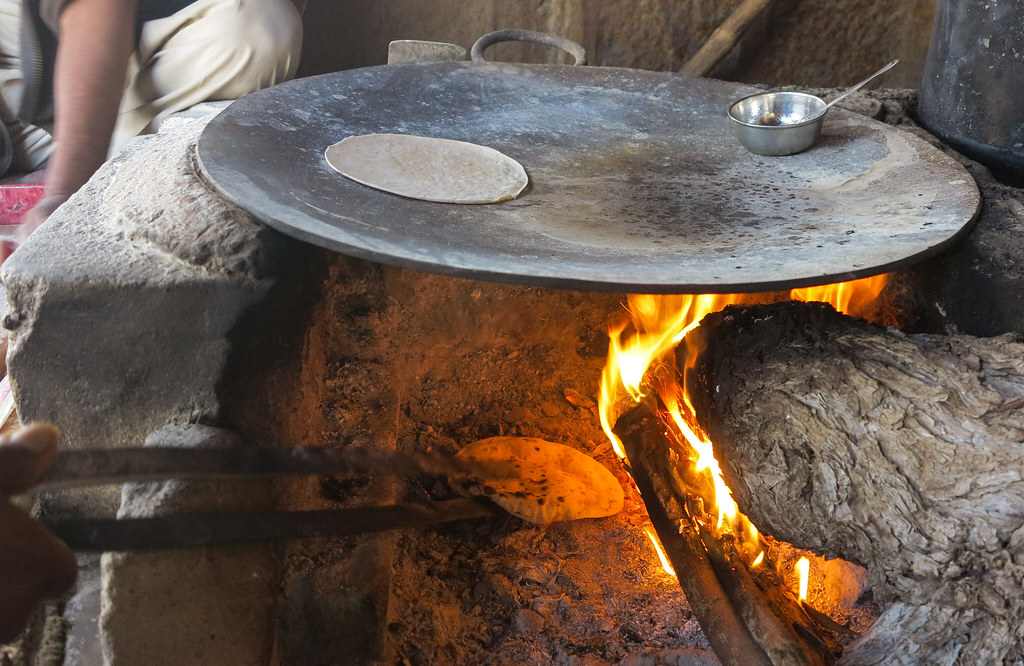 IMG_0303_edited by Triangle Golden 007, on Flickr
IMG_0303_edited by Triangle Golden 007, on Flickr
 IMG_0301_edited by Triangle Golden 007, on Flickr
IMG_0301_edited by Triangle Golden 007, on Flickr
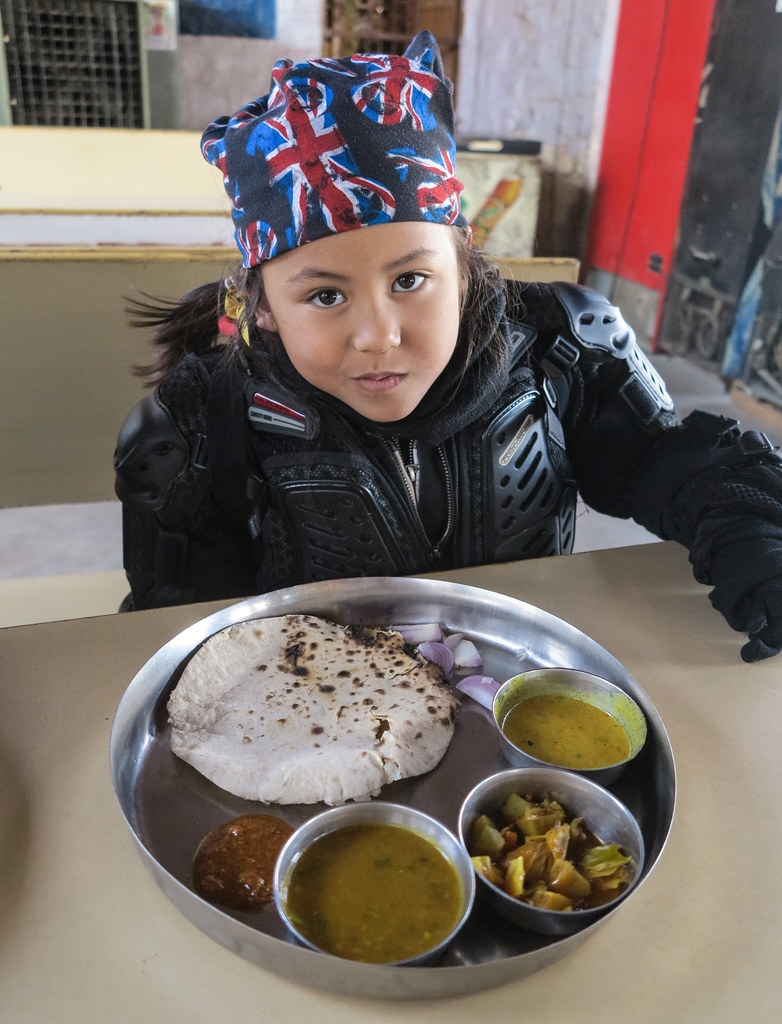 IMG_0306_edited by Triangle Golden 007, on Flickr
IMG_0306_edited by Triangle Golden 007, on Flickr
Approaching Jodhpur & the first glimpse of its breath taking fort
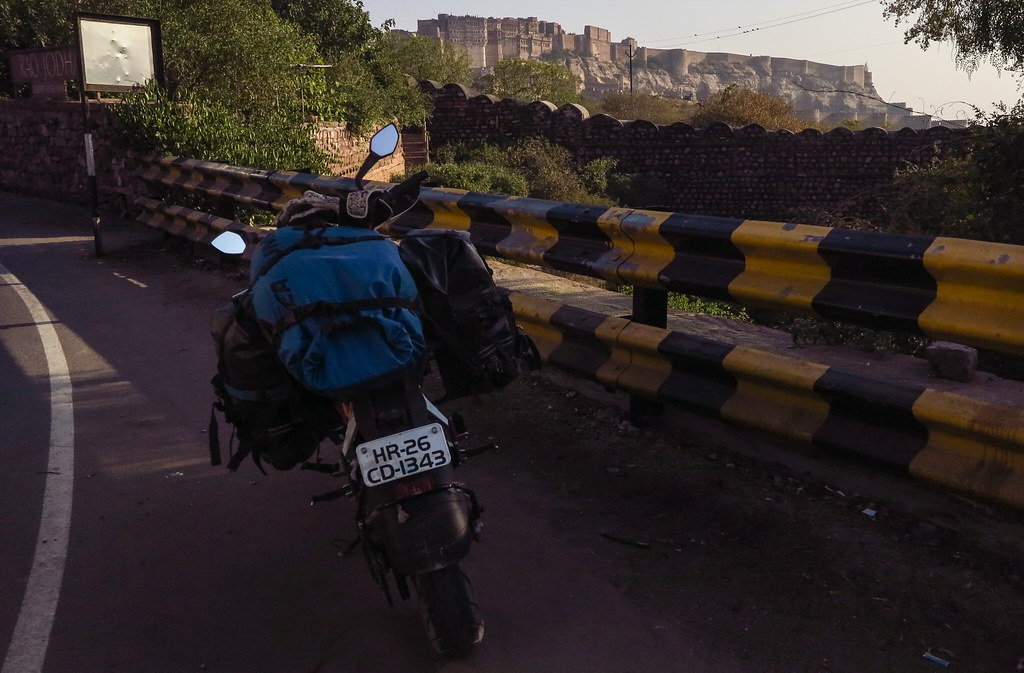 IMG_0307_edited by Triangle Golden 007, on Flickr
IMG_0307_edited by Triangle Golden 007, on Flickr
& huge wall
 IMG_0308_edited by Triangle Golden 007, on Flickr
IMG_0308_edited by Triangle Golden 007, on Flickr
What a beauty
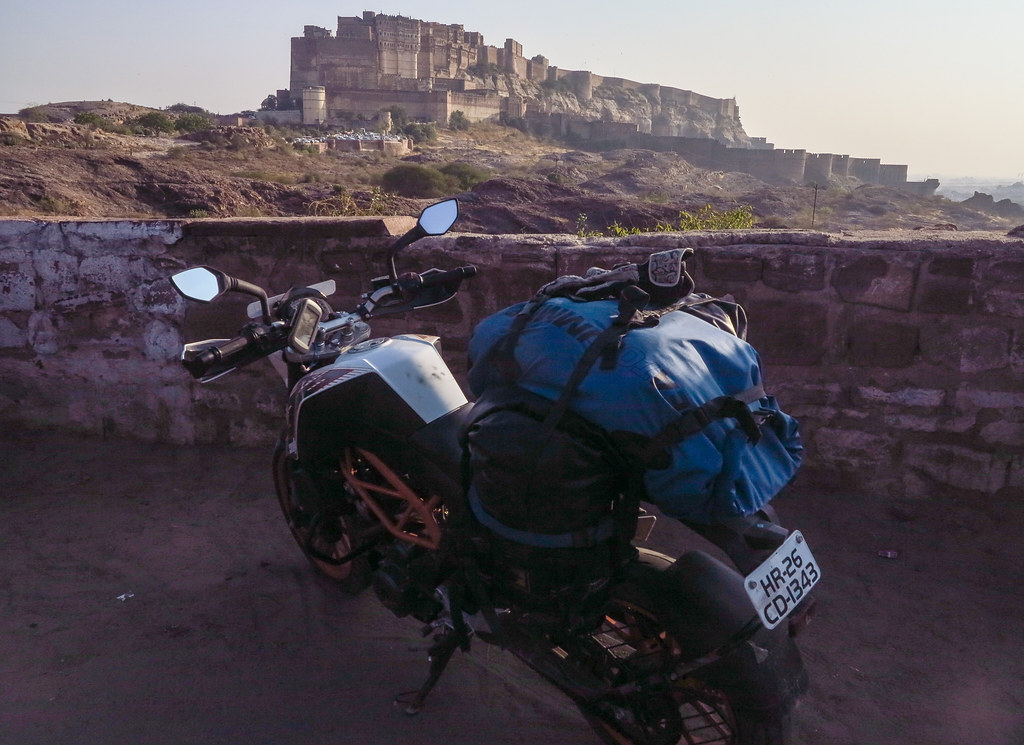 IMG_0310_edited by Triangle Golden 007, on Flickr”
IMG_0310_edited by Triangle Golden 007, on Flickr”
The Mehrangarth Fort
 IMG_0313_edited by Triangle Golden 007, on Flickr
IMG_0313_edited by Triangle Golden 007, on Flickr
Mehrangarh the Fort of Jodhpur crowns a rocky hill that rises 400 feet above the surrounding plain, and appears both to command and to meld with the landscape. One of the largest forts in Rajasthan, it contains some of the finest palaces and preserves in its museum many priceless relics of Indian courtly life.
For over five centuries Mehrangarh has been the headquarters of the senior branch of Rajput clan known as the Rathores. According to their bards, the ruling dynasty of this clan had at an earlier period controlled Kanauj (in what is known as Uttar Pradesh). Like other prominent medieval Rajput rulers – including the famous Prithviraj Chauhan – they were defeated by the invaders from Afghanistan at the end of the 12th century. This catastrophe led to the disruption and migration of the early Rajput clans that they led. The Rathores came to Pali, in Marwar, in what is now central Rajasthan. It is claimed that they were to settle there to protect Brahmin villages against cattle-rustling local tribes. The story may seem somewhat fanciful, but the protection of the priestly caste in one of the traditional roles assigned to the Rajputs. Their task in Pali was the basis of their expanding power in the region.
Rao Chunda (r. 1384-1428), the twelfth Rathore to rule in Marwar, established his capital at Mandore, which he had acquired as a part of a dowry. Two generations later, Rao Jodha (r. 1438-89) began to build a fort at a new site six miles to the south, on an isolated rock with a higher elevation and better natural defences. Jodhpur, the town that sprang up at its base, was named after him. The fort was named Mehrangarh, meaning ‘fort of the sun’ – a reference to the clan’s mythical descent from the sun god Surya. Over 500 yards long, its wall rises in places to a height of 120 feet and is 70 feet thick.
For Rao Jodha’s successors, these defences were essential, though not always adequate. The centuries following the fort’s foundation were marked by rivalries between the Rajput clans and by other external threats. A dominant influence over the region was asserted first by the Delhi Sultanate and later by the Mughals. As they built their empire in India, the Mughals sought to subdue Rajput states like Marwar and its neighbours in Rajasthan, but they did not wish to eradicate them. To most established Indian rulers they preferred to offer terms of subsidiary alliance: serve the empire, they said, and you can retain control over your ancestral lands. Four successive generations of rulers in Marwar, between 1581 and 1678, accepted this challenge and became loyal allies and in effect feudatory chiefs of the empire. But for decades both before and after this phase, the understanding with the Mughals broke down, the city and fort of Jodhpur were overrun, and the Rathores were reduced to guerrilla-style resistance in their own kingdom. It did not make matters easier that their relations with the bordering Rajput states such as Jaipur and Bikaner also tended to be volatile.
History – Mehrangarh Museum Trust
 IMG_0330_edited by Triangle Golden 007, on Flickr
IMG_0330_edited by Triangle Golden 007, on Flickr

Truly splendid
 IMG_0319_edited by Triangle Golden 007, on Flickr
IMG_0319_edited by Triangle Golden 007, on Flickr
 IMG_0322_edited by Triangle Golden 007, on Flickr
IMG_0322_edited by Triangle Golden 007, on Flickr
 IMG_0323_edited by Triangle Golden 007, on Flickr
IMG_0323_edited by Triangle Golden 007, on Flickr
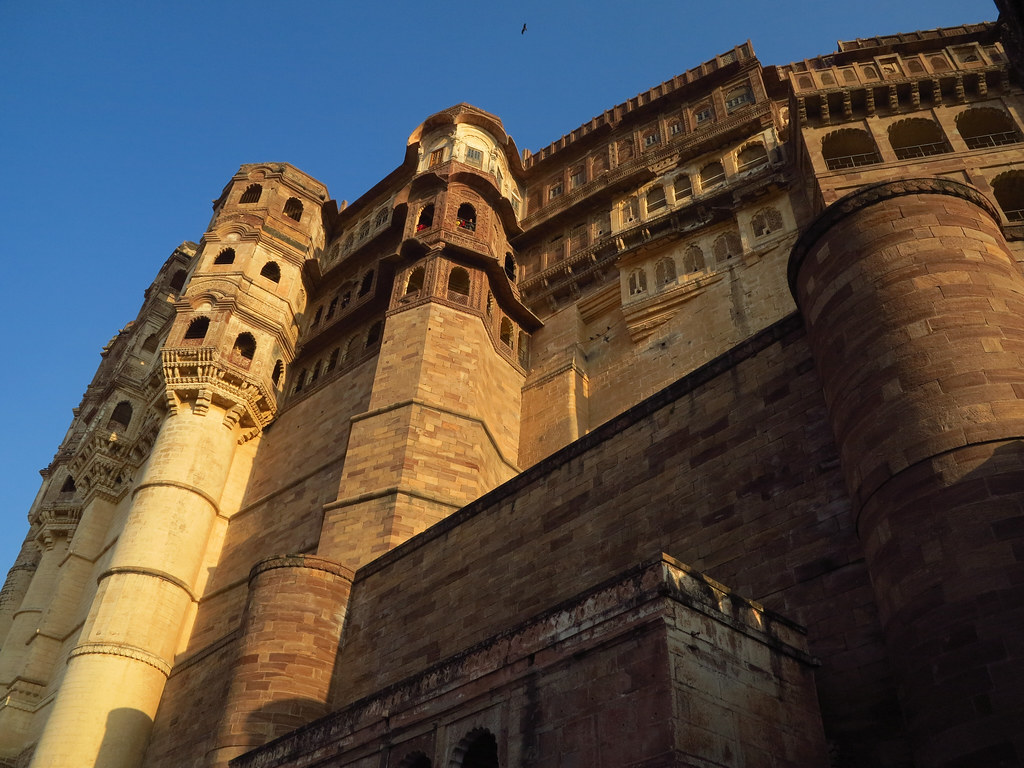 IMG_0329_edited by Triangle Golden 007, on Flickr
IMG_0329_edited by Triangle Golden 007, on Flickr
 IMG_0334_edited by Triangle Golden 007, on Flickr
IMG_0334_edited by Triangle Golden 007, on Flickr
Nicely preserved
 IMG_0337_edited by Triangle Golden 007, on Flickr
IMG_0337_edited by Triangle Golden 007, on Flickr
 IMG_0339_edited by Triangle Golden 007, on Flickr
IMG_0339_edited by Triangle Golden 007, on Flickr
A temple devoted to the Maharajah nearby
Rode up to the Jee Ri hotel, good location near the old city market and great views from the roof
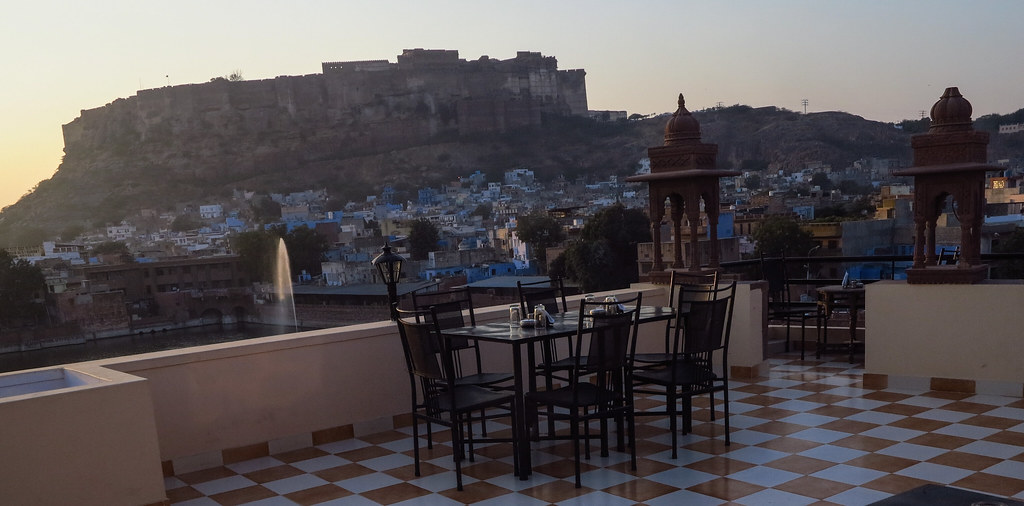 IMG_0346_edited by Triangle Golden 007, on Flickr
IMG_0346_edited by Triangle Golden 007, on Flickr
If you want to treat yourself, try the Pal Hotel right near the old market, rooms start at 5,500 Rupees a night (2,200 Bht)
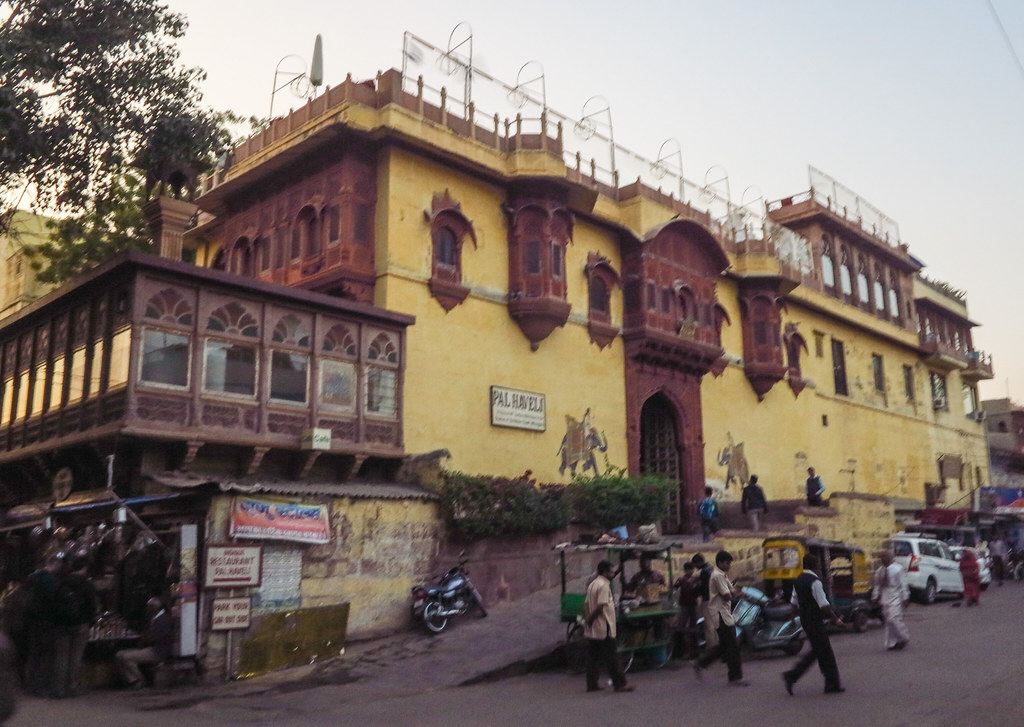 IMG_0347_edited by Triangle Golden 007, on Flickr
IMG_0347_edited by Triangle Golden 007, on Flickr
It was the Pal family home 300 years ago, a real classy place, oozed old style
 IMG_0366_edited by Triangle Golden 007, on Flickr
IMG_0366_edited by Triangle Golden 007, on Flickr
Great roof top bar
 IMG_0384_edited by Triangle Golden 007, on Flickr
IMG_0384_edited by Triangle Golden 007, on Flickr
& what a view for dining, beat that!!
 IMG_0375_edited by Triangle Golden 007, on Flickr
IMG_0375_edited by Triangle Golden 007, on Flickr
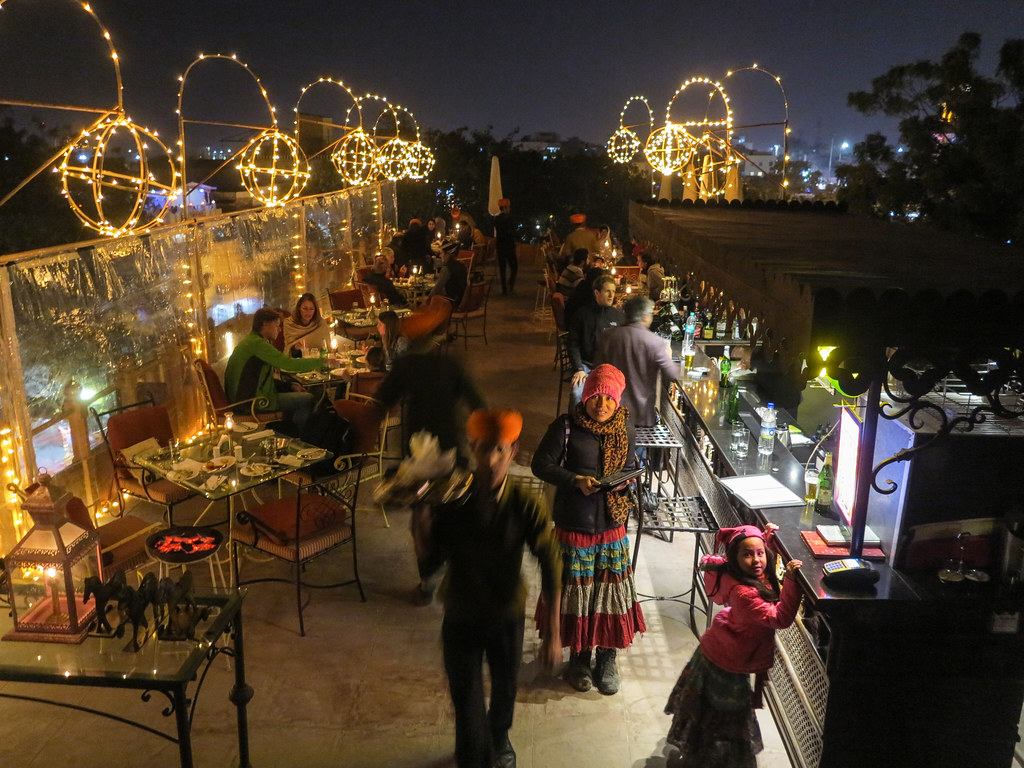 IMG_0372_edited by Triangle Golden 007, on Flickr
IMG_0372_edited by Triangle Golden 007, on Flickr
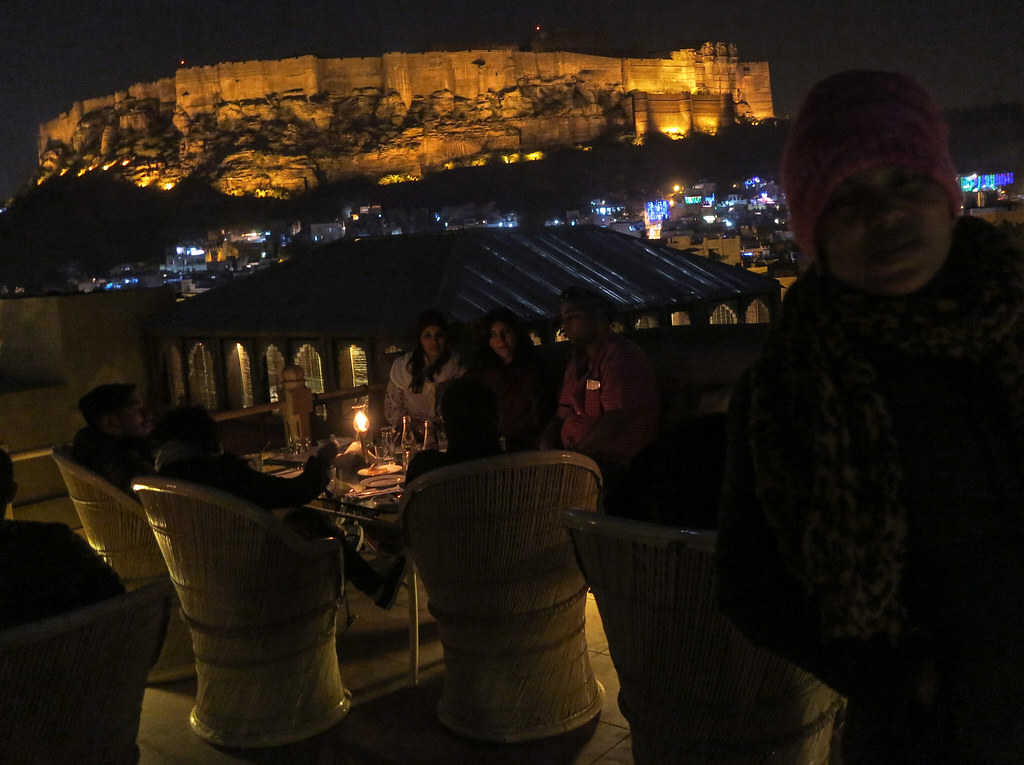 IMG_0378_edited by Triangle Golden 007, on Flickr
IMG_0378_edited by Triangle Golden 007, on Flickr
Highly recommended
Jodhpur
According to Rathore tradition, the clan traces its origins back to the Hindu god, Rama, hero of the epic Ramayana, and thence to the sun. So the Rathore’s belong to the Suryavansha (solar race) branch of the Kshatriyas, the warrior caste of Hindus. Later, breaking into historical reality, in 470 A.D. Nayal Pal conquered the kingdom of Kanauj, near modern Kanpur in Uttar Pradesh. The Rathor capital for seven centuries, Kanauj fell in 1193 to the Afghan invader’s led by Muhammad Ghori.
The fleeing ruler, Jai Chand was drowned in the Ganga. But his son Siyaji, had better luck. An expedient marriage alliance between the Rathore Sihaji and the sister of a local prince enabled the Rathors to consolidate themselves in this region. In fact, they prospered to such a degree that they managed to oust the Pratiharas of Mandor, nine km to the north of present day Jodhpur.He later set himself up as an independent ruler around the wealthy trading centre of Pali, just south of Jodhpur. His descendants flourished, battled often, won often, and in 1381 Rao Chanda ousted the Parihars from Mandor which then became the Rathore seat of government.Rathore fortunes then turned for better. Rao Chanda’s son and heir, Rainmal, won praise for his capture of Ajmer and was then entrusted with the care of his orphaned nephew, destined to inherit the Mewar throne of Chittor. Rainmal may well have had his eyes on this fine, hilltop fort. But court intrigue and treachery stopped him. In 1438 he was doped with opium, and finally shot dead. This triggered bitter feuds, ending with Mewar and Marwar becoming separate states.Rathore legend continues in various versions. One is that Jodha, one of Rainmal’s 24 sons, fled Chittor and finally, 15 years later, recaptured Mandor in 1453. Five years later he was acknowledged as ruler. A holy man sensibly advised him to move his capital to hilltop safety.
http://jodhpur.nic.in/dp.html#history
The old market & famous clock tower in Jodhpur
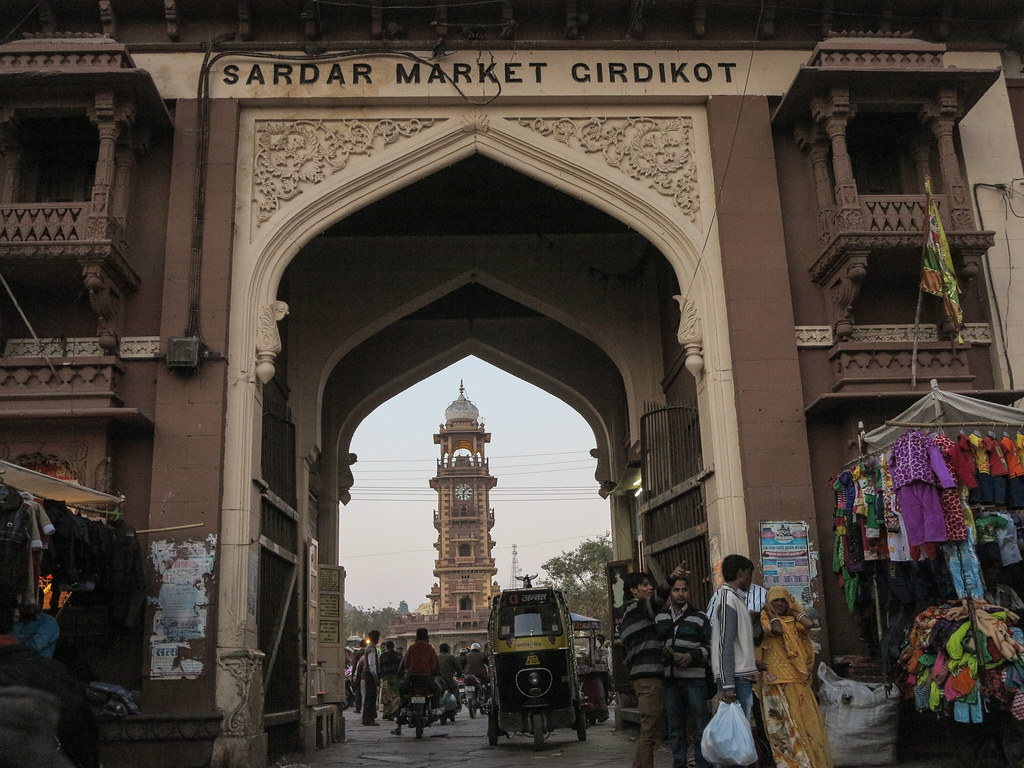 IMG_0357_edited by Triangle Golden 007, on Flickr
IMG_0357_edited by Triangle Golden 007, on Flickr
 IMG_0355_edited by Triangle Golden 007, on Flickr
IMG_0355_edited by Triangle Golden 007, on Flickr
Chaos and bustle
 IMG_0353_edited by Triangle Golden 007, on Flickr
IMG_0353_edited by Triangle Golden 007, on Flickr
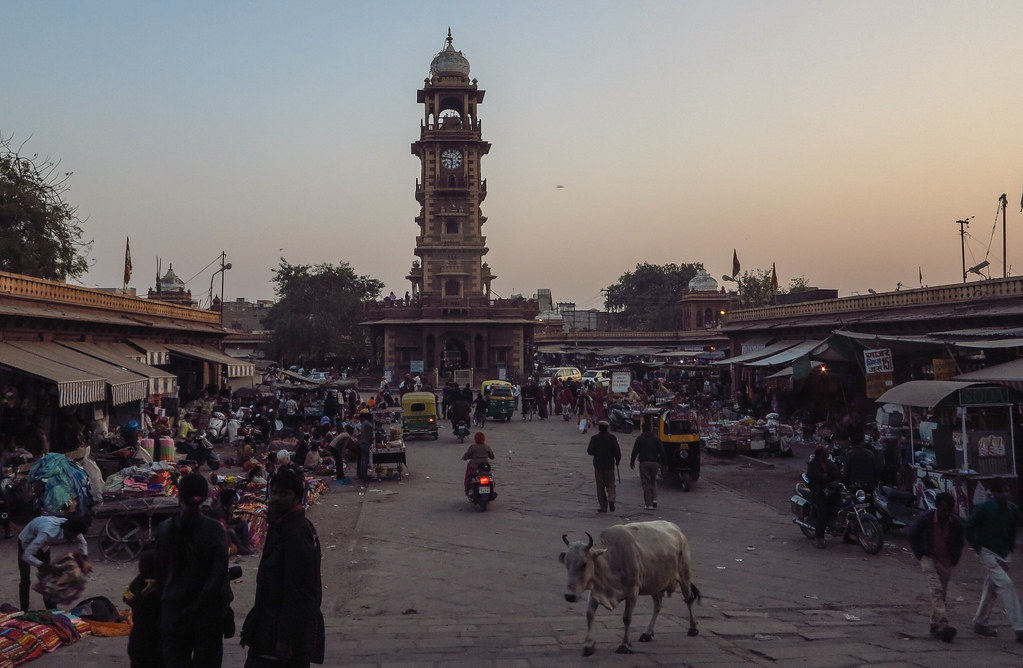 IMG_0350_edited by Triangle Golden 007, on Flickr
IMG_0350_edited by Triangle Golden 007, on Flickr
Police
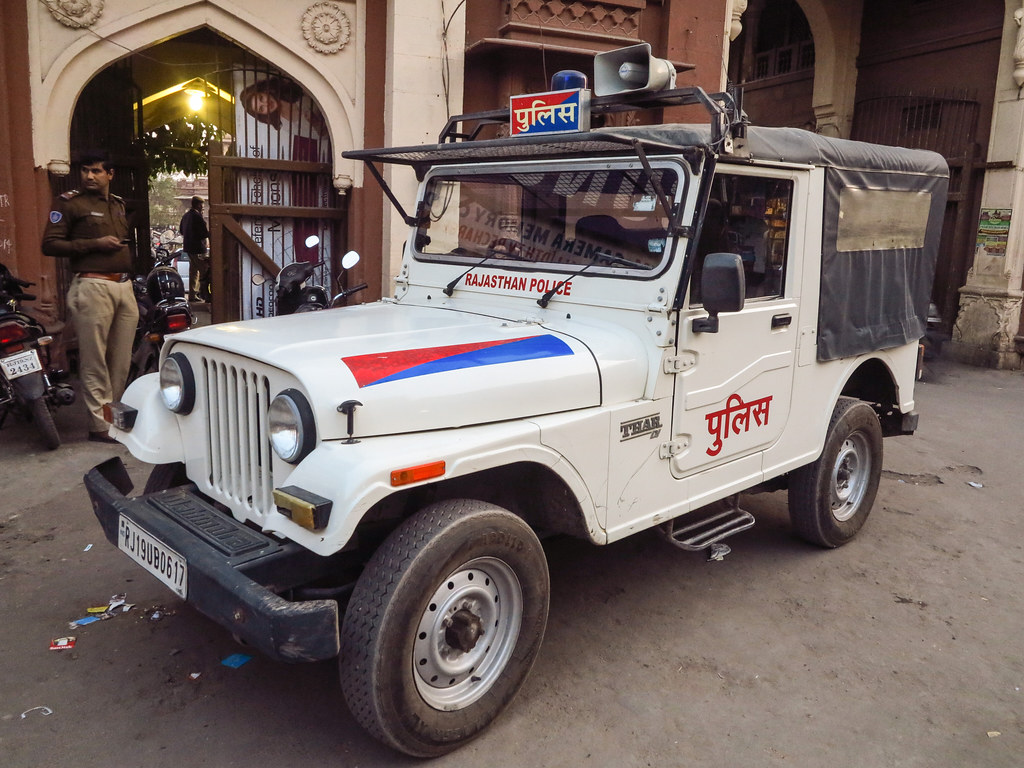 IMG_0349_edited by Triangle Golden 007, on Flickr
IMG_0349_edited by Triangle Golden 007, on Flickr
 IMG_0358_edited by Triangle Golden 007, on Flickr
IMG_0358_edited by Triangle Golden 007, on Flickr
 IMG_0359_edited by Triangle Golden 007, on Flickr
IMG_0359_edited by Triangle Golden 007, on Flickr
A great bustling city, we liked Jodhpur immensely
 IMG_0364_edited by Triangle Golden 007, on Flickr
IMG_0364_edited by Triangle Golden 007, on Flickr
Needed a mid stop point before Udairpur, Ghanerao seemed like a good idea.
All going well, not too cold, probably 19c
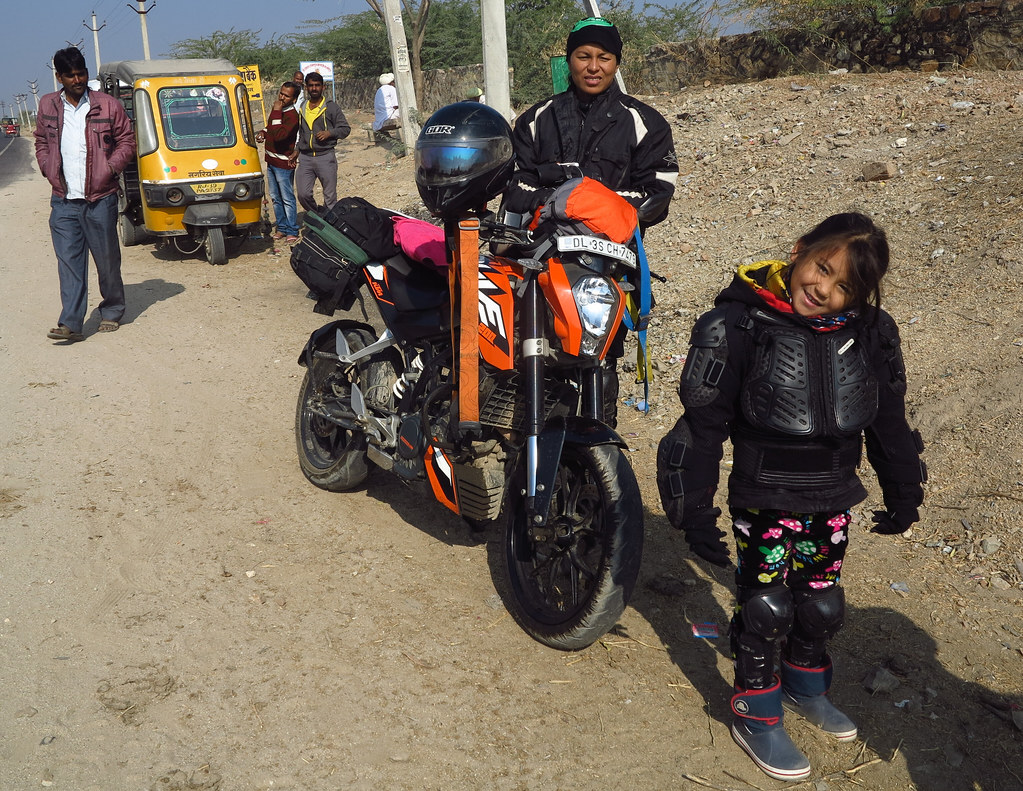 IMG_0387_edited by Triangle Golden 007, on Flickr
IMG_0387_edited by Triangle Golden 007, on Flickr
A Jain/ Hindu ceremony along the way
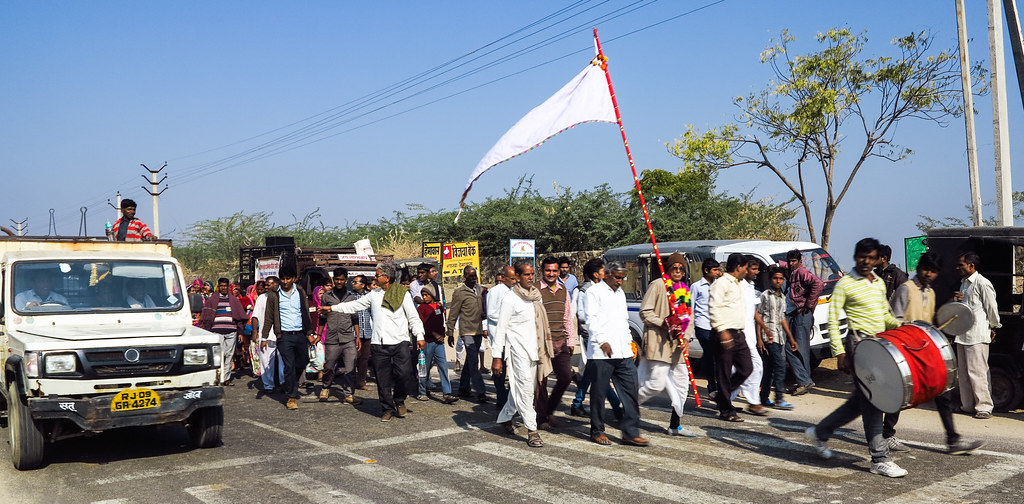 IMG_0390_edited by Triangle Golden 007, on Flickr
IMG_0390_edited by Triangle Golden 007, on Flickr
At first we thought a coffin was in there, but not
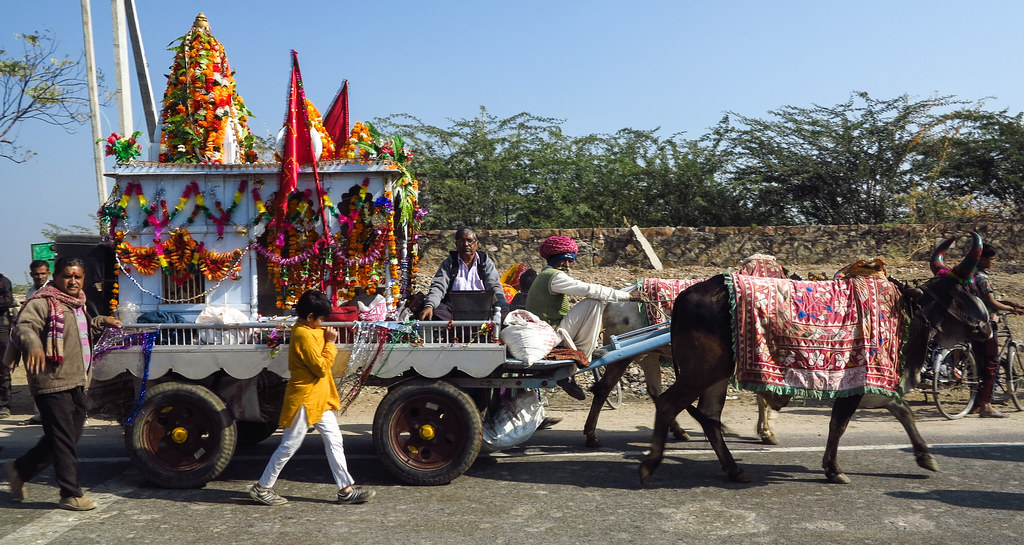 IMG_0393_edited by Triangle Golden 007, on Flickr
IMG_0393_edited by Triangle Golden 007, on Flickr
ATGATT (all the gear all the time) for India – this one is often the most important
Found the old, aristocratic family palace, which has been converted into a hotel – fantastic place
 IMG_0415_edited by Triangle Golden 007, on Flickr
IMG_0415_edited by Triangle Golden 007, on Flickr
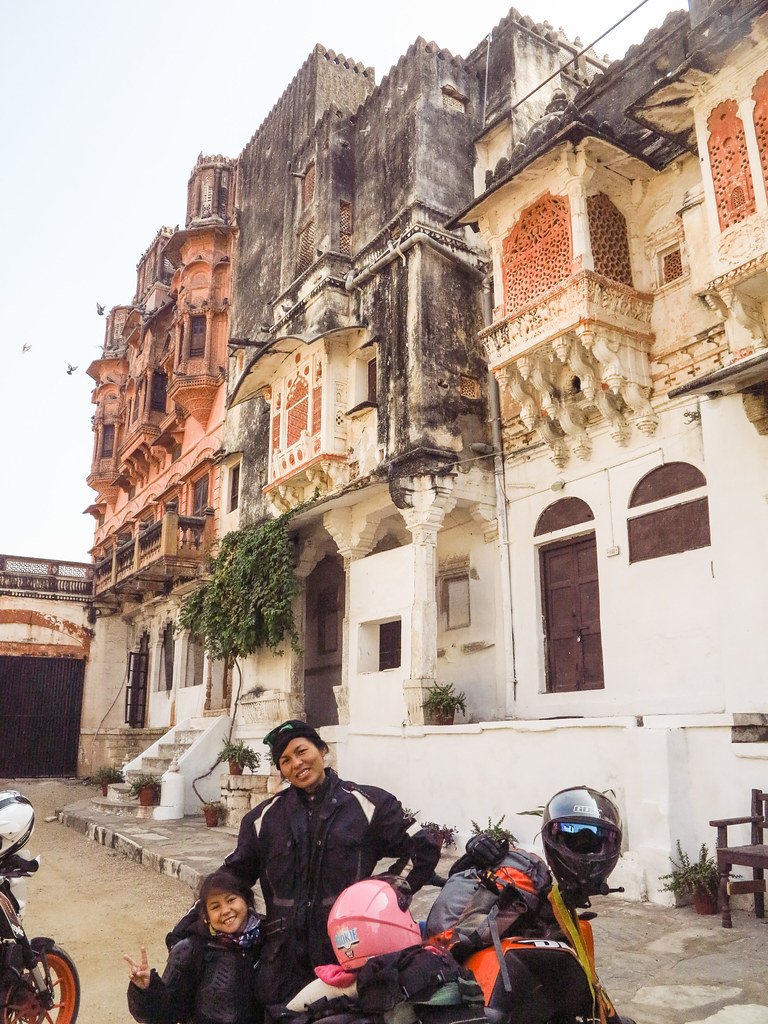 IMG_0412_edited by Triangle Golden 007, on Flickr
IMG_0412_edited by Triangle Golden 007, on Flickr
Oozing character
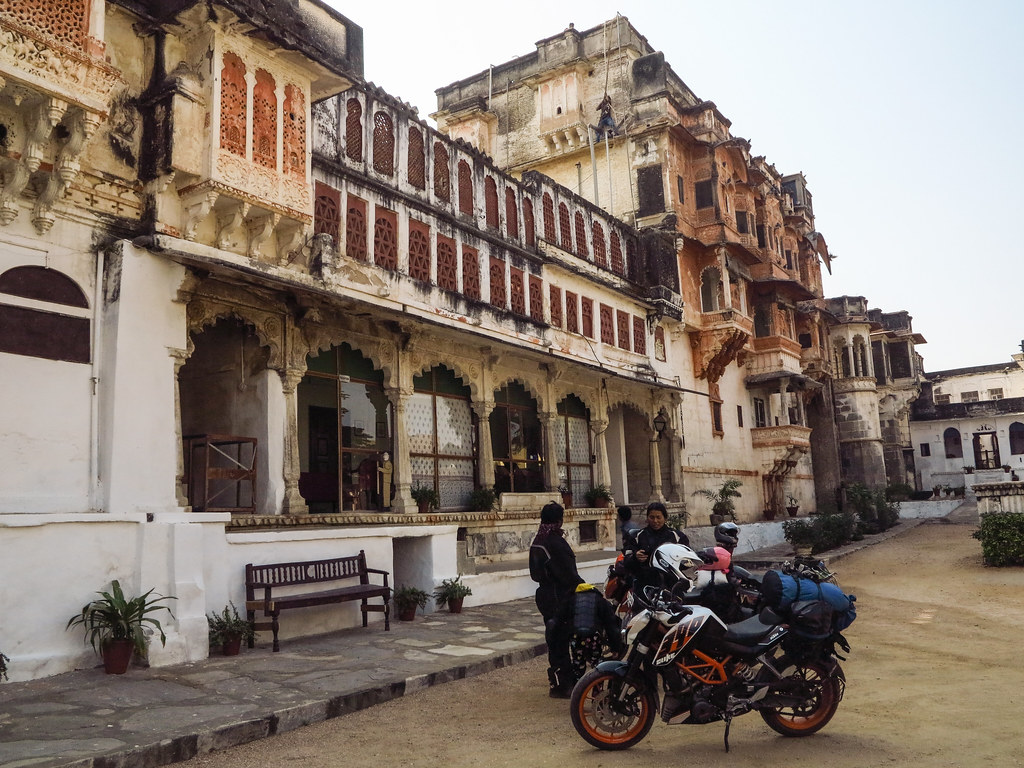 IMG_0403_edited by Triangle Golden 007, on Flickr
IMG_0403_edited by Triangle Golden 007, on Flickr
 IMG_0414_edited by Triangle Golden 007, on Flickr
IMG_0414_edited by Triangle Golden 007, on Flickr
Not knowing what to expect, this was the entrance to our converted room – even beautiful marble slab floors
 IMG_0419_edited by Triangle Golden 007, on Flickr
IMG_0419_edited by Triangle Golden 007, on Flickr
The room — perfect
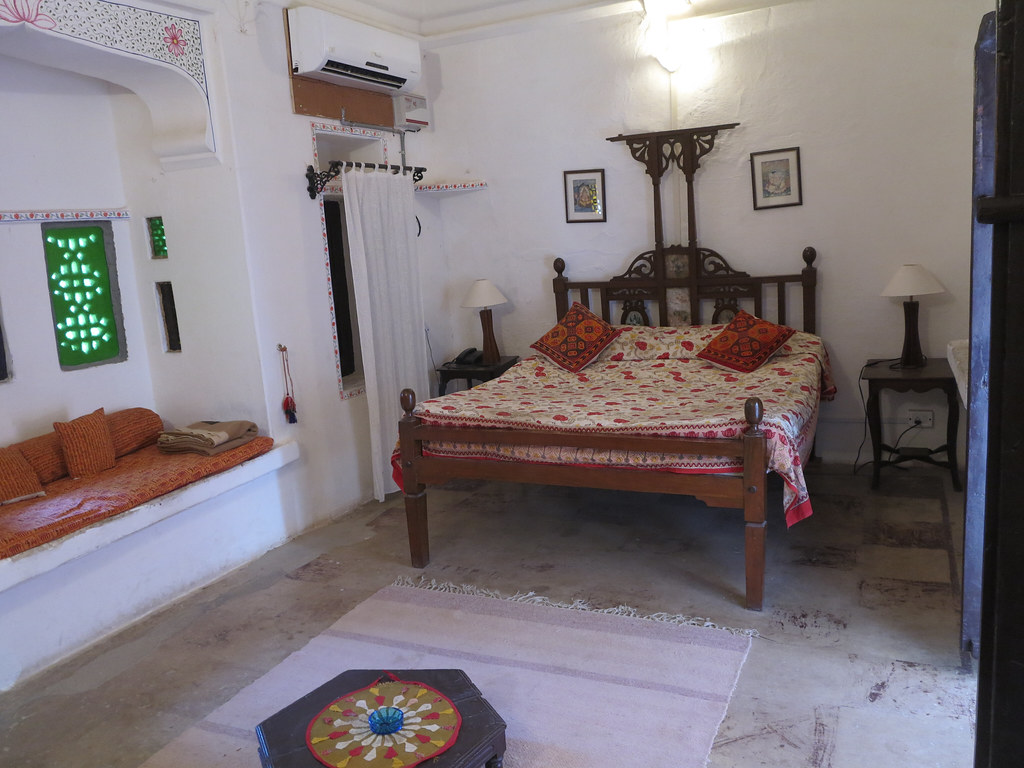 IMG_0420_edited by Triangle Golden 007, on Flickr
IMG_0420_edited by Triangle Golden 007, on Flickr
 IMG_0421_edited by Triangle Golden 007, on Flickr
IMG_0421_edited by Triangle Golden 007, on Flickr
400 years old and funky rooms, highly recommended
Early start & headed for the big smoke, Udaipur. We had enough time for quick visit to the Ranakpur Jain Temple
Quite a cracker
 IMG_0428_edited by Triangle Golden 007, on Flickr
IMG_0428_edited by Triangle Golden 007, on Flickr
 IMG_0432_edited by Triangle Golden 007, on Flickr
IMG_0432_edited by Triangle Golden 007, on Flickr
Built in the 15th century and took 50 years to build
Old market in Radakpur town, flower sellers
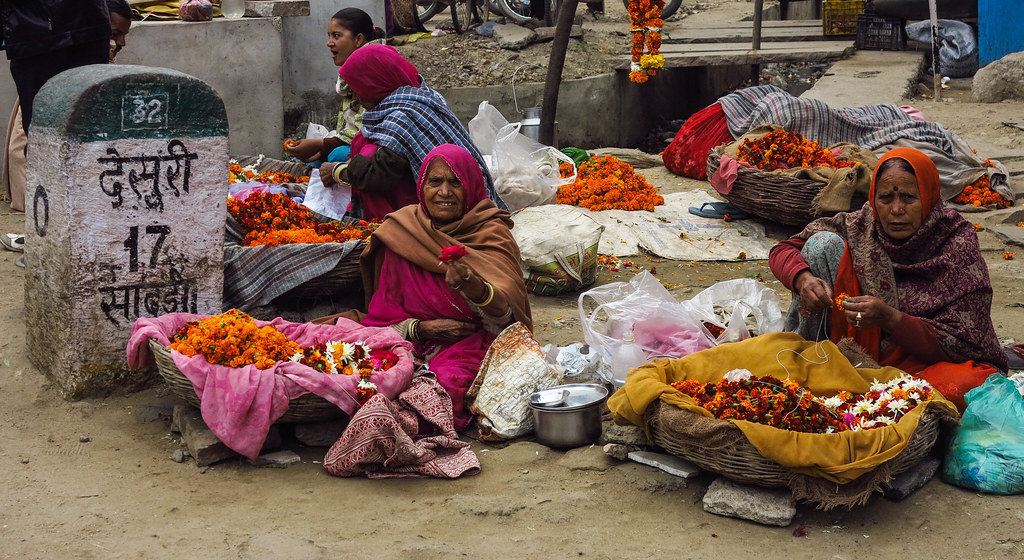 IMG_0443_edited by Triangle Golden 007, on Flickr
IMG_0443_edited by Triangle Golden 007, on Flickr
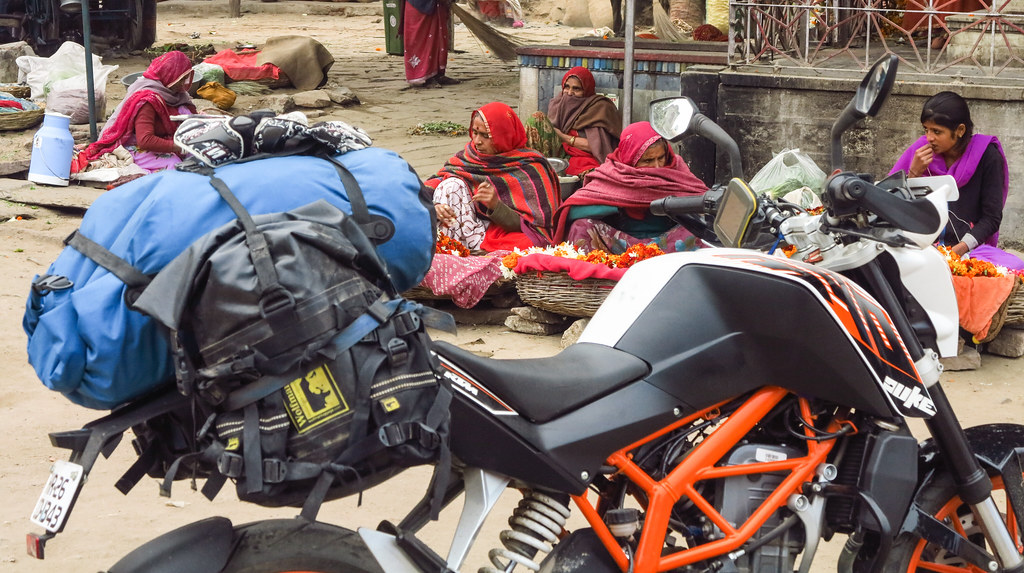 IMG_0442_edited by Triangle Golden 007, on Flickr
IMG_0442_edited by Triangle Golden 007, on Flickr
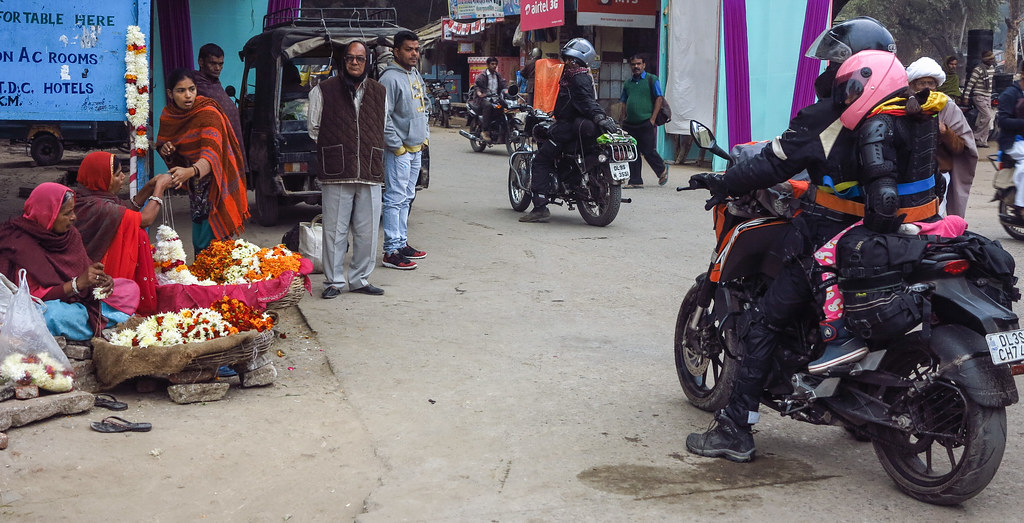 IMG_0446_edited by Triangle Golden 007, on Flickr
IMG_0446_edited by Triangle Golden 007, on Flickr
Monkeys are everywhere in Rajasthan
 IMG_0448_edited by Triangle Golden 007, on Flickr
IMG_0448_edited by Triangle Golden 007, on Flickr
The old road to Udaipur is a really fun ride
 IMG_0450_edited by Triangle Golden 007, on Flickr
IMG_0450_edited by Triangle Golden 007, on Flickr
Hardly any traffic a plenty of sweeping turns through the beautiful hills
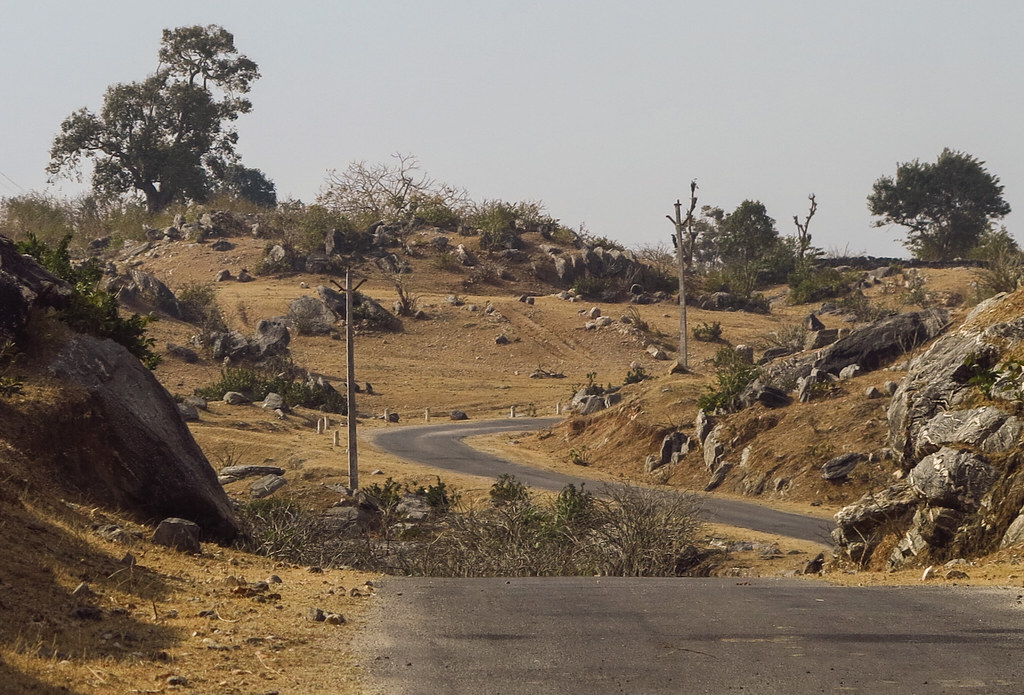 IMG_0451_edited by Triangle Golden 007, on Flickr
IMG_0451_edited by Triangle Golden 007, on Flickr
Lets hope this isnt headed this way, looks pretty angry
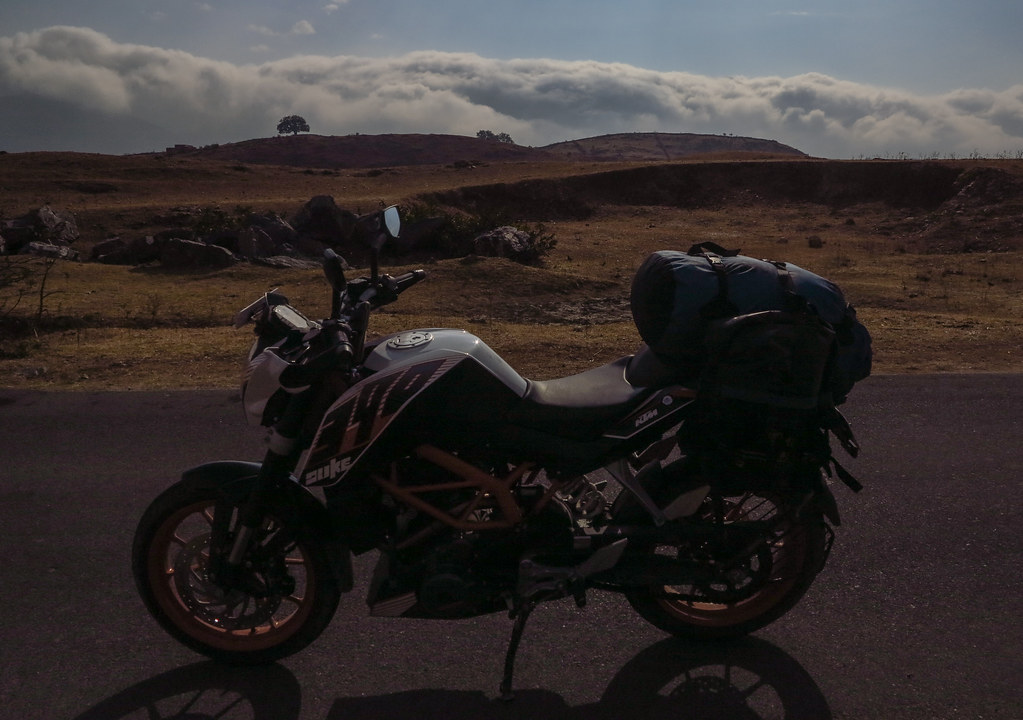 IMG_0453_edited by Triangle Golden 007, on Flickr
IMG_0453_edited by Triangle Golden 007, on Flickr
Looks like we might be ok
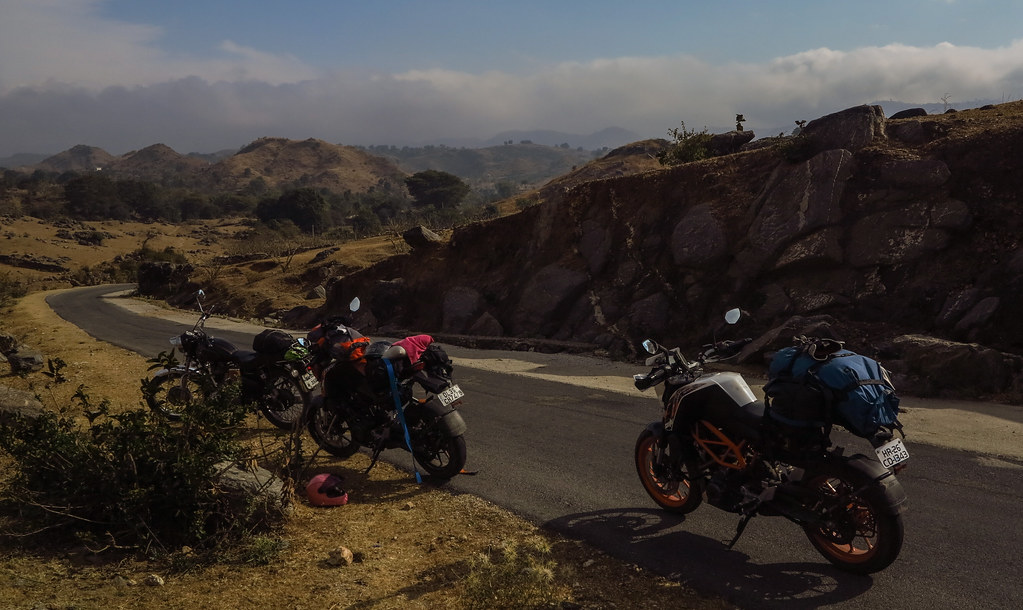 IMG_0456_edited by Triangle Golden 007, on Flickr
IMG_0456_edited by Triangle Golden 007, on Flickr
Kumbhalgarh Fort is on the way and worth a stop. From here, looks like something out of a horror movie
 IMG_0459_edited by Triangle Golden 007, on Flickr
IMG_0459_edited by Triangle Golden 007, on Flickr
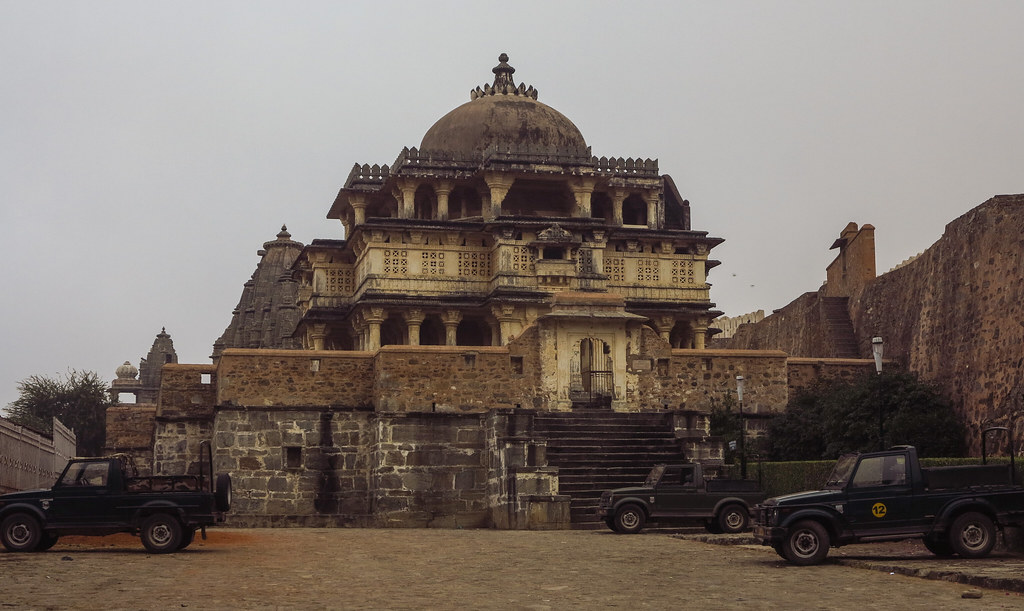 IMG_0461_edited by Triangle Golden 007, on Flickr
IMG_0461_edited by Triangle Golden 007, on Flickr
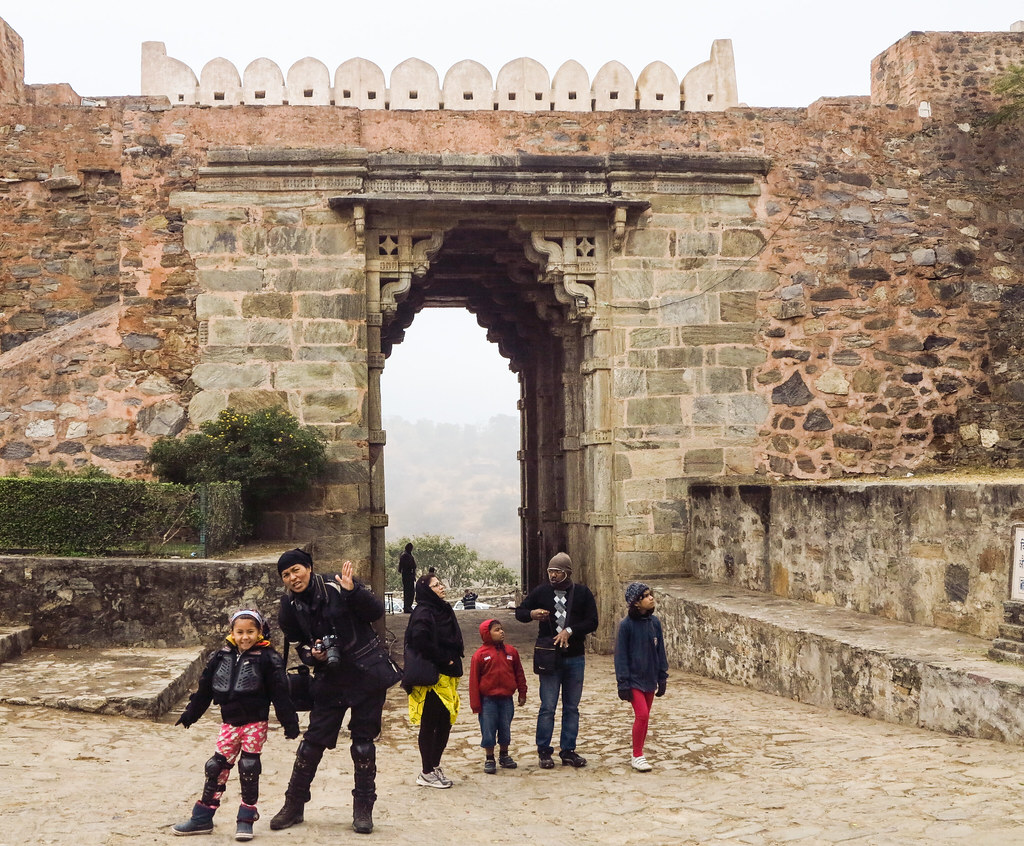 IMG_0463_edited by Triangle Golden 007, on Flickr
IMG_0463_edited by Triangle Golden 007, on Flickr
We didnt know this before hand but the Kumbhalgarh Fort is the second longest wall in the world after The Great Wall of China
 IMG_0465_edited by Triangle Golden 007, on Flickr
IMG_0465_edited by Triangle Golden 007, on Flickr

Built on a hilltop 1100 metres above sea level, the fort of Kumbhalgarh has perimeter walls that extend 36 kilometres, it is the second longest wall in the world.[1] The frontal walls are fifteen feet thick. Kumbhalgarh has seven fortified gateways. There are over 360 temples within the fort, 300 ancient Jain and the rest Hindu. From the palace top, it is possible to see kilometers into the Aravalli Range. The sand dunes of the Thar desert can be seen from the fort walls.
According to legend, in 1443, the Maharana of Kumbhalgarh, Rana Kumbha, was initially repeatedly unsuccessful in attempts to build the fort wall. A spiritual preceptor was consulted about the construction problems and advised the ruler that a voluntary human sacrifice would solve whatever was causing the impediment. The spiritual advisor advised building a temple where the head should fall and building the wall and the fort where the rest of his body lay. As can be expected, for some time no one volunteered, but one day, a pilgrim (some versions suggest a soldier, and some, that the spiritual preceptor and the pilgrim were one and the same) volunteered and was ritually decapitated. Today the main gate of the fortress, Hanuman Pol, contains a shrine and a temple to commemorate the great sacrifice.
According to popular folklore, Maharana Kumbha used to burn massive lamps that consumed fifty kilograms of gheeand a hundred kilograms of cotton to provide light for the farmers who worked during the nights in the valley.
Its wall is the second largest wall in Asia, and the world.
Kumbhalgarh – Wikipedia, the free encyclopedia
Udaipur in relation to the Fort above
 IMG_0468_edited by Triangle Golden 007, on Flickr
IMG_0468_edited by Triangle Golden 007, on Flickr
Started to get foggy and really chilly as we approached Udaipur
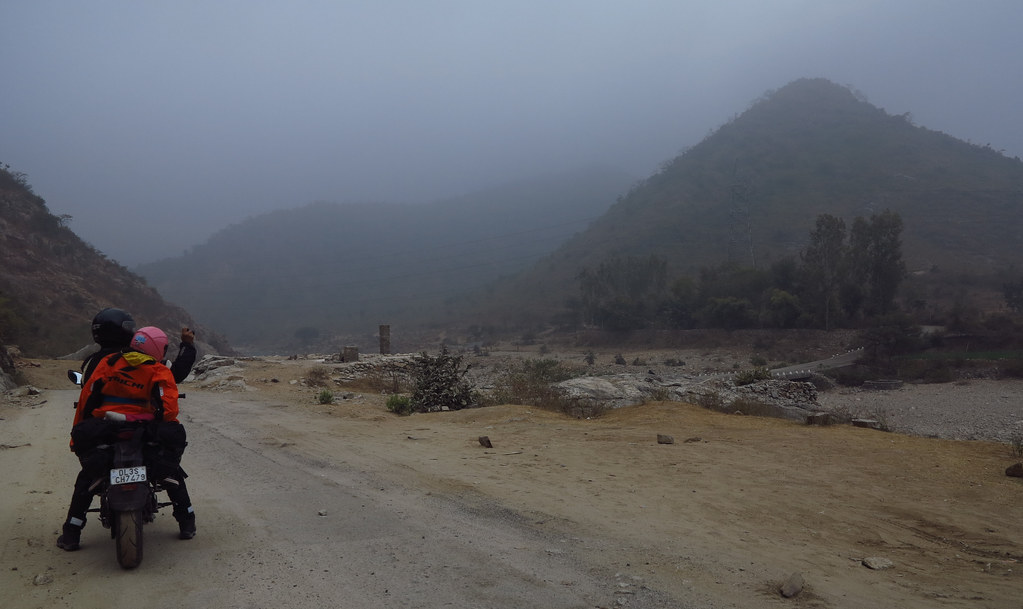 IMG_0470_edited by Triangle Golden 007, on Flickr
IMG_0470_edited by Triangle Golden 007, on Flickr
Roads through the villages were worn out
 IMG_0471_edited by Triangle Golden 007, on Flickr
IMG_0471_edited by Triangle Golden 007, on Flickr
Outside the villages beautiful
 IMG_0472_edited by Triangle Golden 007, on Flickr
IMG_0472_edited by Triangle Golden 007, on Flickr
Into Udaipur – this might be quite a show?
 IMG_0474_edited by Triangle Golden 007, on Flickr
IMG_0474_edited by Triangle Golden 007, on Flickr
Udiapur is a huge, beautiful city on a big lake with oodles of old historic building that keep the tourists coming. Population is around 600,000. The Indian sections of the James Bond 007 movie Octopussy were filmed here, several restaurants show this movie every evening.
Hotels are plentiful and cheap, many are converted noble homes and palaces. We paid 2,200 rupees (1,100 Bht) for this gigantic room in high season in s uperb location with secure parking for the bikes. Right on the lake.
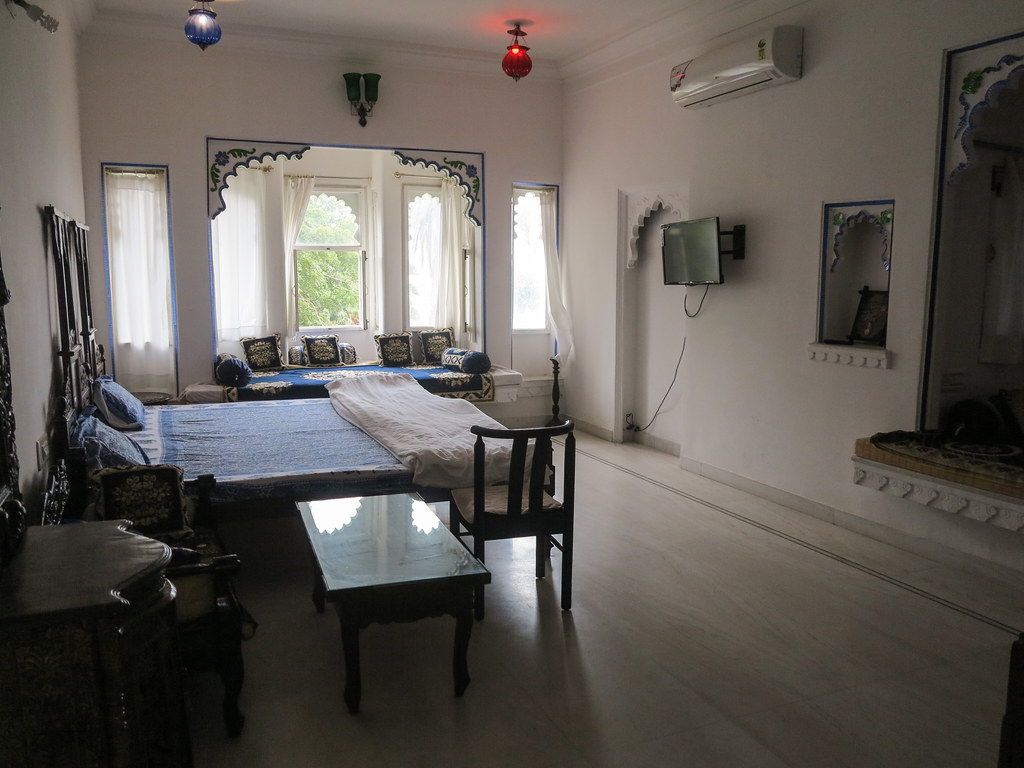 IMG_0476_edited by Triangle Golden 007, on Flickr
IMG_0476_edited by Triangle Golden 007, on Flickr
 IMG_0478_edited by Triangle Golden 007, on Flickr
IMG_0478_edited by Triangle Golden 007, on Flickr
 IMG_0479_edited by Triangle Golden 007, on Flickr
IMG_0479_edited by Triangle Golden 007, on Flickr
There is loads to see in Udaipur, we only had one night. This is somewhere id like to spend a few days….. a few of what’s to see:
City Palace, UdaipurMain article: City Palace, Udaipur
Standing on the east bank of Lake Pichola is a massive series of palaces built at different times from 1559. The balconies of the palace provide panoramic views of the “Jag Niwas” (the Lake Palace Hotel). They also have views of Jag Mandir on one side and the city of Udaipur on the other. Its main entrance is through the triple-arched gate – the Tripolia, built in 1725. The way now leads to a series of courtyards, overlapping parations, terraces, corridors and gardens. There is a Suraj Gokhda, where the maharanas of Mewar presented themselves in the times of trouble to the people to restore confidence. The Mor-chowk (Peacock courtyard), gets its name from the mosaics in glass decorating its walls. The chini chitrashala is noteworthy while a series of wall paintings of Krishna are on display in Bhim Vilas. There are numerous other palaces such as Dilkhush mahal, Sheesh mahal, Moti mahal and Krishna vilas – in memory of a princess of striking beauty who poisoned herself to avert a bloody battle for her hand by rival princes. Now the palace contains many antique articles, paintings, decorative furniture and utensils and attracts thousands of visitors every day. Celebration mall (Highest rated mall of Rajasthan) that is India’s first and only Heritage mall, is now serving as a tourist attraction destination.
The former guesthouse of the city palace, Shiv Niwas Palace and the Fateh Prakash Palace have been converted into heritage hotels.
Lake PalaceMain article: Lake Palace
The Lake Palace was built in 1743-1746. It is made of marble and is situated on Jag Niwas island in Lake Pichola. It was originally built as a royal summer palace, but is now a luxury 5 Star hotel, operating under the “Taj Hotels Resorts and Palaces” banner.
Jag MandirMain article: Jag Mandir
Jag Mandir is another island in Lake Pichola which is known for its garden courtyard. Shah Jahan took refuge here while revolting against his father. There is a restaurant run by the HRH group of hotels.
Monsoon PalaceMain article: Monsoon Palace
Monsoon Palace also known as Sajjan Garh Palace The summer resort of the Maharajas is atop the hill overlooking all of the lakes. This palace had a way to collect rain water for consumption all year around.
Jagdish TempleThe Jagdish Temple is a large Hindu temple in the middle of Udaipur. It was built by Maharana Jagat Singh Ist in 1651 A.D. It is an example of Indo – Aryan architecture. This temple is a great example of architecture and art. The area is the main tourist place in the city. You can also find some special kind of things like rajasthani dress, paintings etc.
Fateh Sagar LakeMain article: Fateh Sagar Lake
Fateh Sagar Lake is situated in the north of Lake Picholas. It was originally built by Maharana Jai Singh in the year 1678 AD, but later on reconstructed and extended by Maharana Fateh Singh after much destruction was caused by heavy rains. In 1993-1994, the water vanished from the lake, but in 2005-2006, the lake regained its water.
Lake PicholaMain article: Lake Pichola
Lake Pichola has two islands, Jag Niwas and the Jag Mandir. This lake is 4 km long and 3 km wide, originally built by Maharana Udai Singh II. There are many ghats, like the bathing and washing ghats, which can be approached through boats from the City Palace of Udaipur (Bansi Ghat). In the heart of the lake the Lake Palace stands, which is now converted into a heritage palace hotel. The lake remains fairly shallow even during heavy rains, and gets dry easily in times of severe drought.
Saheliyon-ki-BariMain article: Saheliyon-ki-Bari
Sahelion ki Bari was laid for a group of forty-eight young women attendants who accompanied a princess to Udaipur as part of her dowry. The gardens set below the embankment of the Fatah Sagar Lake have lotus pools, marble pavilions and elephant-shaped fountains. These fountains are fed by the water of the lake gushing through ducts made for the purpose.
Gulab Bagh and ZooMain article: Gulab Bagh and Zoo
A rose garden laid out by Maharaja Sajjan Singh is situated near the palace on the east side of Lake Pichhola. A library in the garden has a collection of ancient handwritten manuscripts and books. Some of the part of the Satyarth Prakash have been written in this library. Styarth Prakash stup is situated in Gulab Bagh. Within the garden, there is a zoo with tigers, leopards, Chinkara gazelle, birds, and many wild animals. Children can enjoy mini train, track of which covers the main part of the garden and the zoo.
Bharatiya Lok Kala MandalA museum of folk arts. It also hosts puppet shows in its auditorium.
Maharana Pratap Memorial or Moti MagriAtop the Moti Magri or Pearl Hill, overlooking the Fatah Sagar Lake is the memorial of the Rajput hero
Maharana Pratap with a bronze statue of the Maharana astride his favourite horse “Chetak”.[8]
Bagore-ki-HaveliThis is an old building built right on the waterfront of Lake Pichola at Gangori Ghat. The haveli now stages Rajasthani traditional dance and music.
Ahar MuseumMain article: Ahar Cenotaphs
Located about 2 km east of Udaipur is a cluster of cenotaphs of the Maharanas of Mewar. There are about nineteen cenotaphsof Maharanas cremated there. One cenotaph is that Maharana Amar Singh, who reigned from 1597 to 1620. Nearby is also Ahar Museum, where on display is limited but very rare earthen pottery, as well as some sculptures and other archaeological finds. Some pieces date back to 1700 BC, and a tenth-century metal figure of Buddha is a special attraction.
ShilpgramA crafts village located northwest of Udaipur, Shilpgram hosts an annual crafts fair which is one of the biggest in India; people from different states in the country have stalls showcasing their art and crafts work.[9]
Udaipur Solar ObservatoryMain article: Udaipur Solar Observatory
Asia’s only solar observatory, the Udaipur Solar Observatory, is situated on an island in the middle of the Lake Fatah Sagar.
There is a fantastic restaurant on the banks of the Pichola Lake with one of the most romantic views
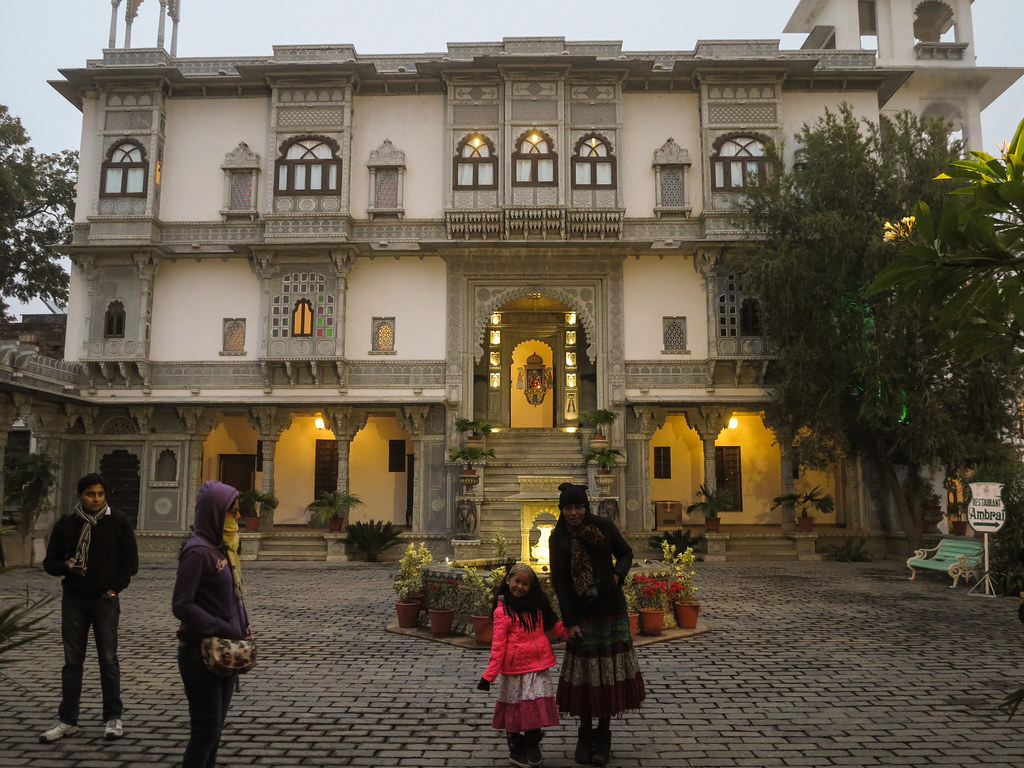 IMG_0480_edited by Triangle Golden 007, on Flickr
IMG_0480_edited by Triangle Golden 007, on Flickr
How about that for ambiance?
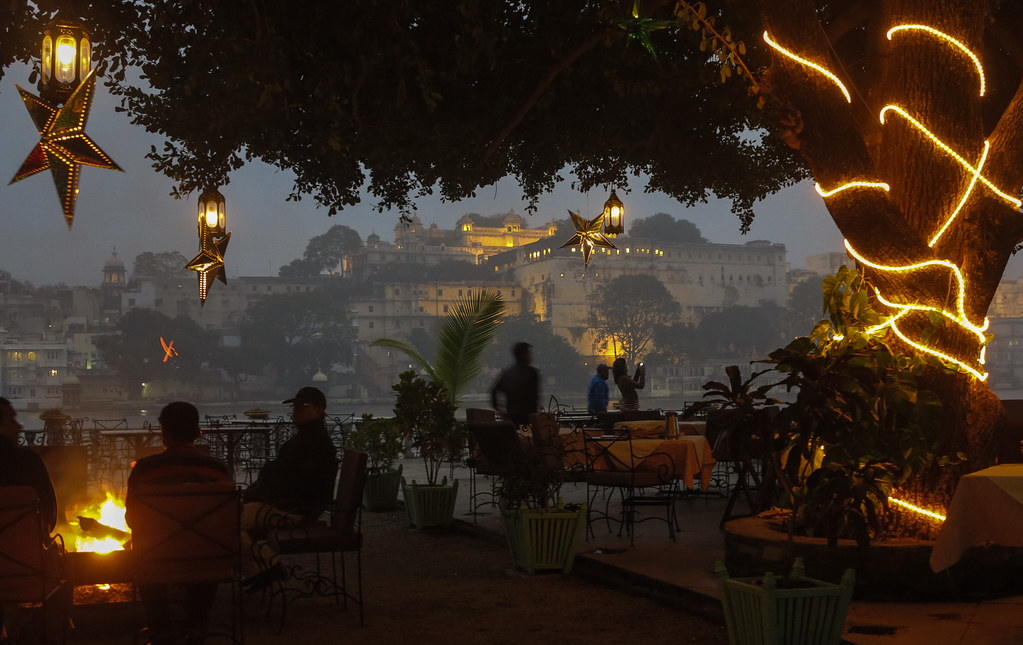 IMG_0483_edited by Triangle Golden 007, on Flickr
IMG_0483_edited by Triangle Golden 007, on Flickr
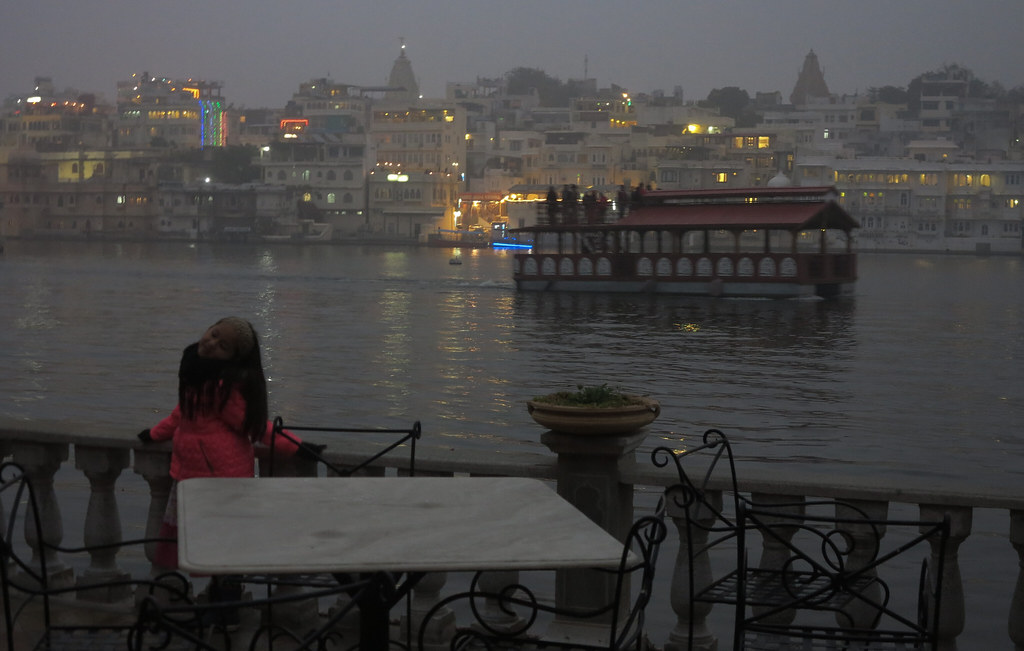 IMG_0488_edited by Triangle Golden 007, on Flickr
IMG_0488_edited by Triangle Golden 007, on Flickr
Great service and great food – a 10/10
 IMG_0491_edited by Triangle Golden 007, on Flickr
IMG_0491_edited by Triangle Golden 007, on Flickr
The Lake Palace was built in 1743-1746. It is made of marble and is situated on Jag Niwas island in Lake Pichola. It was originally built as a royal summer palace, but is now a luxury 5 Star hotel, operating under the “Taj Hotels Resorts and Palaces” banner.
The Udai Hotel in Udaipur, one of the top hotels in the city, Rooms start at around 6,000 rupees a night
Time to push on for Pushkar, a quick look around the beautiful city of Udaipur on the way out, one of the ancient temples below
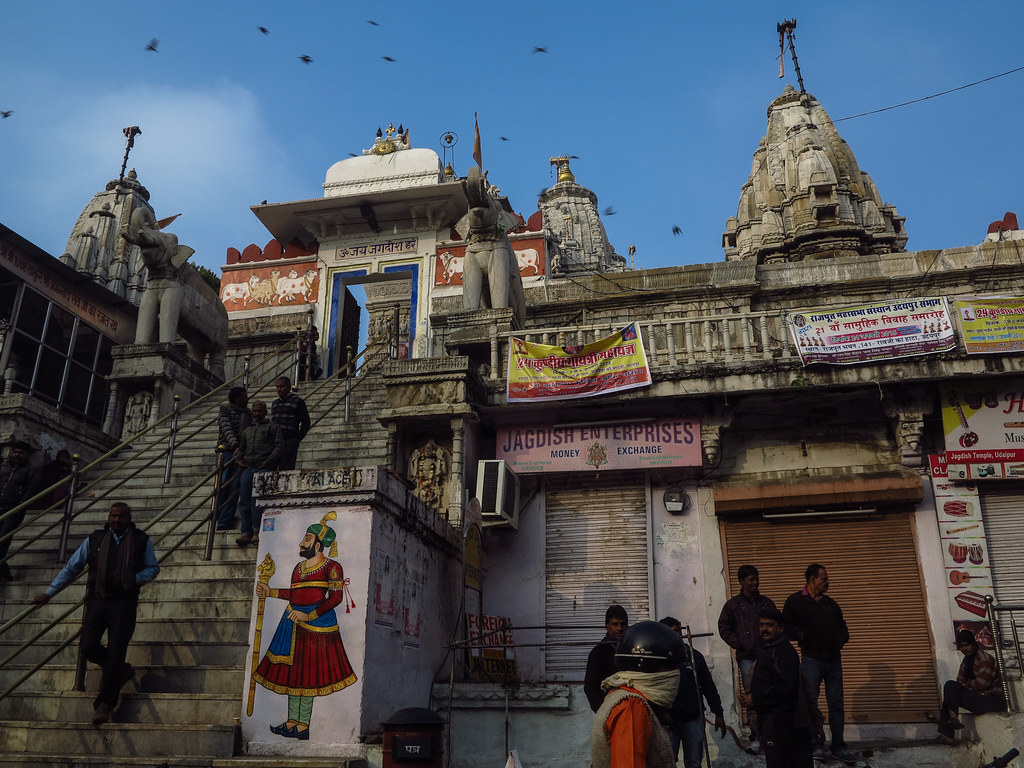 IMG_0494_edited by Triangle Golden 007, on Flickr
IMG_0494_edited by Triangle Golden 007, on Flickr
Entrance to the Udaipur Royal palace
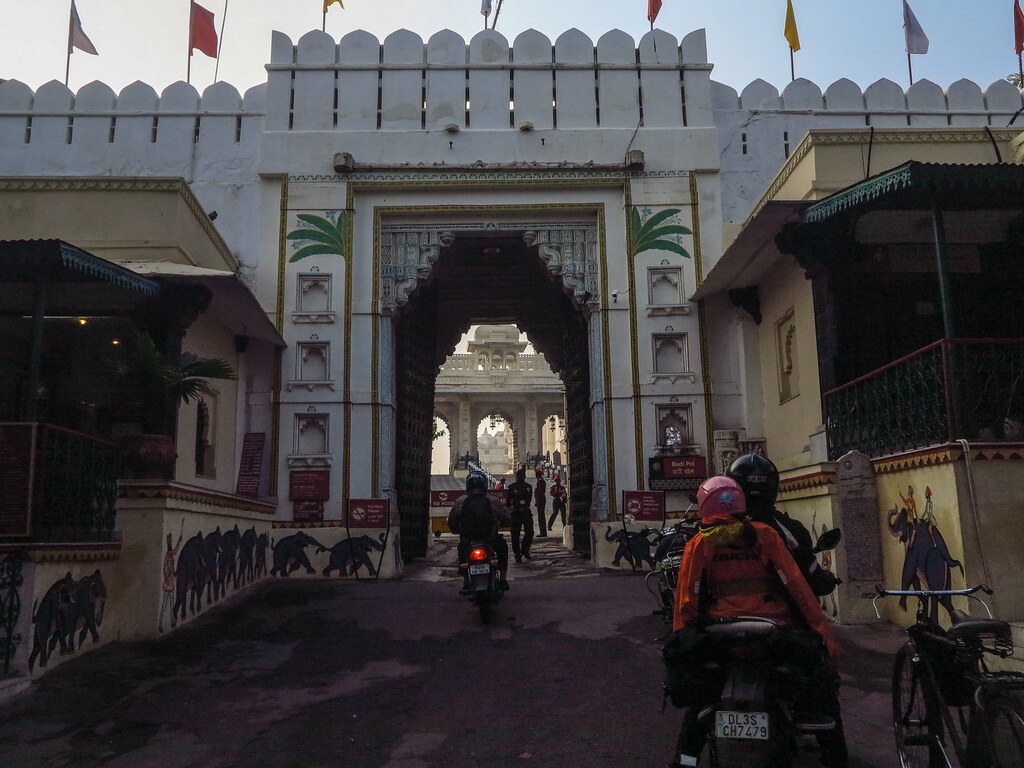 IMG_0495_edited by Triangle Golden 007, on Flickr
IMG_0495_edited by Triangle Golden 007, on Flickr
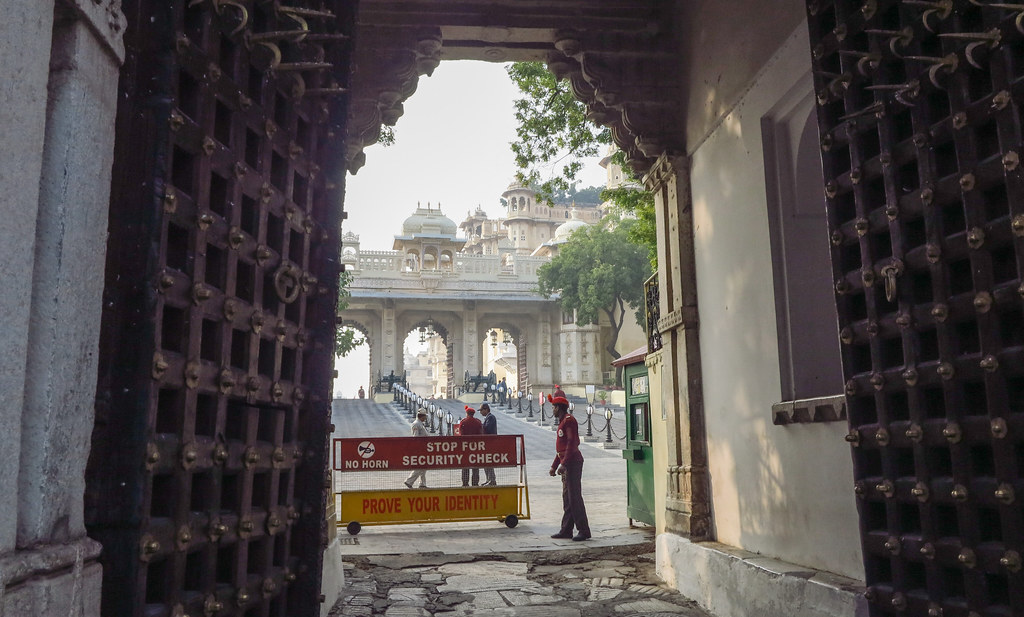 IMG_0496_edited by Triangle Golden 007, on Flickr
IMG_0496_edited by Triangle Golden 007, on Flickr
Real high security around all of the places of interest. Several times we were asked for ID
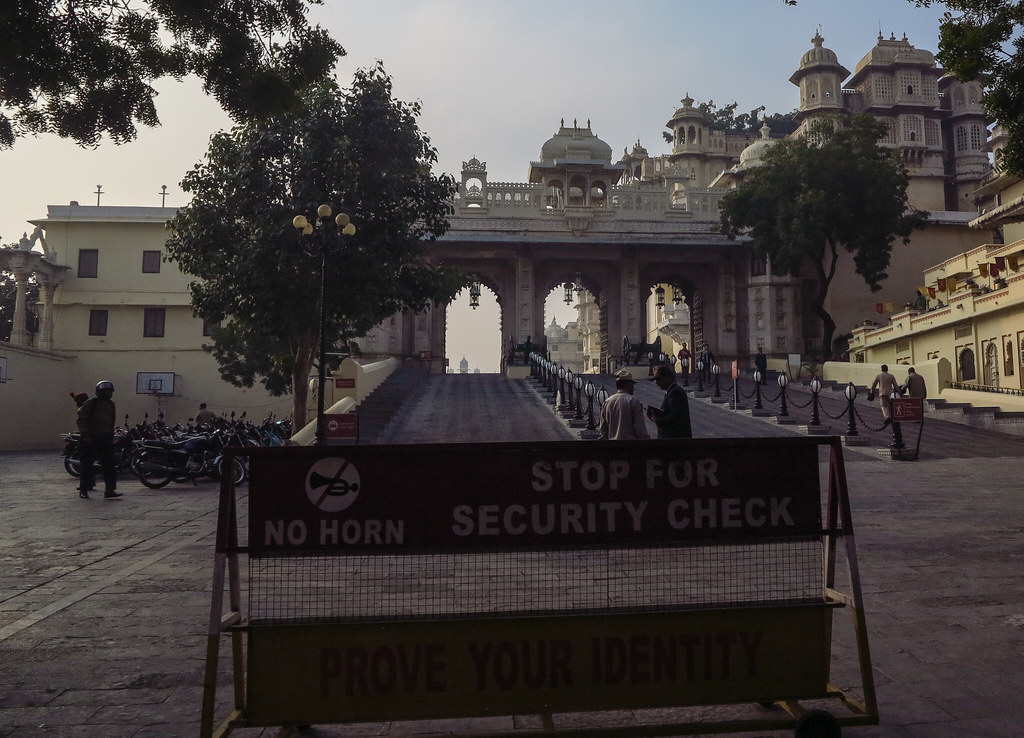 IMG_0497_edited by Triangle Golden 007, on Flickr
IMG_0497_edited by Triangle Golden 007, on Flickr
 IMG_0499_edited by Triangle Golden 007, on Flickr
IMG_0499_edited by Triangle Golden 007, on Flickr
Huge green chillies “tempurered”
 IMG_0503_edited by Triangle Golden 007, on Flickr
IMG_0503_edited by Triangle Golden 007, on Flickr
More beautiful temples on the road to Pushkar
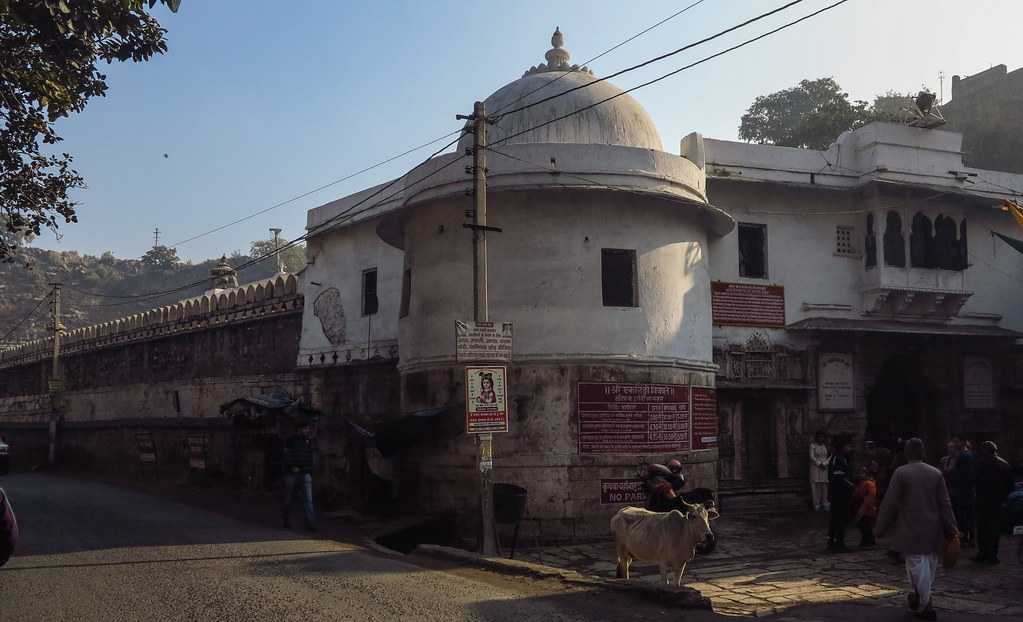 IMG_0504_edited by Triangle Golden 007, on Flickr
IMG_0504_edited by Triangle Golden 007, on Flickr
Lunch
 IMG_0506_edited by Triangle Golden 007, on Flickr
IMG_0506_edited by Triangle Golden 007, on Flickr
Chipatti making
 IMG_0510_edited by Triangle Golden 007, on Flickr
IMG_0510_edited by Triangle Golden 007, on Flickr
Fresh palak paneer – spinach & cream/ milk with cubes of cottage cheese
 IMG_0512_edited by Triangle Golden 007, on Flickr
IMG_0512_edited by Triangle Golden 007, on Flickr
Delicious!
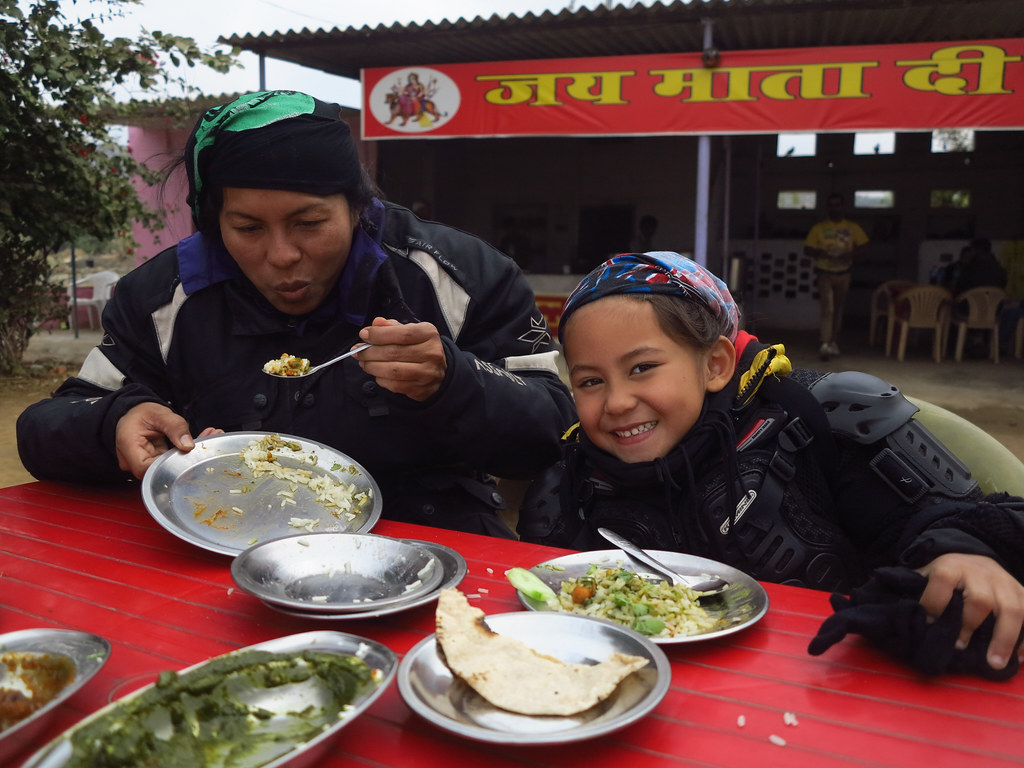 IMG_0513_edited by Triangle Golden 007, on Flickr
IMG_0513_edited by Triangle Golden 007, on Flickr
Masala tea from home made clay cups
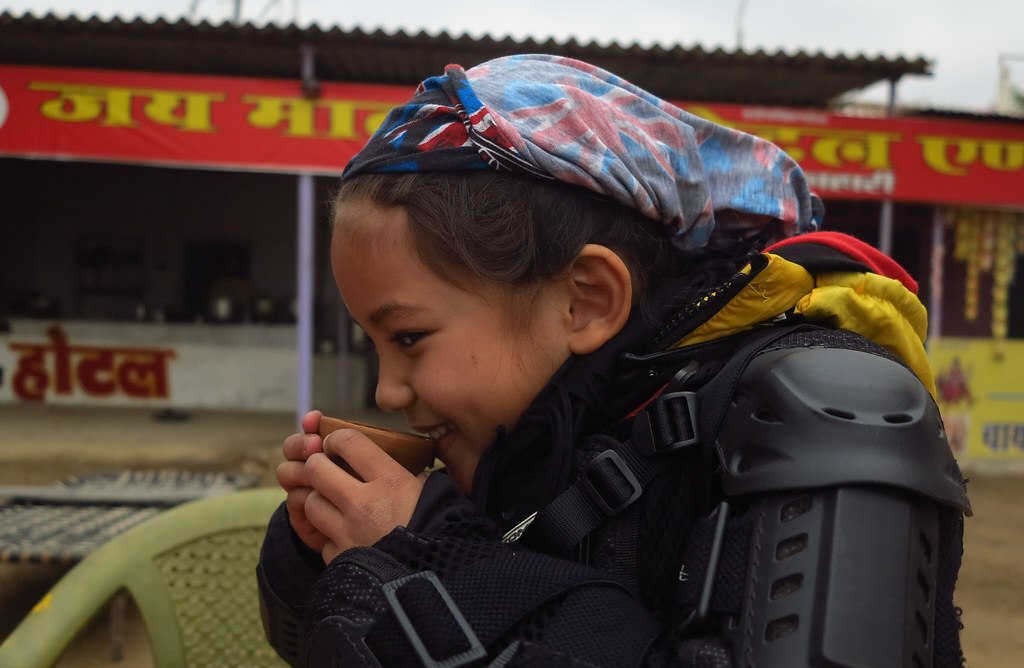 IMG_0514_edited by Triangle Golden 007, on Flickr
IMG_0514_edited by Triangle Golden 007, on Flickr
Approaching Pushkar another awesome temple
Pushkar
Lots of great value hotels and great eating. Pushkar makes a nice break from being off the beaten path for a day or so, we really liked it. It’s also one of the oldest cities in India, some Indians say the city is 10,000 years old. Even good pizza here.
The date of its actual founding is not known, but legend associates Brahma with its creation.[citation needed]
According to legend, Brahma was in search of a place for Mahayagna and he found this place suitable. After a long time, Brahma came to known that a demon, Vajranash, was killing people here so the Lord intoned a mantra on a lotus flower and killed the demon. During this process the parts of flower fell on three places which were later known as Jyaistha, Madhya and Kanistha Pushkar. After this Brahma performed a yagna to protect this place from demons. The consort of Brahma, Saraswati, were needed to offer Ahuti for the yagna but she was not there that time so Gayatri, a Gurjar girl, was married to brahma and performned yagna. This act made first wife of Brahma, Saraswati, angry and she cursed Brahma saying that he would be worshiped in Pushkar only.[3][4]
The Mahabharata says that while laying down a programme for Maharaja Yudhishthara’s travel, “Maharaja after entering the Jungles of Sind and crossing the small rivers on the way should bathe in Pushkara”. And, as per Vaman Purana,Prahlada on his pilgrimage to holy places visited Pushkarayana.[citation needed]
A Gurjara Pratihara ruler of Mandore, Nahadarava, restored this tirtha in the seventh century. He got the place cleared and the lake restored by making an embankment on the side of the river Luni. He rebuilt old palaces and built twelve dharmashalas (resting places) and ghats on three sides of the lake.[citation needed]
According to Rajputana Gazetteer Pushkar was held by Chechi Gurjars until about 700 years ago.Later Some shrines were occupied by Kanphati Jogis.[5]
There are still priests from the Gurjar community in Pushkar temple, known as Bhopas.[6]
The sage Parasara is said to have been born here. His descendants, called Parasara Brahamanas, are found in Pushkar and the surrounding area. The famous temple of Jeenmata has been cared for by Parasara Brahmans for the last 1,000 years.
It is also the venue of the annual Pushkar Camel Fair.[citation needed] In 1901, the town was part of the Rajputana Agency had a population of 3,831.[7]
Pushkar – Wikipedia, the free encyclopedia
It has a reputation of attracting ganga-smoking Isrealies and we did see plenty of them while we were there. Hotels almost beg for you to stay as they are so plentiful, all great value and well run. WIFI worked well here unlike most other places.
We scored this room real cheap in a huge hotel
 IMG_0516_edited by Triangle Golden 007, on Flickr
IMG_0516_edited by Triangle Golden 007, on Flickr
The place really has the feel of an old trading town, busy and noise everywhere, of course great old temples
 IMG_0517_edited by Triangle Golden 007, on Flickr
IMG_0517_edited by Triangle Golden 007, on Flickr
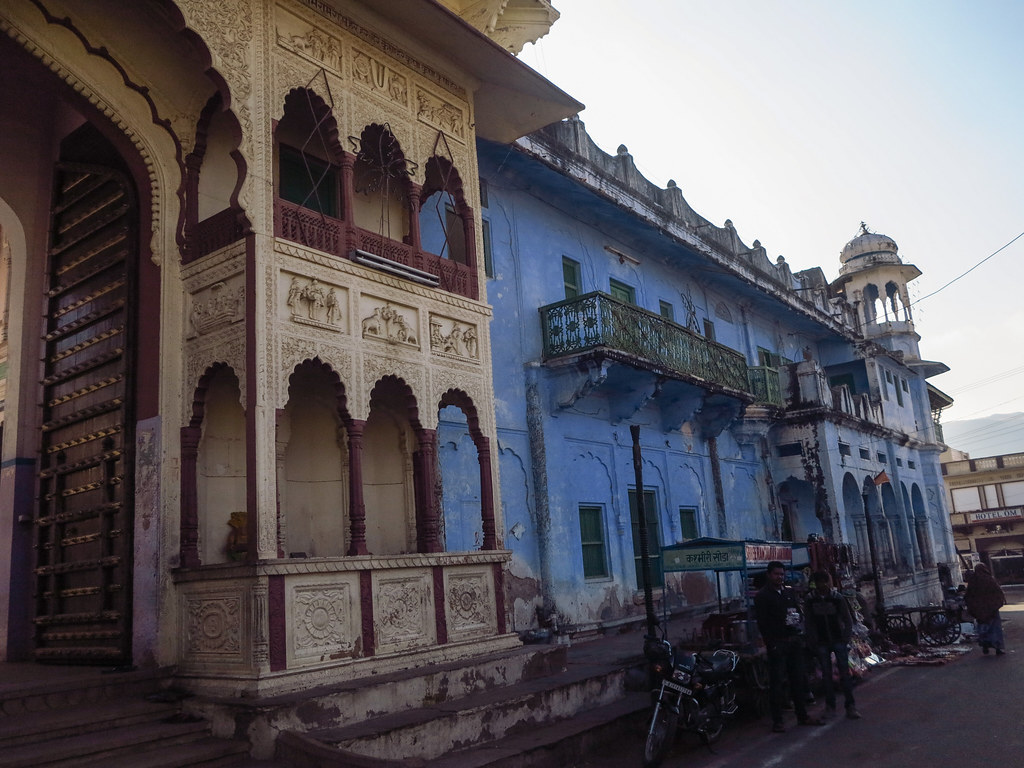 IMG_0518_edited by Triangle Golden 007, on Flickr
IMG_0518_edited by Triangle Golden 007, on Flickr
The holy Pushkar lake is spectaular with the bathing Hindi’s
Pushkar Lake – The prime attraction of Pushkar is the Pushkar Lake which is considered sacred like the Mansarovar Lake in Tibet. Pushkar has become a place of Hindu pilgrimage because of this holy lake. Legend has it that this lake was consecrated to Lord Brahma, the creator of the universe when a lotus dropped from his hand into the vale and a lake emerged in that place.
Into the huge city of Jiapur and the main road in takes you right passed the pink stoned, Hawa Mahal Palace that was constructed in 1799 AD. Legend has it, that it was constructed for the women of the Royal household, so that they could people watch, without being viewed themselves.
 IMG_0525_edited by Triangle Golden 007, on Flickr
IMG_0525_edited by Triangle Golden 007, on Flickr
its Jiapur’s number 1 attraction, very unique
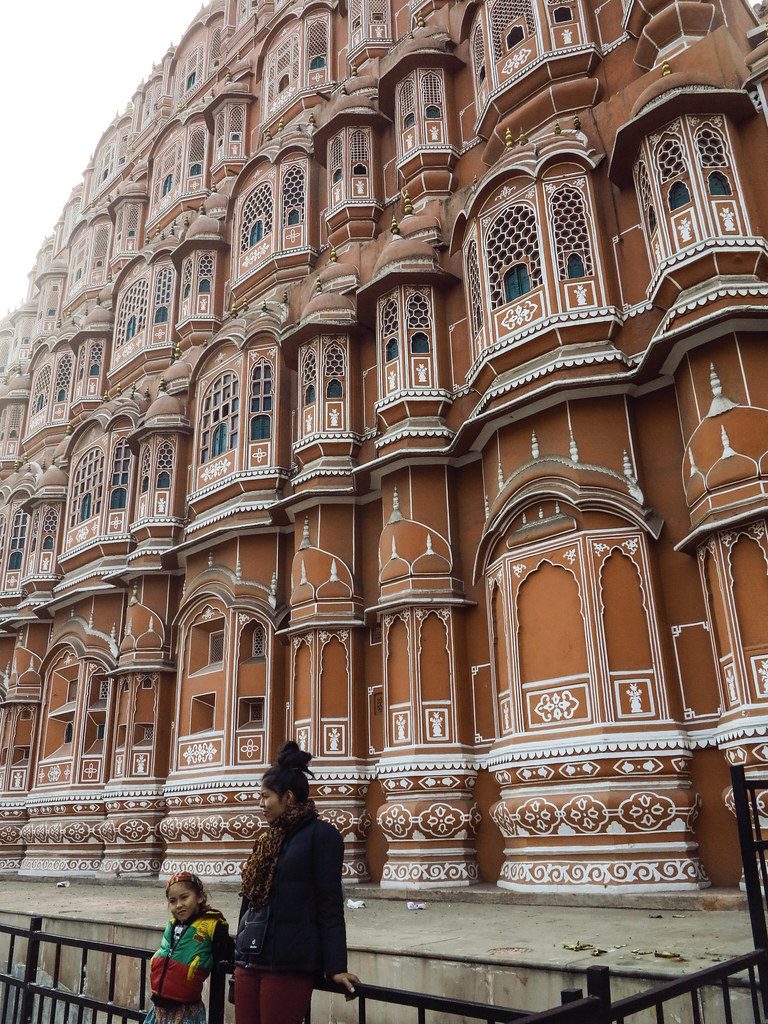 IMG_0531_edited by Triangle Golden 007, on Flickr
IMG_0531_edited by Triangle Golden 007, on Flickr
 IMG_0532_edited by Triangle Golden 007, on Flickr
IMG_0532_edited by Triangle Golden 007, on Flickr
A snake charmer sitting outside. look closely you can see the cobra’s head
 IMG_0534_edited by Triangle Golden 007, on Flickr
IMG_0534_edited by Triangle Golden 007, on Flickr
A monstrous Royal Palace in Jiapur
 IMG_0543_edited by Triangle Golden 007, on Flickr
IMG_0543_edited by Triangle Golden 007, on Flickr
Jaipur is the famous city and capital of Rajasthan. It was founded on 18 November 1727 by Maharaja Sawai Jai Singh II, the ruler of Amber, after whom the city has been named. Jaipur is known as the Pink City of India because of the colour used exclusively in the walled city.
The city was built on the principles of Shilpa Shastra, the science of Indian Architecture. The city was divided into nine blocks. Two of which contained the state buildings and palaces, while the remaining seven were allotted to the public. Huge fortification walls were built, along with seven strong gates. The directions of each street and market are east to West and North to South. The Eastern gate is called Suraj (Sun) Pol, while the Western gate is called Chand (Moon) Pol. There are three gates facing East, West, and a Northern gate (known as Zorawar Singh gate) which faces toward the ancestral capital of Amber.
The capital of Rajasthan, Jaipur is rich in history and culture. Here the past comes alive in magnificent forts and palaces. The bustling bazaars of Jaipur, famous for jewellery, fabric and shoes, possess a timeless quality and are surely a treasure-trove for the shoppers. This fascinating city with its romantic charm takes you to an epoch of royalty and tradition.
District Administration Jaipur, District Computerisation Jaipur, District Profile Jaipur
 IMG_0547_edited by Triangle Golden 007, on Flickr
IMG_0547_edited by Triangle Golden 007, on Flickr
 IMG_0550_edited by Triangle Golden 007, on Flickr
IMG_0550_edited by Triangle Golden 007, on Flickr
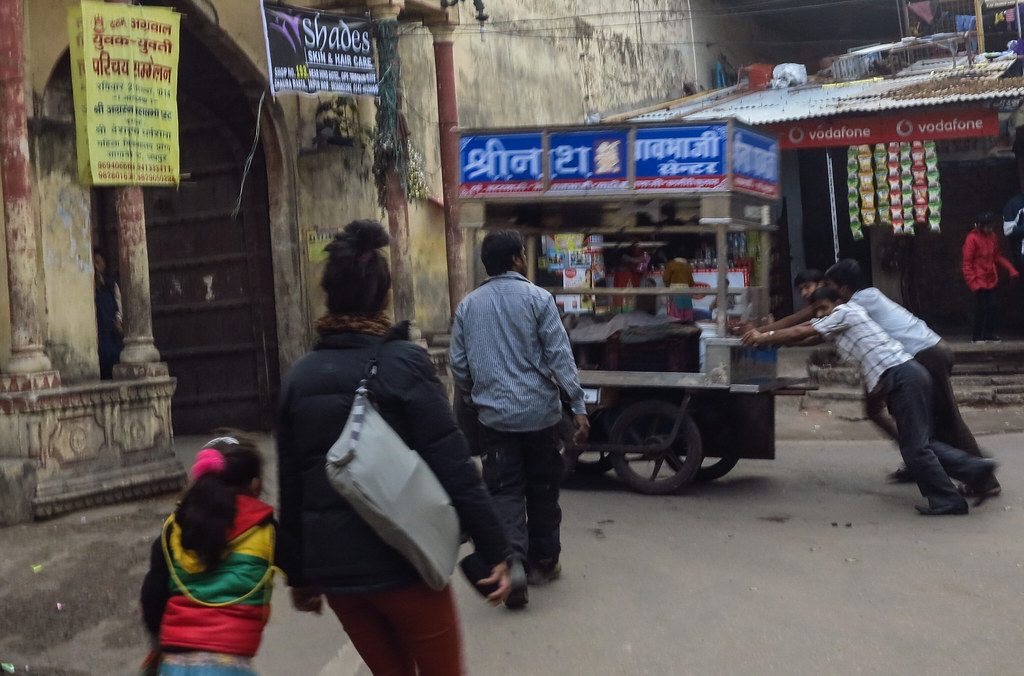 IMG_0551_edited by Triangle Golden 007, on Flickr
IMG_0551_edited by Triangle Golden 007, on Flickr
Ancient temple in Jiapur
The are some pretty special, ancient, forts in the mountains around Jiapur, you need at least one rest day to see them
 IMG_0577_edited by Triangle Golden 007, on Flickr
IMG_0577_edited by Triangle Golden 007, on Flickr
Ancient bathing area at the Jiapur Fort
 IMG_0599_edited by Triangle Golden 007, on Flickr
IMG_0599_edited by Triangle Golden 007, on Flickr
This was up there as one of the best forts of the trip, dont miss Jiapur
 IMG_0608_edited by Triangle Golden 007, on Flickr
IMG_0608_edited by Triangle Golden 007, on Flickr
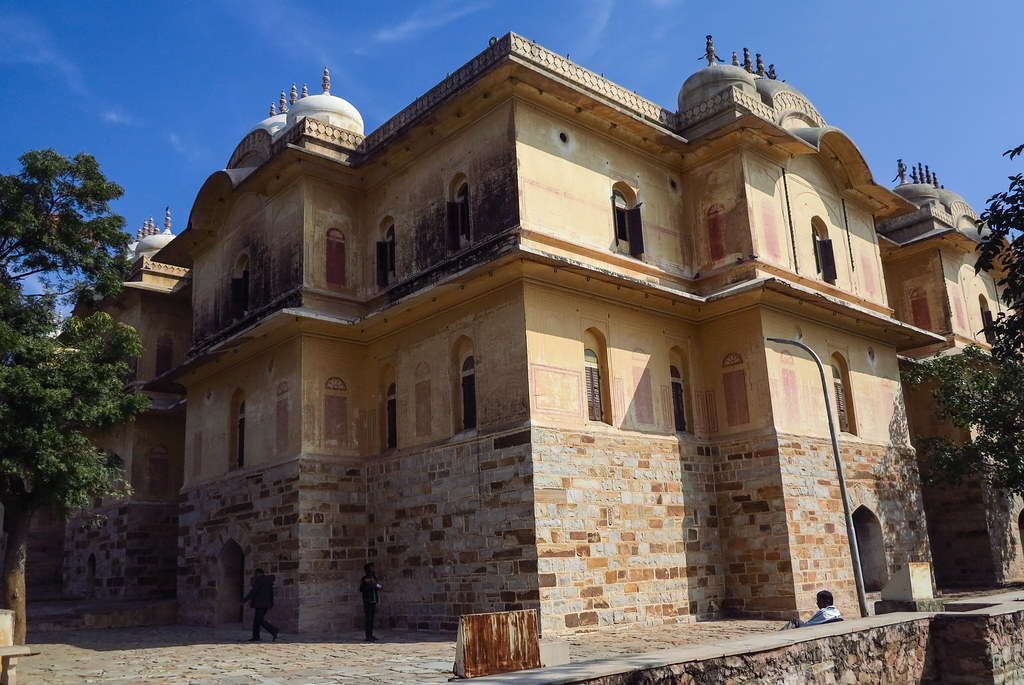 IMG_0614_edited by Triangle Golden 007, on Flickr
IMG_0614_edited by Triangle Golden 007, on Flickr
20 minute ride, up the next mountain and another Jiapur fort
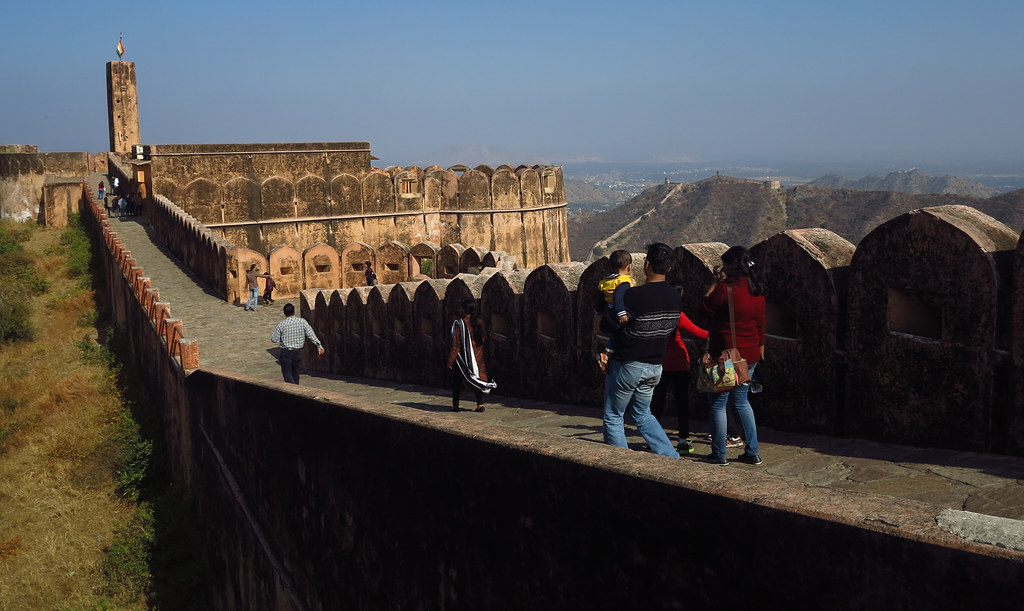 IMG_0620_edited by Triangle Golden 007, on Flickr
IMG_0620_edited by Triangle Golden 007, on Flickr
This fort has the largest wheeled cannon in the world, the cannon weighs 50 tons
 IMG_0623_edited by Triangle Golden 007, on Flickr
IMG_0623_edited by Triangle Golden 007, on Flickr
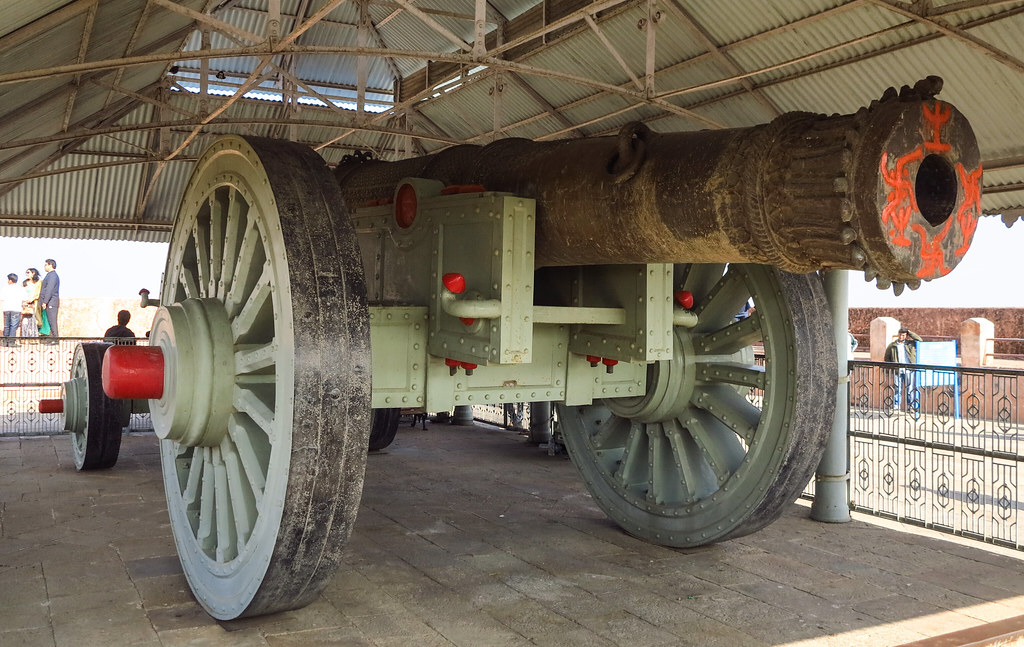 IMG_0627_edited by Triangle Golden 007, on Flickr
IMG_0627_edited by Triangle Golden 007, on Flickr
Look at the guy walking next to it for size perspective
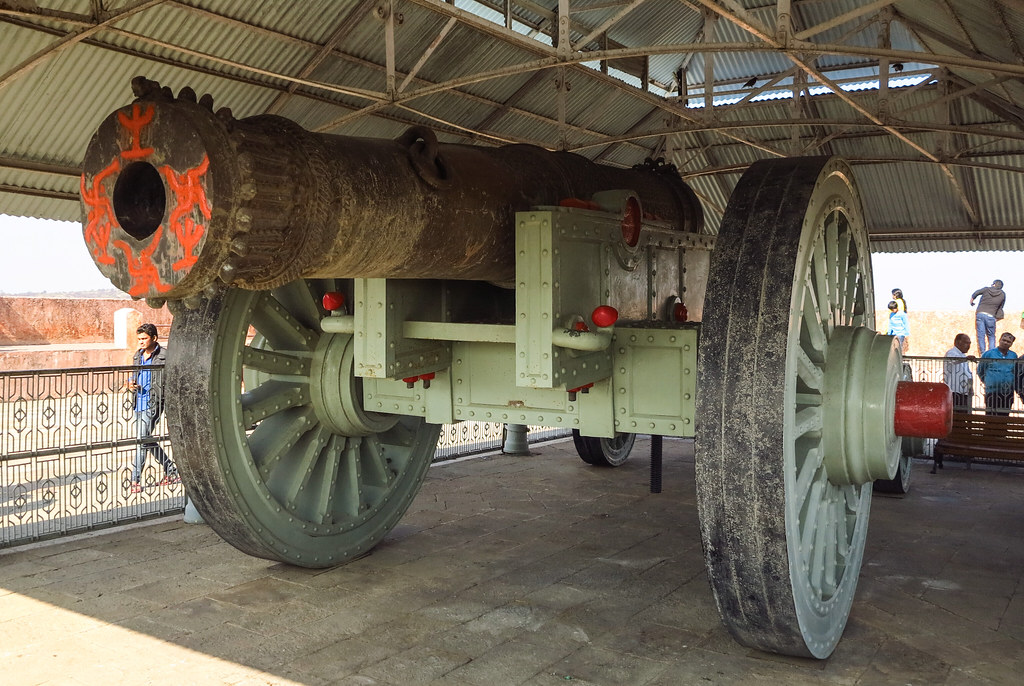 IMG_0630_edited by Triangle Golden 007, on Flickr
IMG_0630_edited by Triangle Golden 007, on Flickr
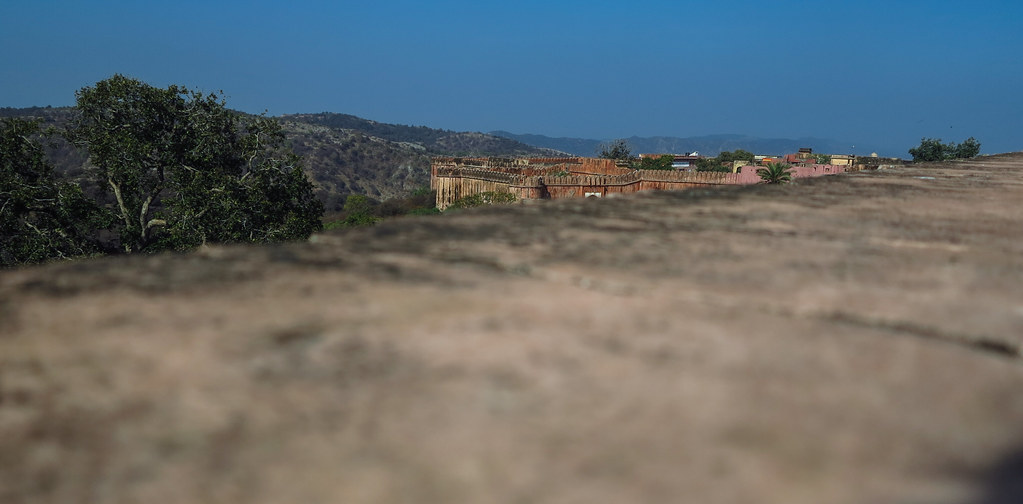 IMG_0631_edited by Triangle Golden 007, on Flickr
IMG_0631_edited by Triangle Golden 007, on Flickr
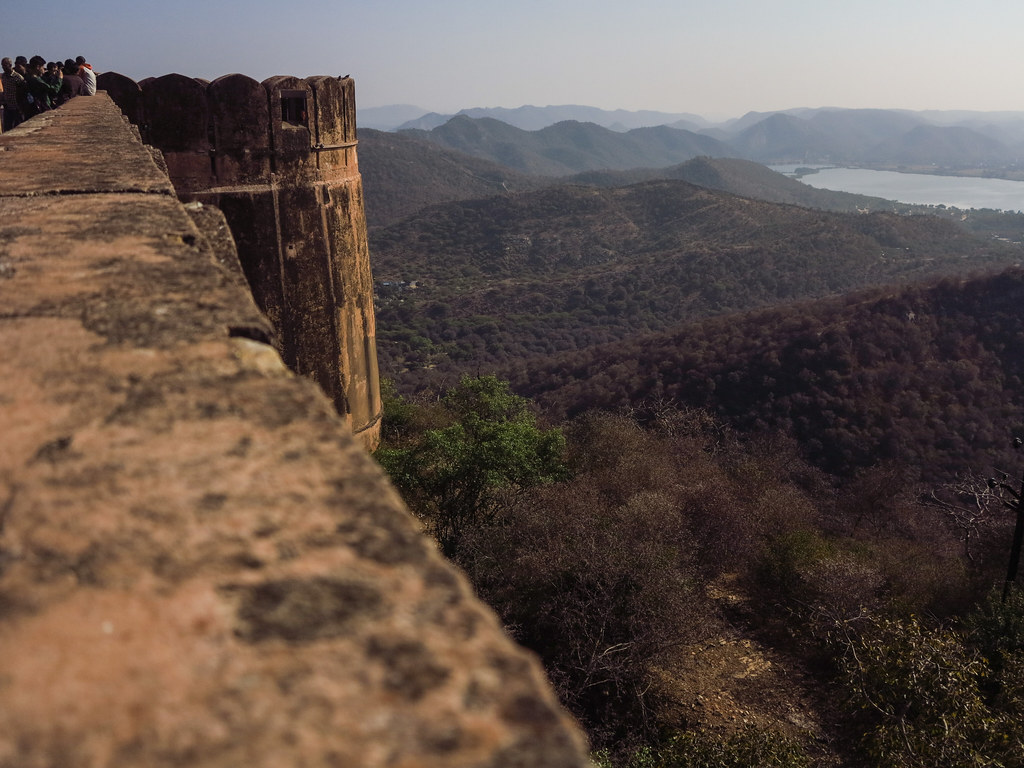 IMG_0632_edited by Triangle Golden 007, on Flickr
IMG_0632_edited by Triangle Golden 007, on Flickr
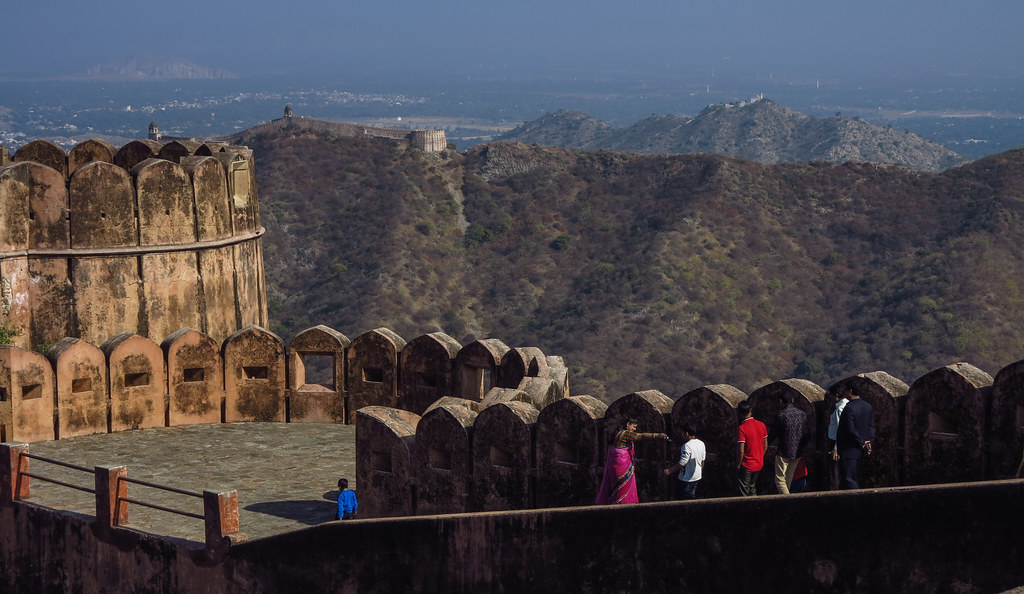 IMG_0634_edited by Triangle Golden 007, on Flickr
IMG_0634_edited by Triangle Golden 007, on Flickr
Getting a bit forted out by now, you could really do with 2 days for for exploring in Jiapur
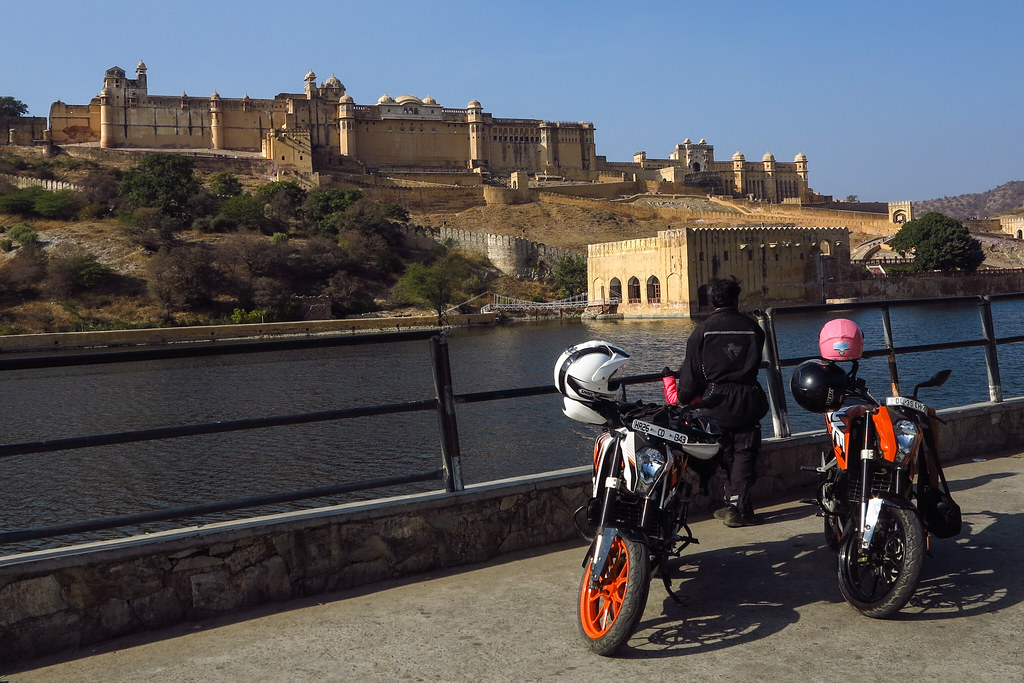 IMG_0644_edited by Triangle Golden 007, on Flickr
IMG_0644_edited by Triangle Golden 007, on Flickr
 IMG_0642_edited by Triangle Golden 007, on Flickr
IMG_0642_edited by Triangle Golden 007, on Flickr
A cold, ride, north to Agra, traffic now start to get heavy. The Taj Mahal is in Agra, which is about 4-5 hours south of Delhi
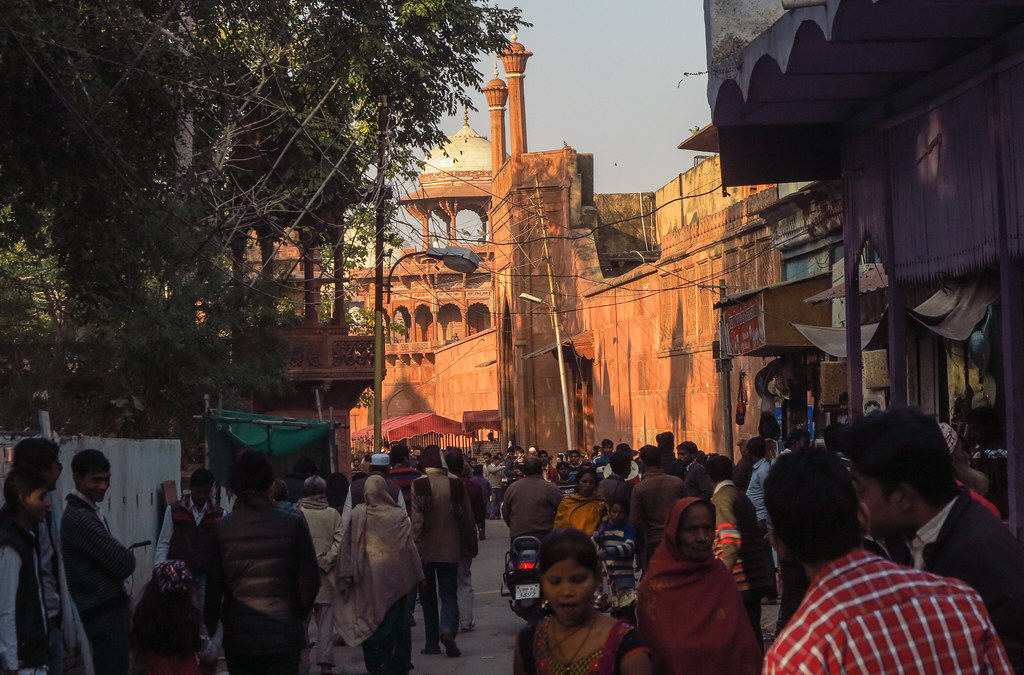 IMG_0648_edited by Triangle Golden 007, on Flickr
IMG_0648_edited by Triangle Golden 007, on Flickr
Entrance for Indian’s is 40 Rupees, foreigners 700 Rupees!!
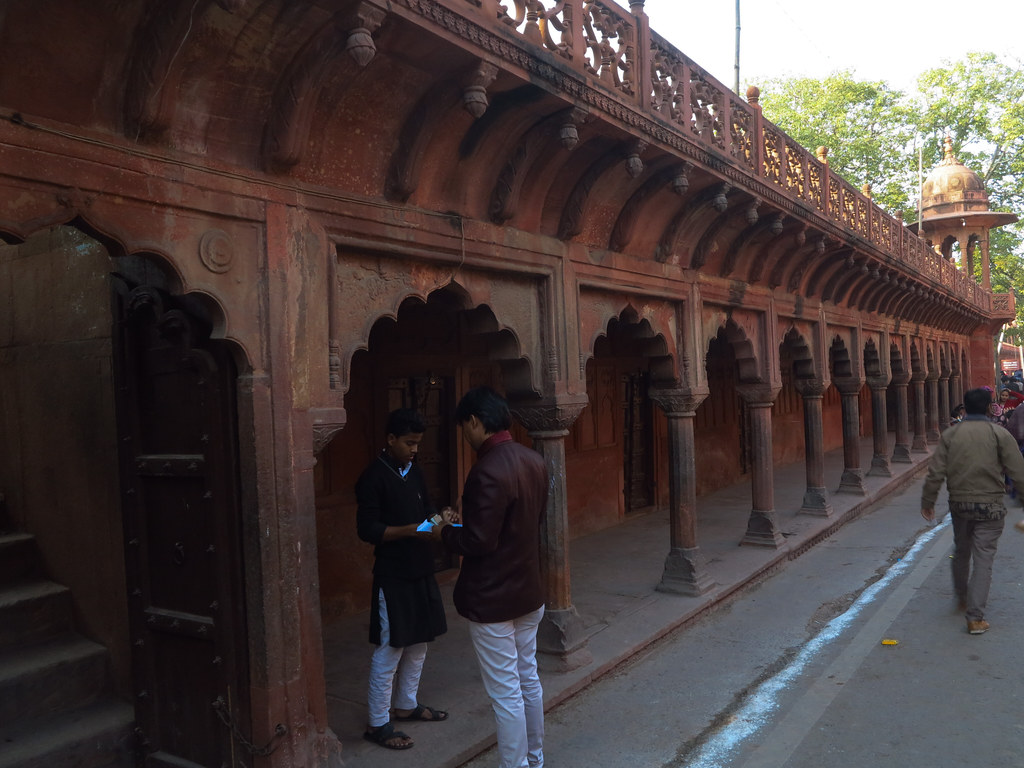 IMG_0651_edited by Triangle Golden 007, on Flickr
IMG_0651_edited by Triangle Golden 007, on Flickr
Entrance area
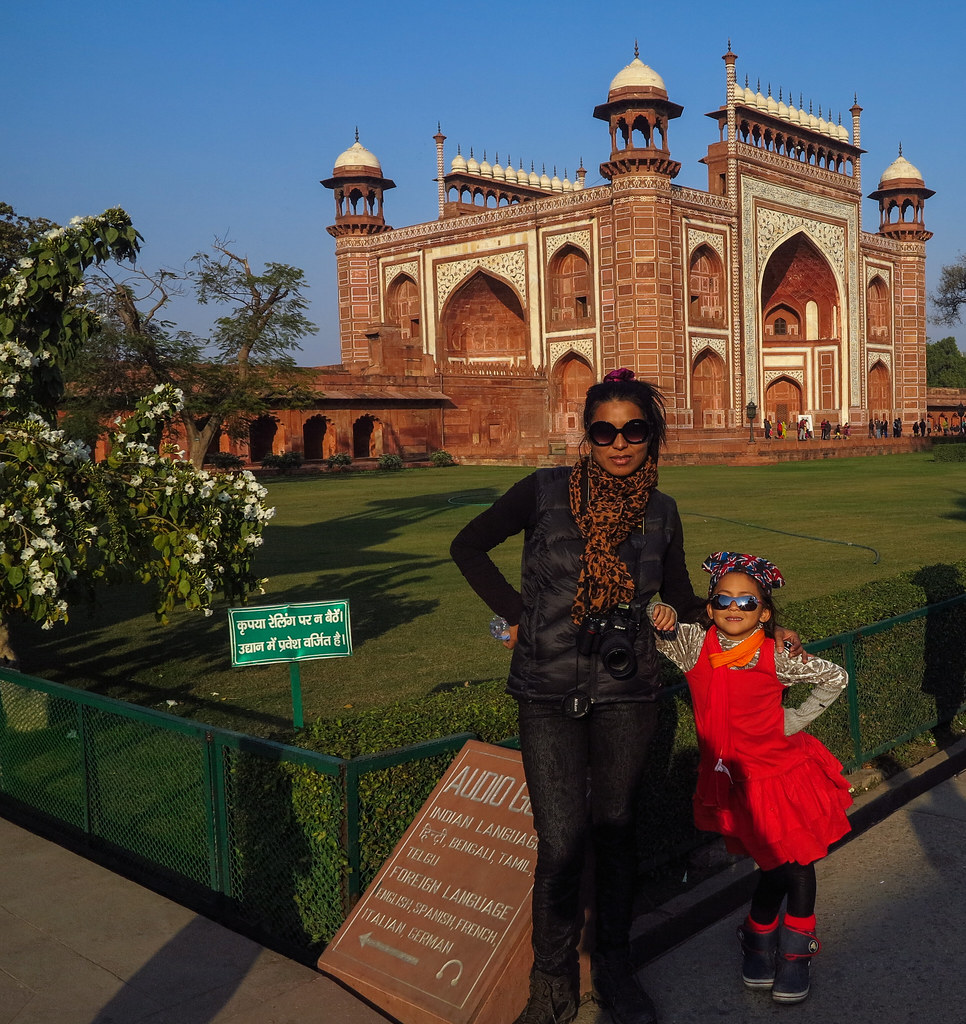 IMG_0652_edited by Triangle Golden 007, on Flickr
IMG_0652_edited by Triangle Golden 007, on Flickr
Around the corner and there you have it – stunning
 IMG_0653_edited by Triangle Golden 007, on Flickr
IMG_0653_edited by Triangle Golden 007, on Flickr
 IMG_0655_edited by Triangle Golden 007, on Flickr
IMG_0655_edited by Triangle Golden 007, on Flickr
Beauty
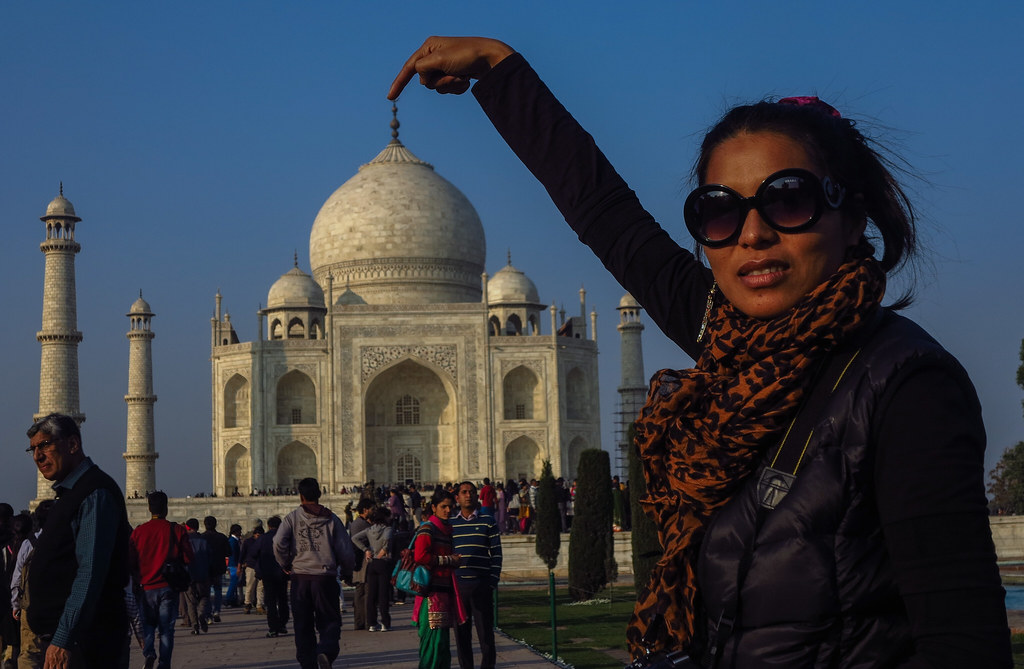 IMG_0669_edited by Triangle Golden 007, on Flickr
IMG_0669_edited by Triangle Golden 007, on Flickr
Took a few goes to get that right
 IMG_0672_edited by Triangle Golden 007, on Flickr
IMG_0672_edited by Triangle Golden 007, on Flickr
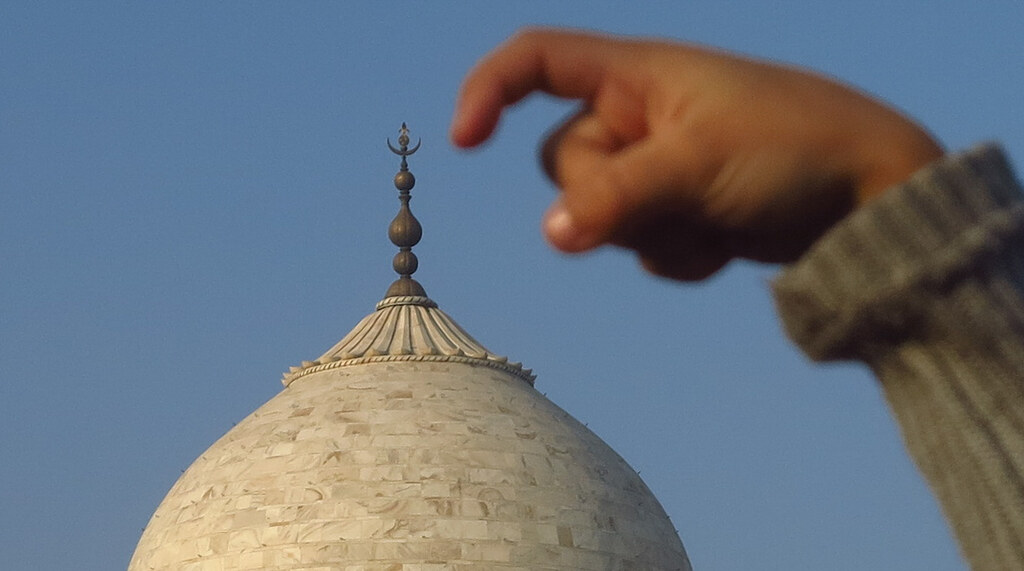 IMG_0673_edited by Triangle Golden 007, on Flickr
IMG_0673_edited by Triangle Golden 007, on Flickr
Agra street food consisted of fried potato
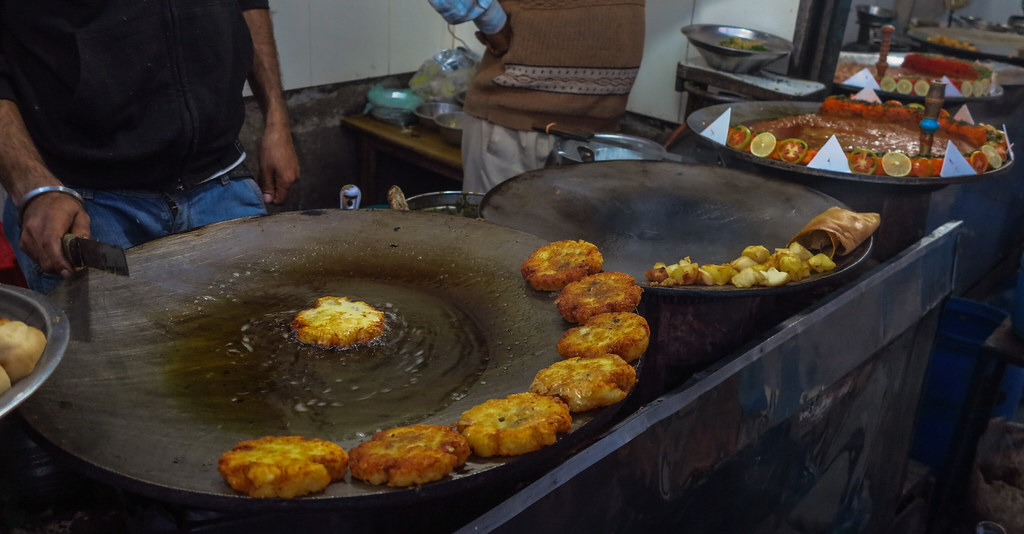 IMG_0686_edited by Triangle Golden 007, on Flickr
IMG_0686_edited by Triangle Golden 007, on Flickr
Dairy based stuff
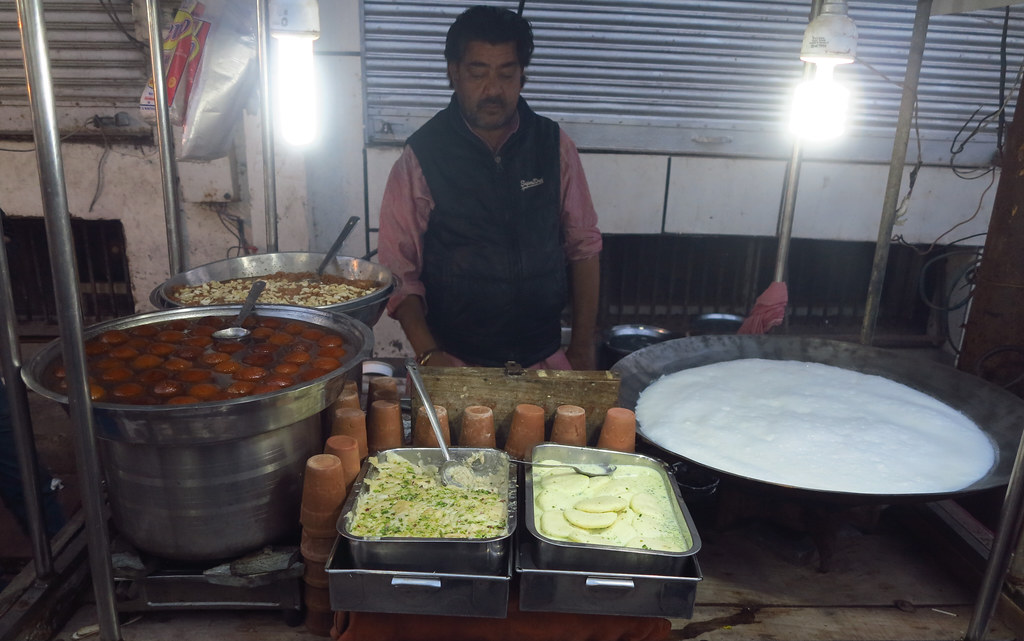 IMG_0687_edited by Triangle Golden 007, on Flickr
IMG_0687_edited by Triangle Golden 007, on Flickr
It was explained to me that this was bread based
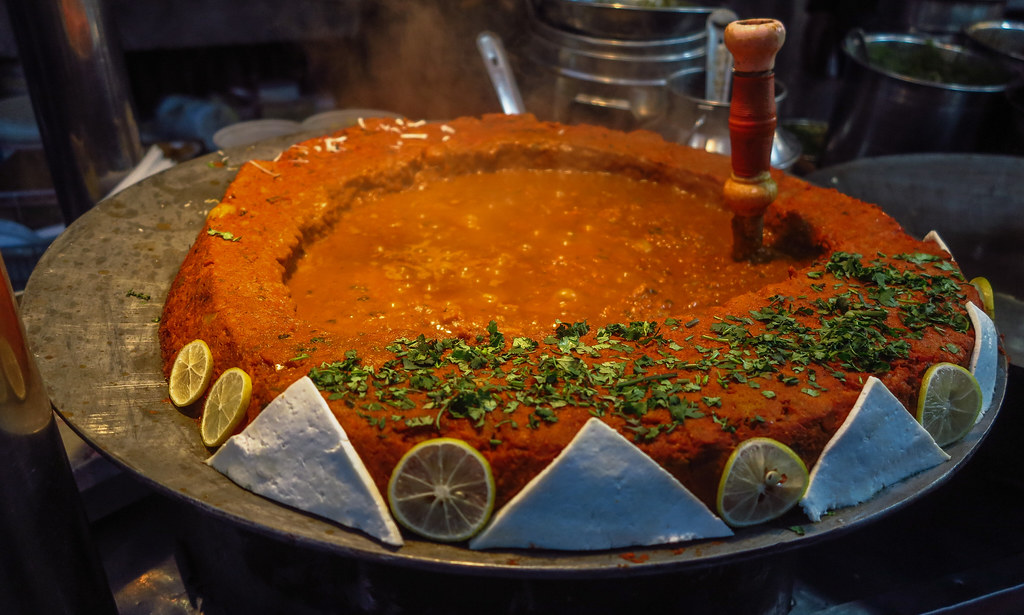 IMG_0688_edited by Triangle Golden 007, on Flickr
IMG_0688_edited by Triangle Golden 007, on Flickr
Funky temple on the outskirts of Delhi
 IMG_0698_edited by Triangle Golden 007, on Flickr
IMG_0698_edited by Triangle Golden 007, on Flickr
We managed to find one of the big KTM dealers on the way back into Delhi, they also of course are a Baja dealer (KTM’s Indian owner)
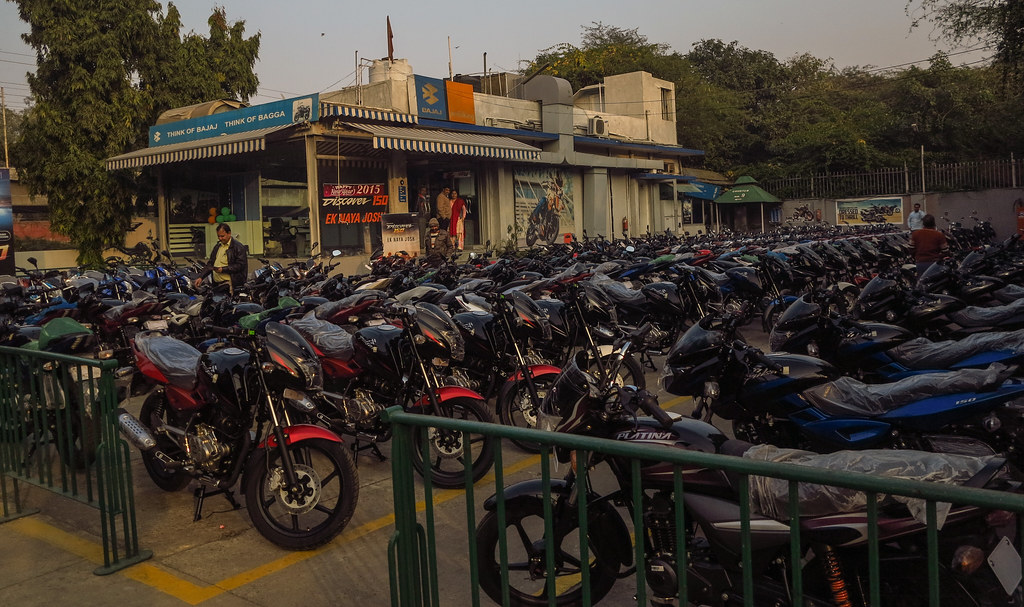 IMG_0700_edited by Triangle Golden 007, on Flickr
IMG_0700_edited by Triangle Golden 007, on Flickr
30 minutes more, then it was over. Those KTM’s looked after us damn well and were a blast to ride – The girls saying thank you
 IMG_0703_edited by Triangle Golden 007, on Flickr
IMG_0703_edited by Triangle Golden 007, on Flickr
Time for them to be taken away and put back to sleep (only for a couple of months though)
The Rajasthan loop is one of the best Indian motorcycle tours you can do.
You can see some photo’s by clicking this link
We offer 2 motorcycle tours in India, click the links below for details on each:



